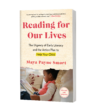By Chrysta Naron
Playing Sound Search is a delightful way for kids to learn letters and their sounds. Plus, this fun alphabet game engages children during days cooped up inside. They’ll crawl, climb, run, and spin looking for just the right items to match their letters.
Reading letters and practicing their corresponding sounds can sometimes feel a little abstract for kids. They can make the right sound when shown a letter on its own, but learning to isolate that same letter sound in a word—that’s tough. When children go around looking for something that starts with a specific sound, they have to really focus and break down the sounds in a word.
This easy at-home literacy activity gets kids to connect letter sounds to words, all while having the fun of solving a tiny mystery. What’s in your house that starts with B? Books, bottles, beds? How about looking for things that start with L? Lamps, legs, Legos? The list goes on!
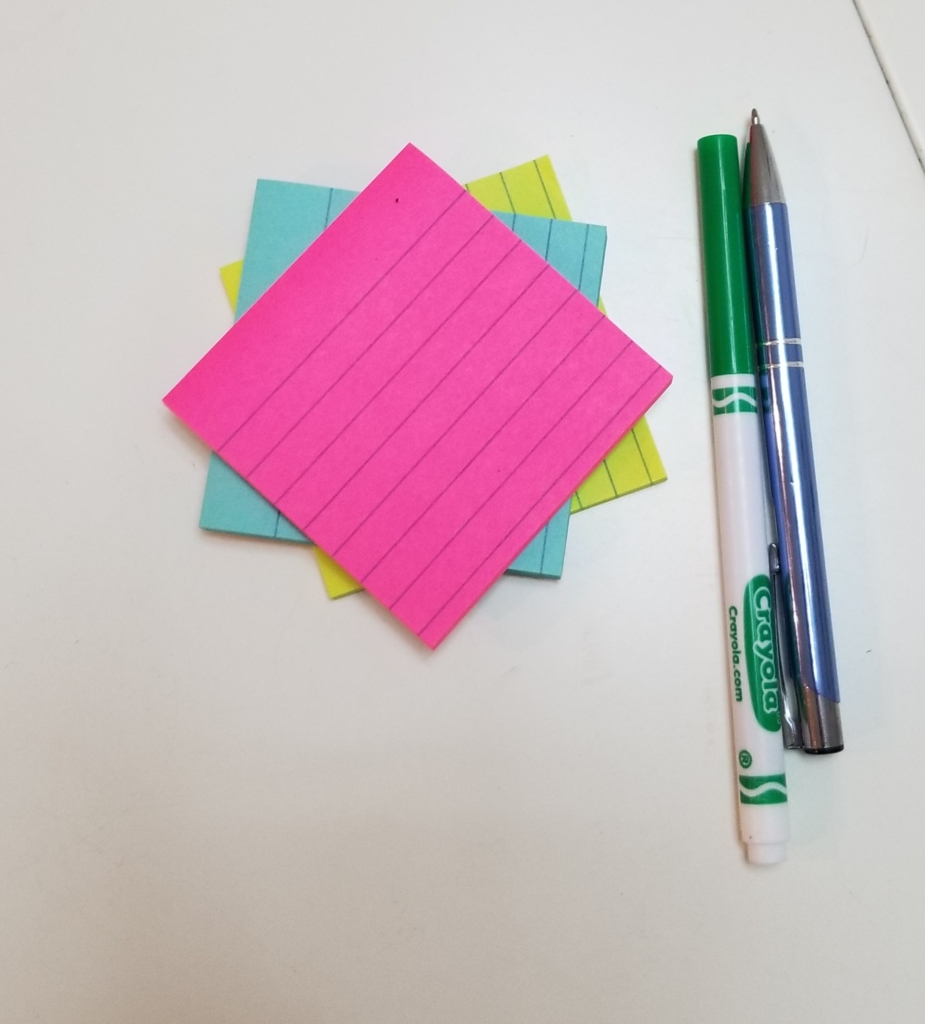
Materials Needed:
- Sticky notes
- Pen
Cost: ~$4 for sticky notes
Step 1: Choose a single letter at a time. I recommend choosing letters commonly found at the beginning of words, such as A, B, T or S.
Step 2: Write the letter on five sticky notes. Or better yet, help your child write it. For maximum learning, write the letter in different ways—capital and lower-case, even cursive if you want. This will help kids connect all the different letter shapes to its sound.
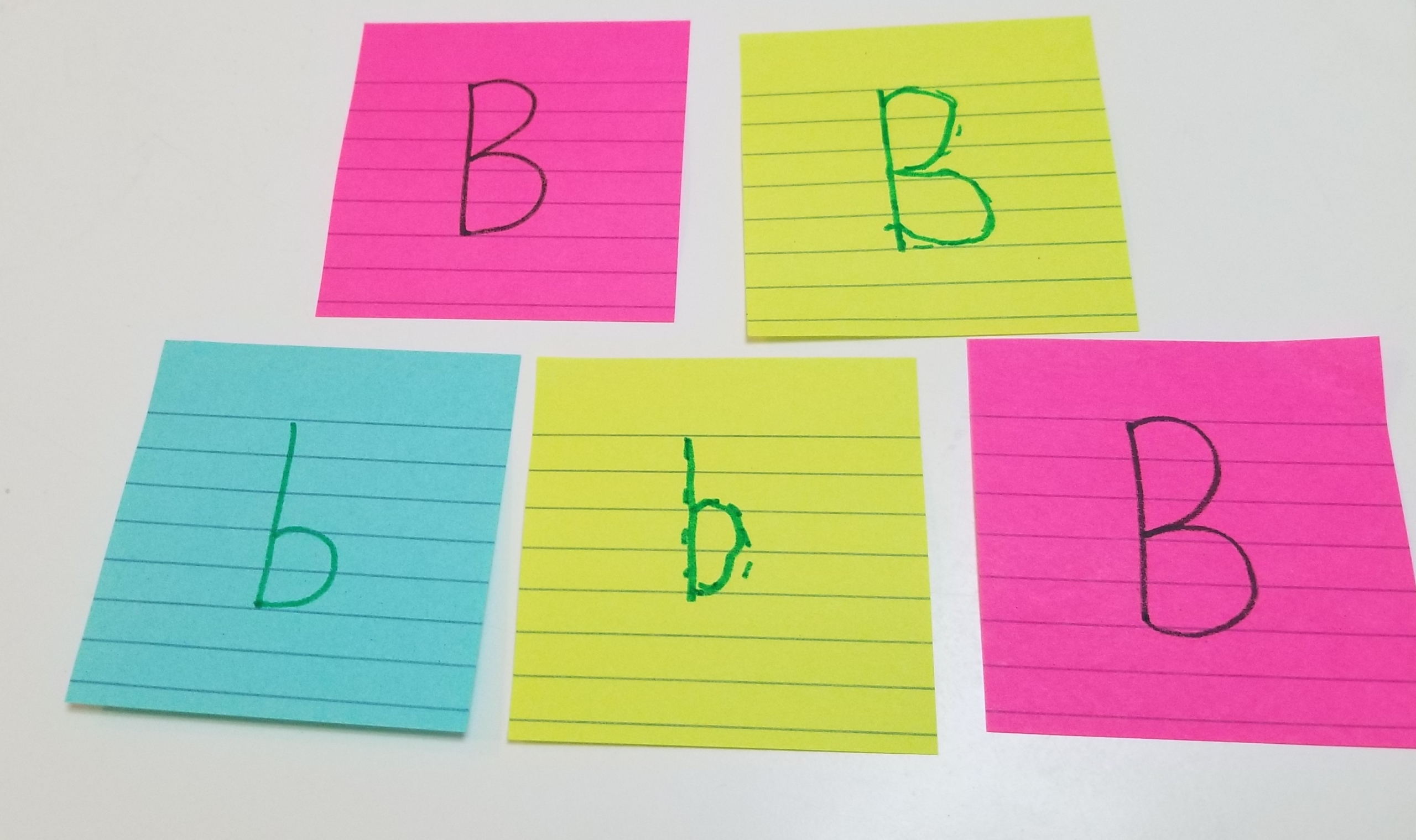
Step 3: Review the sound the letter makes. For vowels, you can review just the short vowel sound (e.g., A as in “apple”) or, if your child is ready for it, go over both sounds the vowel can make.
Step 4: Explore the house with your child to find items that begin with that sound. When they find one, they get to stick a sticky note on it!
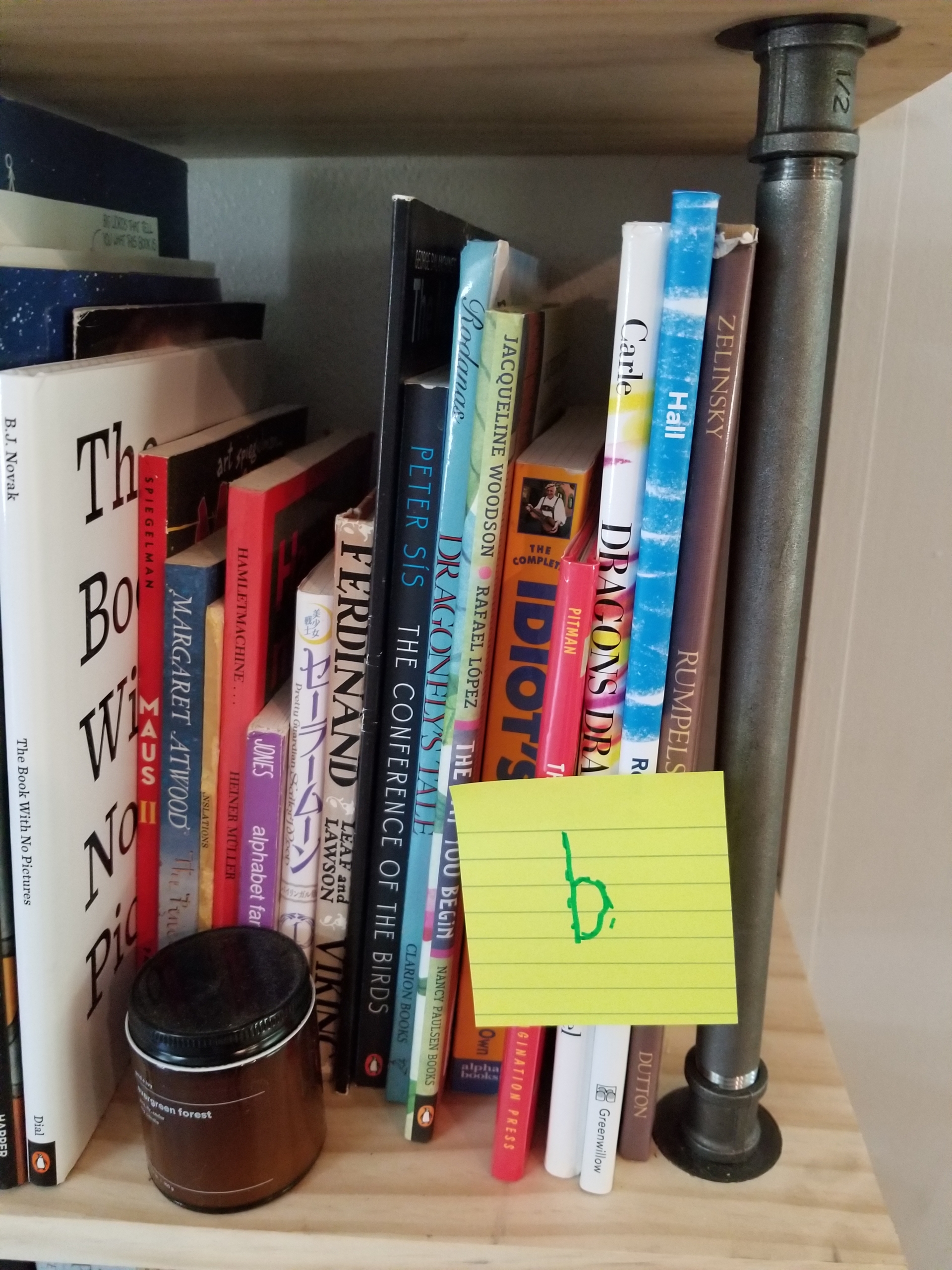

Step 5: When all five sticky notes are gone, go back to the pad and start again with a brand new letter!
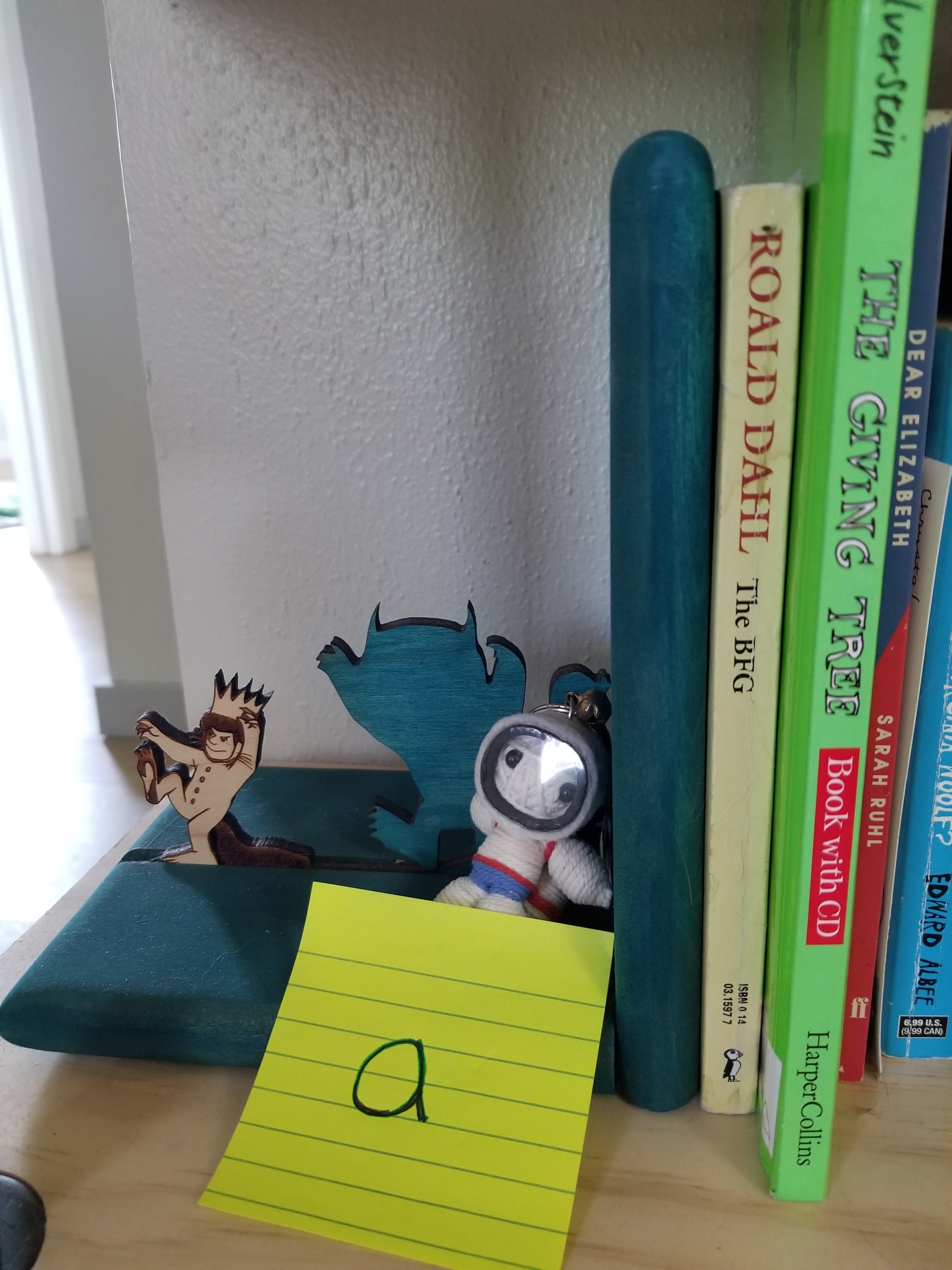
When playing Sound Search, it’s fine to guide or give clues to your kids, but try not to give away the answers. They’ll develop stronger auditory skills and you’ll both enjoy a lot of laughter and surprises. The last time I played this game, my five-year-old playmate stuck the letter T on her little sister, because “she has toes”—and who can argue with that?
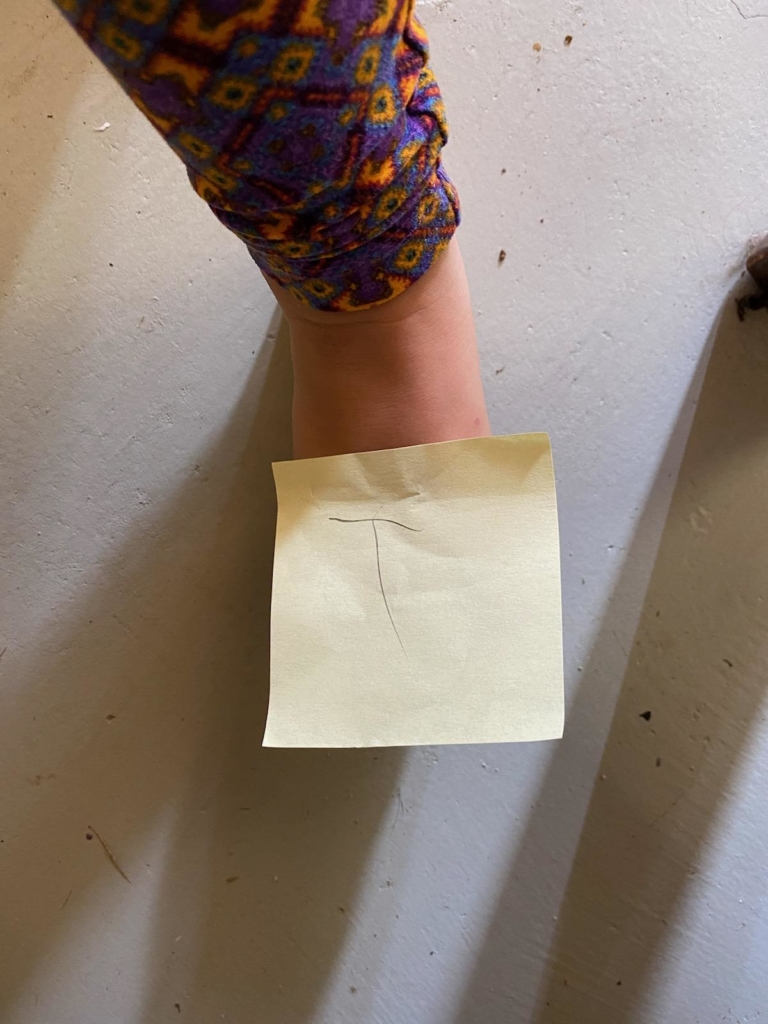
Need to keep kids entertained on the go? This simple DIY activity kit is perfect for road trips or plane trips, for restaurants, or for anywhere kids need some distraction while they wait. (Think instant entertainment on the sidelines of big sister’s soccer game or big brother’s cello practice!) Help your child follow this simple tutorial to make their activity book, and then let them personalize it with their own decorations and favorite activities. Or stuff it for them as a fun surprise to have in your bag of tricks!
Keep your child’s activity book stocked with crayons or markers, stickers, and index cards (or paper cut to the book’s size), so they always have entertainment at hand. You can also create mini worksheets for some extra fun and even some early literacy and math learning. For example, draw an alpha-bingo game board on one of your index cards to include in the kit. You could also make some of our word-family flowers to keep in a zip-close bag or envelope in the kit. And any coloring image, traceable letters/numbers, etc. that can print on a 3” x 5” piece of paper will also fit in your DIY activity book.
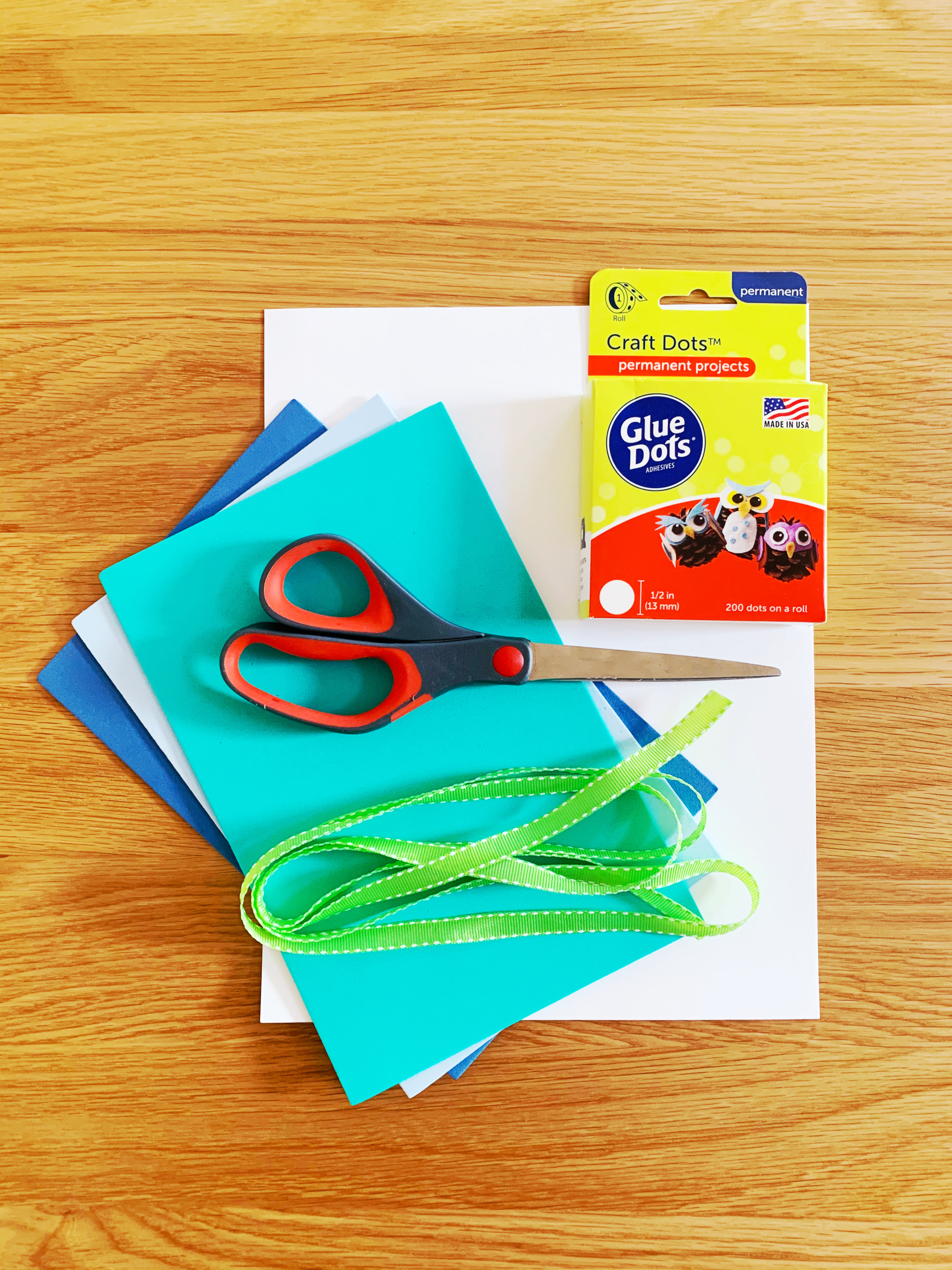
Materials:
- Three pieces of 6” x 9” colored craft foam
- Glue dots
- Scissors
- Ribbon
To fill your activity kit:
- Crayons, markers, pencils, etc.
- 3” x 5” index cards (or cardstock/paper to cut into pieces)
- Stickers, etc.
Cost: The materials you might need to purchase are the craft foam and glue dots. You can find them at a local craft store, or we’ve linked the materials to buy online. Craft foam is a fun addition to your craft closet, so you can’t go wrong with purchasing a multi-color pack (around $10), and glue dots (around $4) are a great way to make a no-mess project, especially for little ones!
Step 1: Decide which piece of craft foam you’ll use for each part of your book. One will be for the cover, one will be for the inside pockets, and one will be an accent for decorations! Take the craft foam piece that you will use for the inside pocket and cut it in half lengthwise
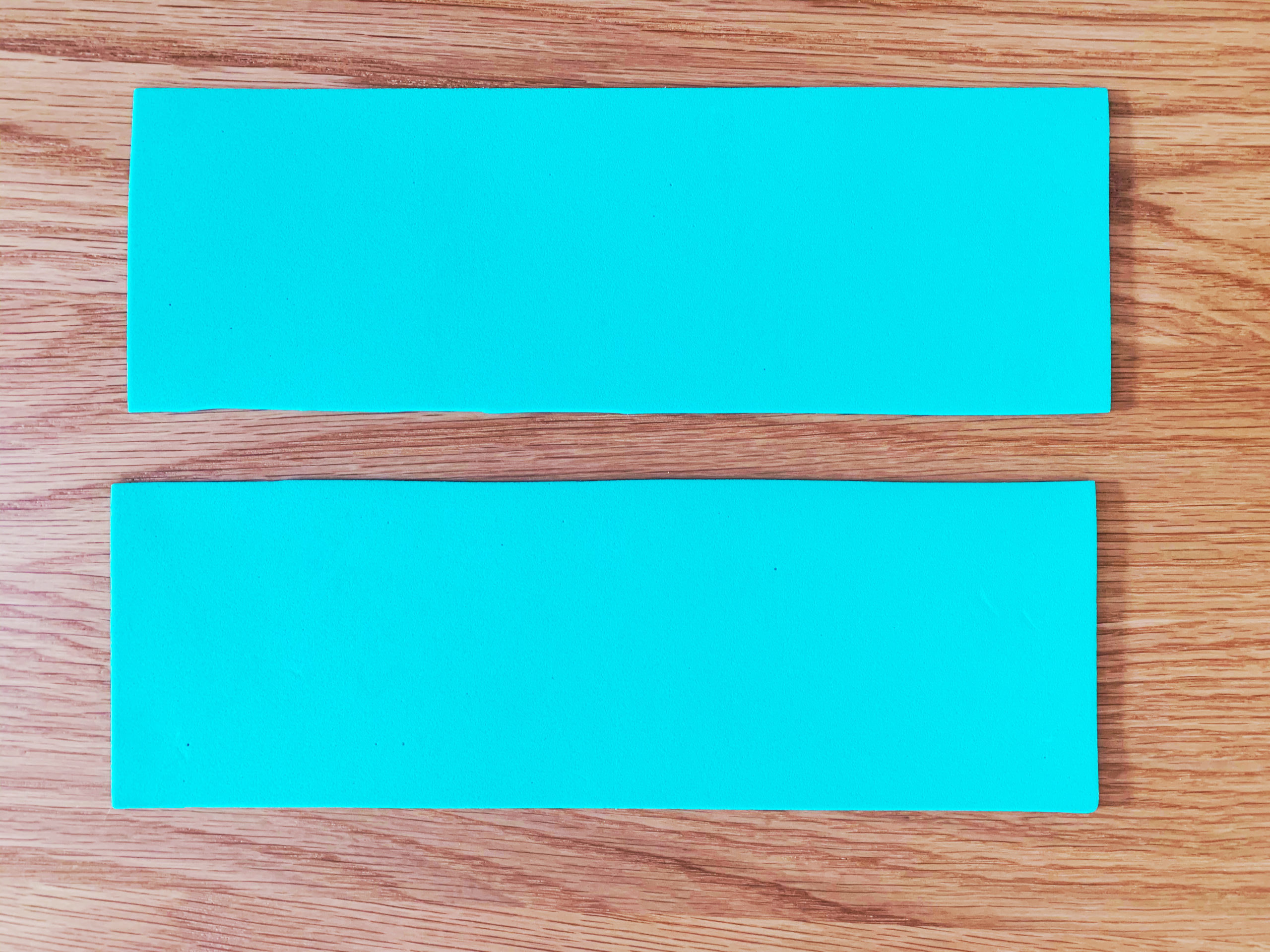
Step 2: Apply glue dots along the bottom long edge and the two short edges of one of the pieces. Next, place your cover piece of craft foam horizontally (so that it’s wider than it is tall). Then attach the pocket piece to your cover piece by simply flipping it over and lining the bottom and edges up with the cover.
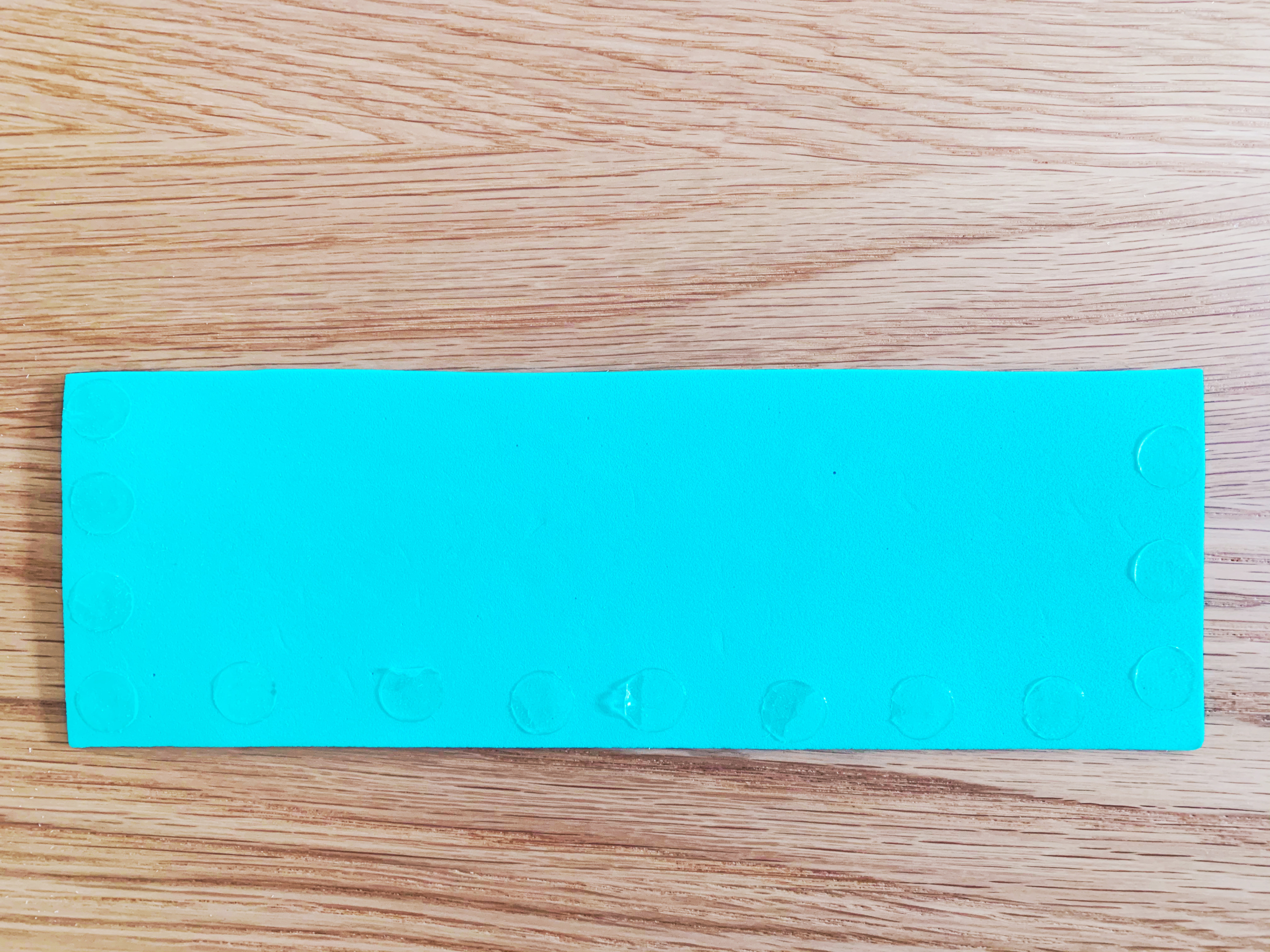
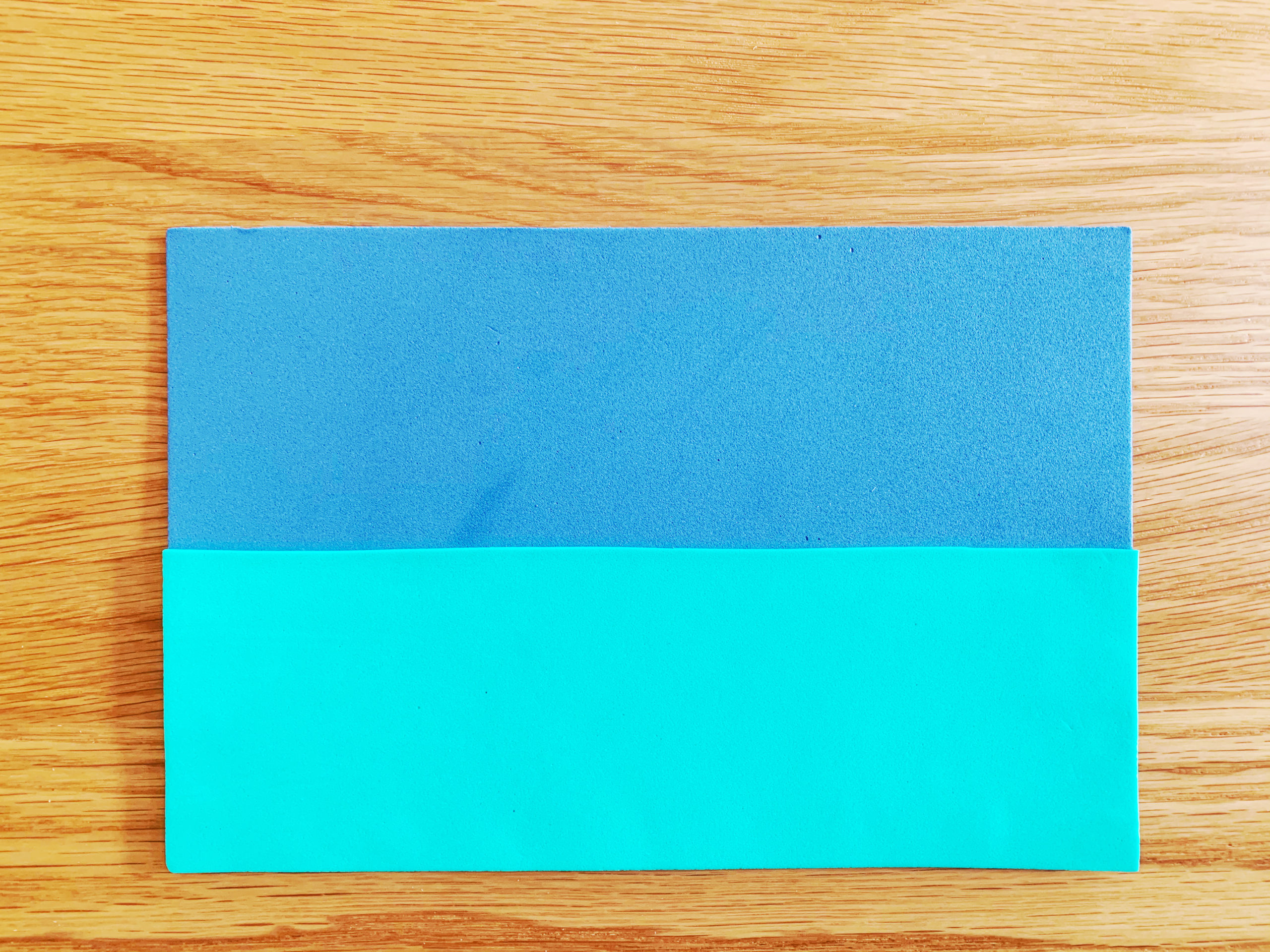
Step 3: Now gently pull out the middle of the pocket and place a few extra glue dots in a line down the center of the pocket, to separate it into two pockets.
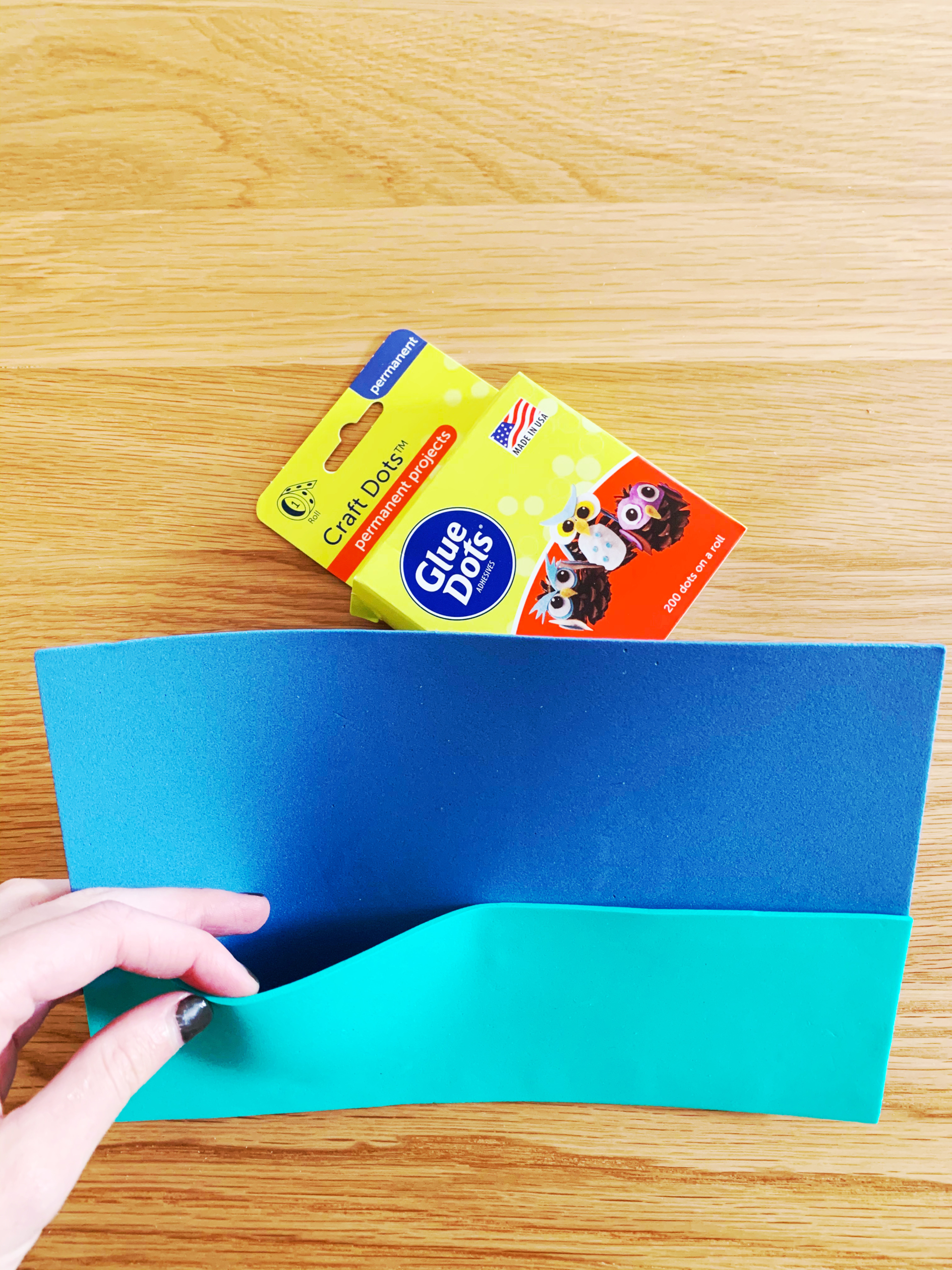
Step 4: Fold the book in half. Cut a piece of ribbon that is long enough to wrap around the outside. Secure the ribbon around the front and back of your book cover, with a few glue dots. Once in place, you will be able to use the loose ends of the ribbon to tie the book closed.
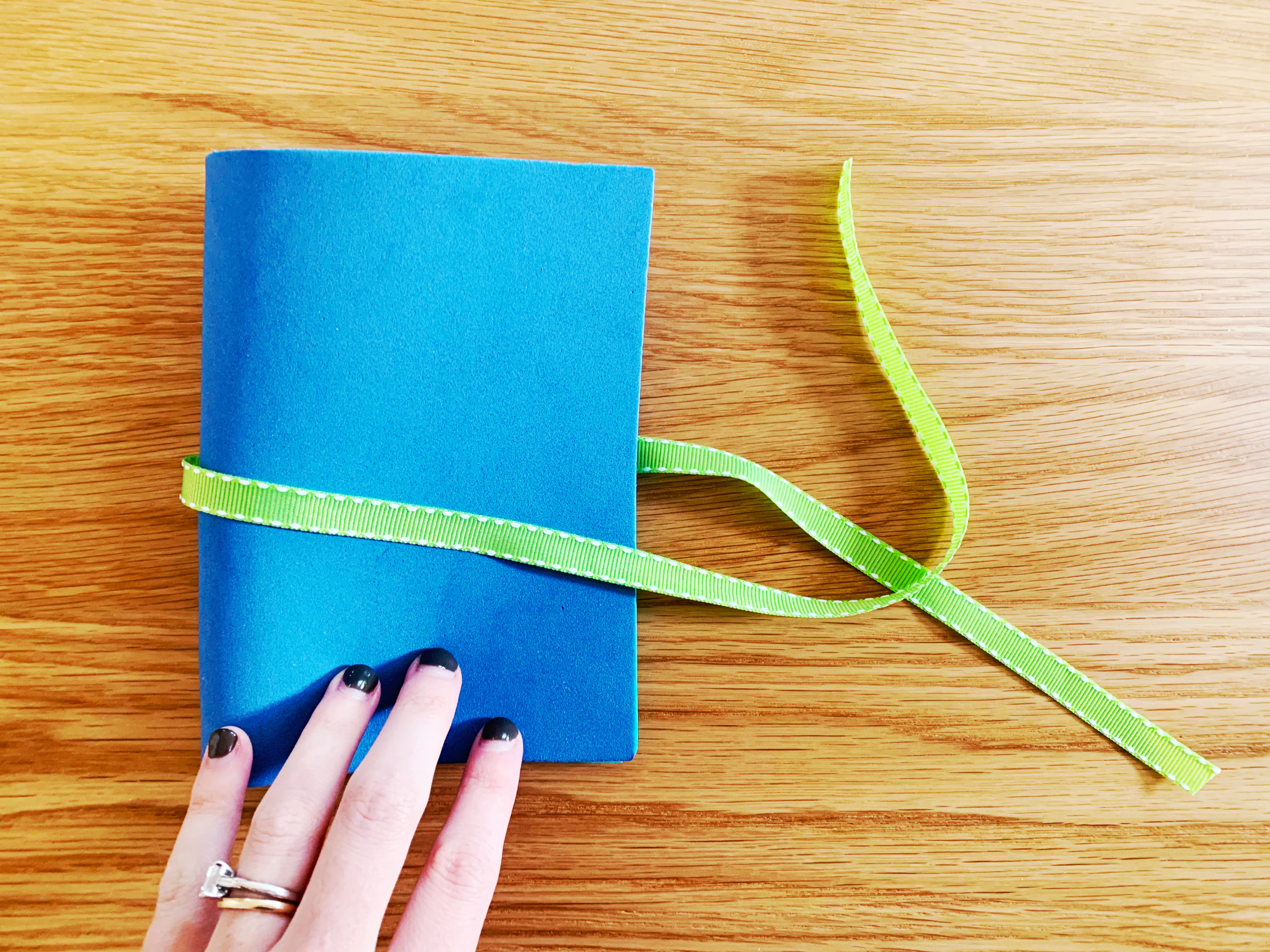

Step 5: Using the last piece of colored foam and the extra piece from what you used for the pocket (or more if you have it!), cut out small shapes to decorate the cover of your activity book by attaching them with glue dots. (You can also add further decorations with glue dots and write or draw on the craft foam with permanent markers. Just beware kids with Sharpies!)
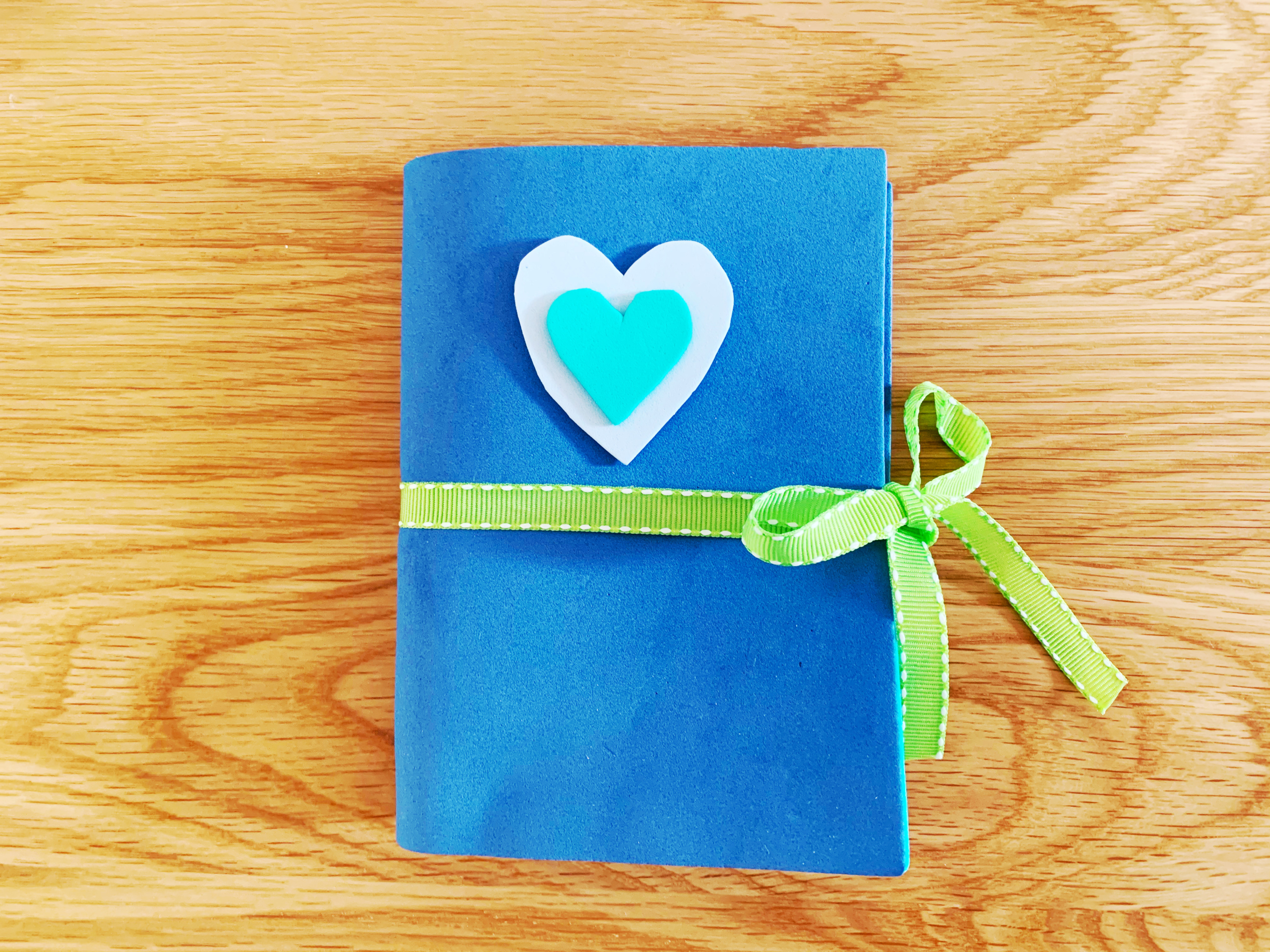
And there you go! Your DIY activity kit is ready to hit the road. The glue dots make this craft so easy, and cleaning up is a breeze. Now all that’s left is to stuff your sweet new activity book with supplies to keep your little one busy. Index cards (3” x 5”) will fit in perfectly, or you can cut cardstock or paper to the right size.
Have any creative ideas of what to fill your book with? We’d love to hear from you!
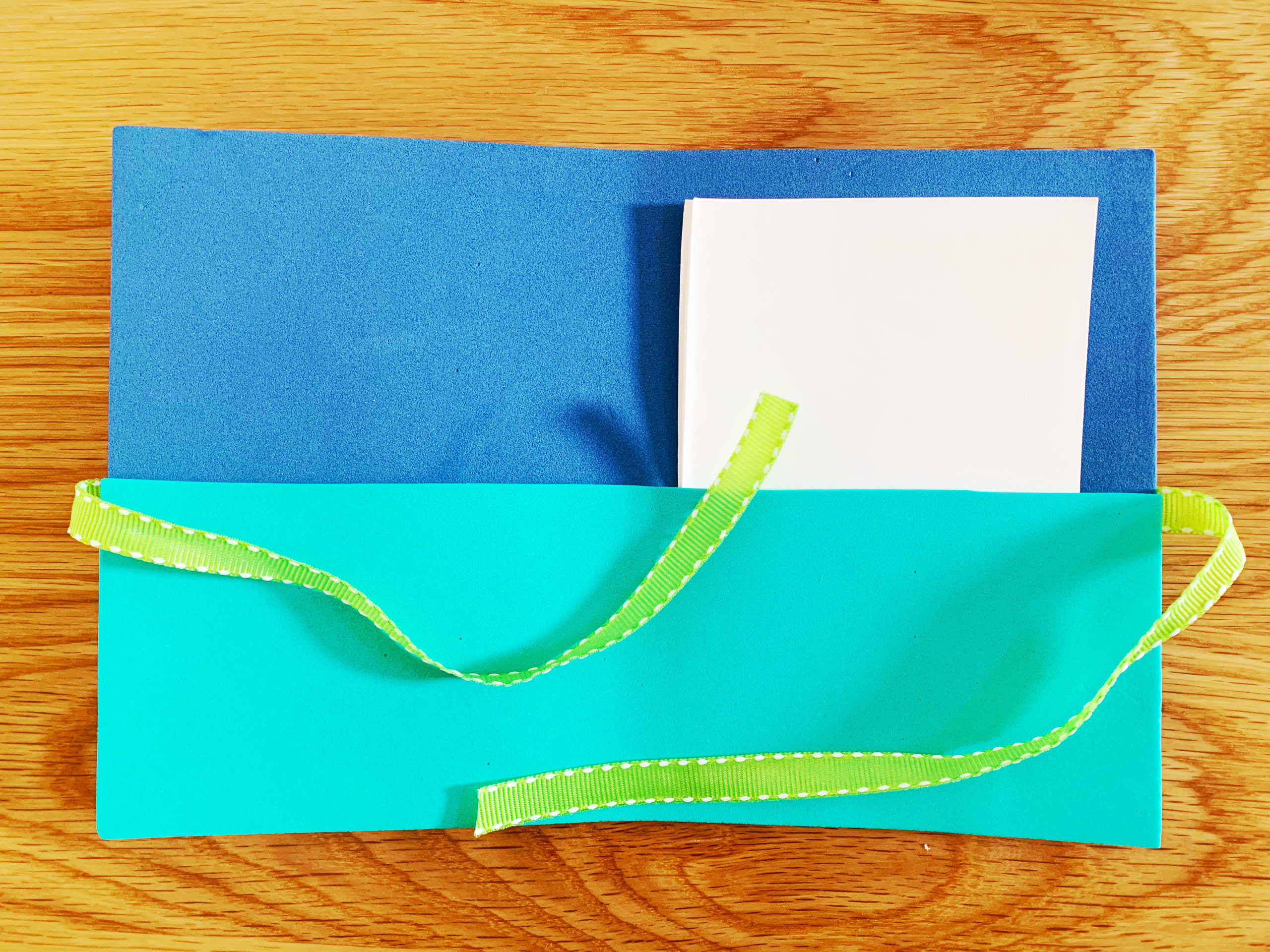
Let’s face it, letter names and letter sounds don’t always match up in a way that makes sense. Judging by their names, C should sound like /s/ and G should sound like /j/. Meanwhile, when X starts a word, it makes the same /z/ sound as the letter Z. This can be very confusing for early readers. They need constant reinforcement to internalize these nuances.
Rather than sitting down and drilling letters every day—endlessly drawing lines from the letter C to a clip-art cat—why not help kids match letters and sounds in the world around them? And a fun way to do that is neighborhood alpha-bingo. In this simple literacy game, you and your child will make real-world connections to the letters they’re practicing, all while exploring your neighborhood together. It’s a great way to get kids moving and learning at the same time.
Follow the tips below to make your own DIY alpha-bingo card, or enter your email and we’ll send you a set of printable bingo cards all ready to go.

Materials Needed:
- Paper
- Marker
- Ruler
Optional Materials:
- Printer
- Stamp and stamp pad
- Stickers
Cost: Free, if you have these basic materials on hand!
Step 1: Using the ruler to guide you, create a grid of four squares by four squares on a sheet of paper.

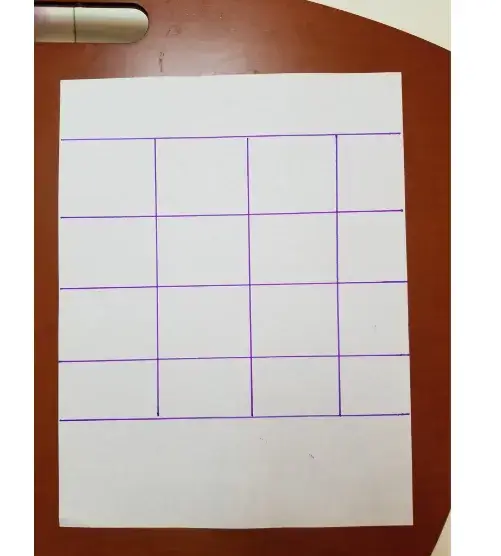
Step 2: In each square, write a single letter. Choose letters that are commonly found at the beginning of words, like T, N, S, P, and H. (It can be hard to get Bingo looking for words that begin with Q or X!) If your child is learning how to write, encourage them to write some of the letters themselves. Tip: If you have more than one player, make each player their own sheet with slightly different letters than the others.
Bonus: If you have a laminator or sheet protector, you can turn the sheets into a dry-erase board to use again and again (just be sure to mark it with dry-erase markers).
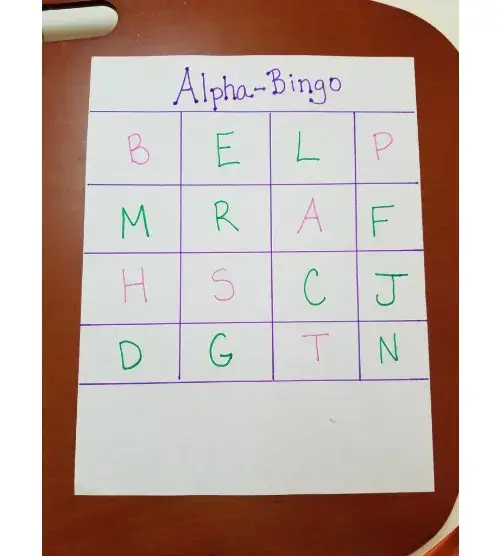
Step 3: Together, review each letter name found on the bingo sheet and its corresponding sound. For letters than can make more than one sound: Use short vowel sounds (e.g., the way “a” sounds in “hat”) and, for consonants that can be pronounced more than one way, use their “hard” sounds (the way “g” sounds in “goat” and “c” sounds in “car”).
Step 4: Give your child their bingo sheet and a marker, stamp, or stickers, then go explore the neighborhood searching for sounds. Every time your child sees something that begins with a letter sound on their sheet, have them mark it with the marker, stamp, or stickers. Four in a row wins the game!
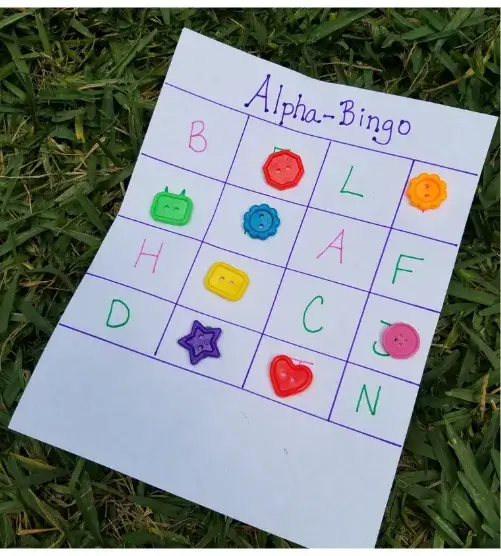

What I truly love about Alpha-bingo is how much of the world feels new to me when I’m with a child. I always expect them to match C with car or H with house, but their little eyes find things I never noticed, and make connections I completely missed. So, while they’re the ones learning to read, I’m the one learning to see.
So what are you waiting for? Let’s b-i-n-GO!
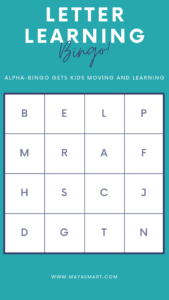
Meow! These playful DIY bookmarks are perfect for the animal-loving bookworms in your life. This is a fun craft for all ages, though younger children will need some help, especially with the cutting. Making their own bookmarks is always motivating to young readers, and who wouldn’t want to dive into a good book when they see this cute kitty peeking out over the pages? They’re also an appealing way to dress up a book gift with a personal touch.
We used bright cardstock to make a rainbow of colorful and vibrant kitties. If you don’t have colored cardstock on hand, though, it would also be really cute to color and decorate your own from plain cardstock. (Upcycle alert: chance to reuse an old notebook cover!) This bookish craft requires only a few materials and, best of all, just a few simple steps before your purr-fect new bookmark is ready. Note that you will need a craft knife to cut out the arms, so it’s a good idea to supervise kids of any age.
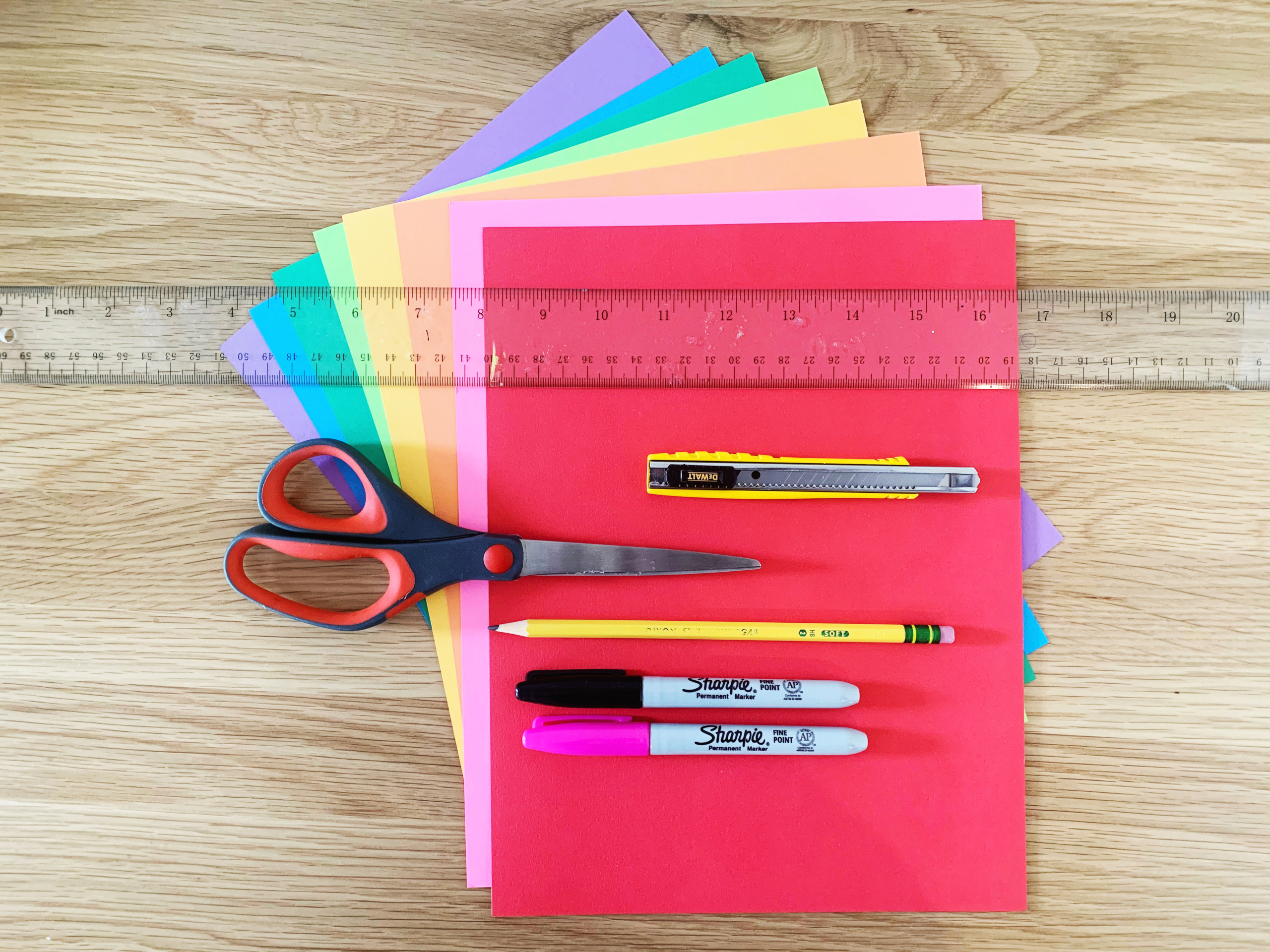
Materials:
- Colored cardstock (or paint or color plain cardstock)
- Craft knife
- Scissors
- Piece of cardboard to cut on (or if you have a nice cutting mat, use that!)
- Permanent markers
- Pencil
- Eraser
- Ruler
Cost: There are no out-of-the-ordinary materials required, so this cute craft could cost you nothing! If you don’t have colored cardstock, you can color some plain heavy-weight paper. The weight of the paper makes for a nice sturdy bookmark, so just make sure whatever you use is thicker than regular computer paper. (An old notebook cover can be a good source of cardstock.) If you don’t have a craft knife, you can find options starting at just a few dollars.
Step 1: The first step is to outline and cut out your bookmark. With your ruler, trace a 2” x 6” rectangle on your cardstack and then cut it out. After you have cut it out, erase any leftover pencil marks that you can still see to make your bookmark nice and neat!

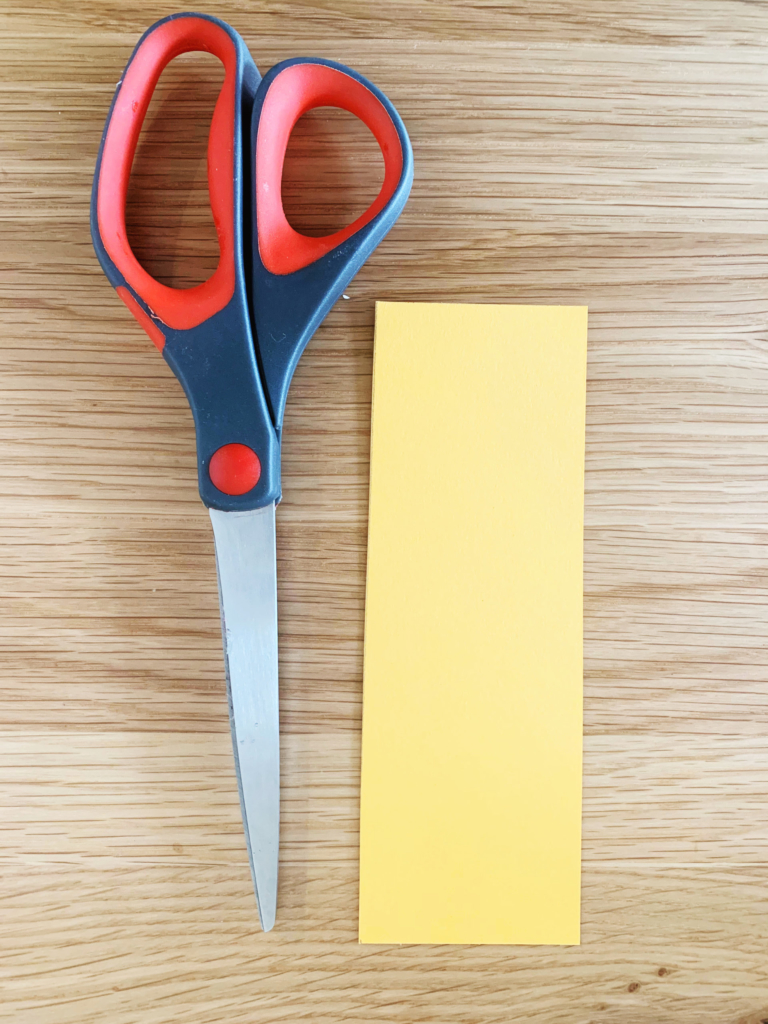
Step 2: Using your pencil first, draw the shape of a cat onto your bookmark. Start with the ears, then add its cute little face, and lastly the arms. Pro tip: Make sure you draw the arms long enough that they’ll hold onto your page. I would recommend at least 1.5 inches. After tracing in pencil, go over your lines with a permanent marker and then erase any pencil marks you can still see. If you have a pink marker too, you can add some cute accents like in the picture.
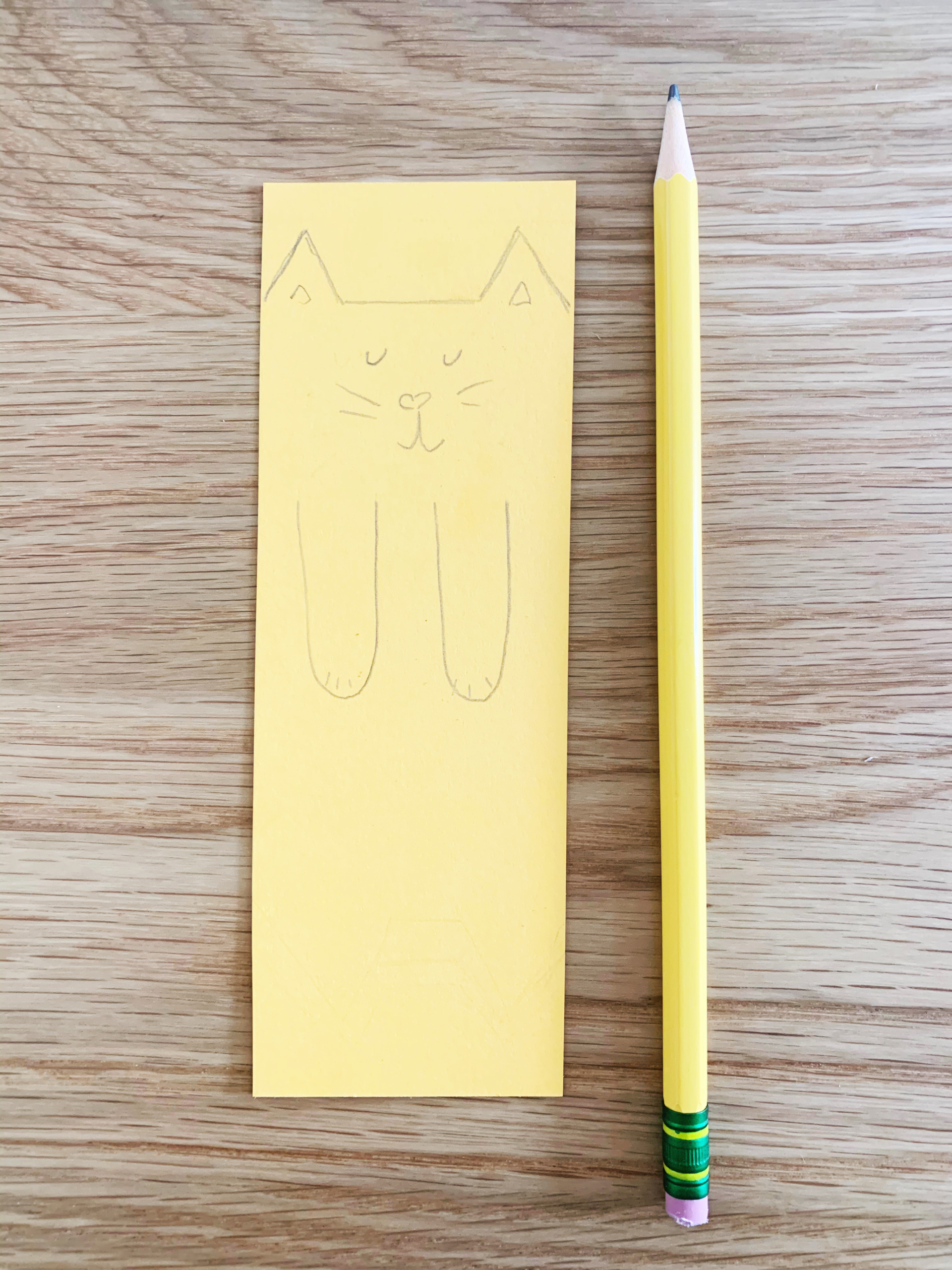
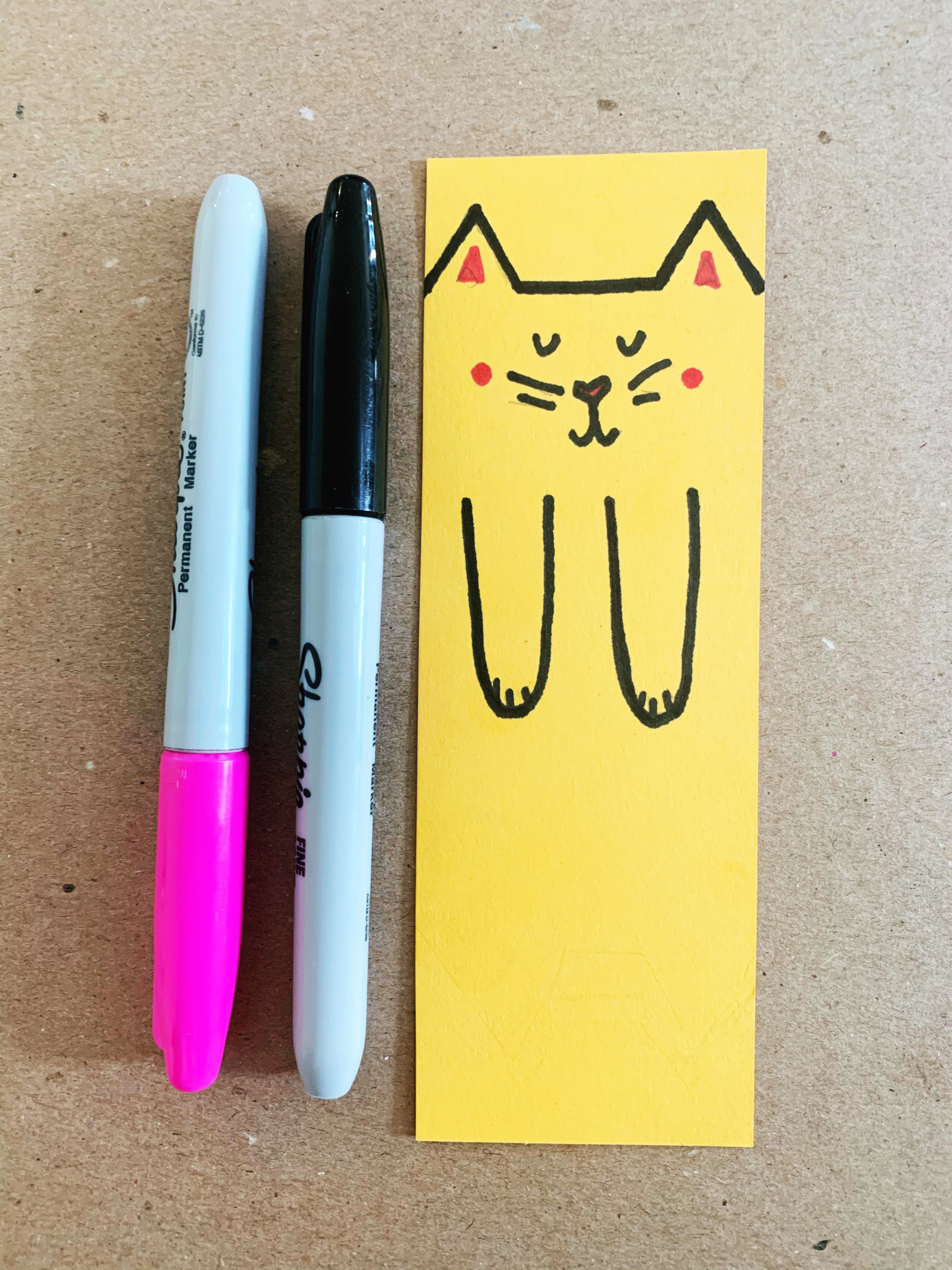
Step 3: Last step! Now take your scissors and cut out your cat’s ears. Next, you will use your craft knife (younger kids will need help here!) to cut around your cat’s arms. Go slowly —you can retrace your lines a few times until you have a clean cut around the arms. Once you have cut all the way through the paper, carefully pop out the arms.
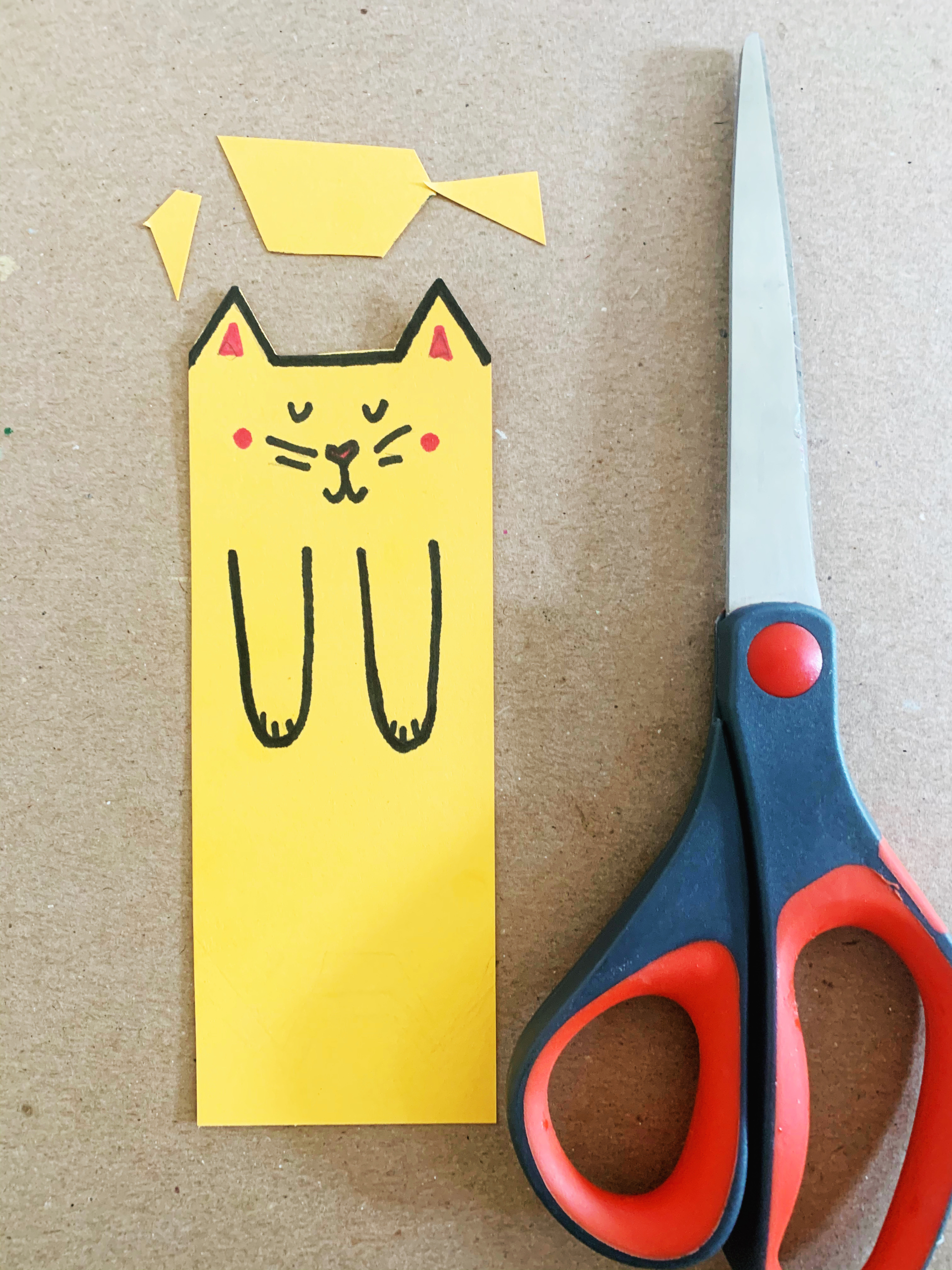


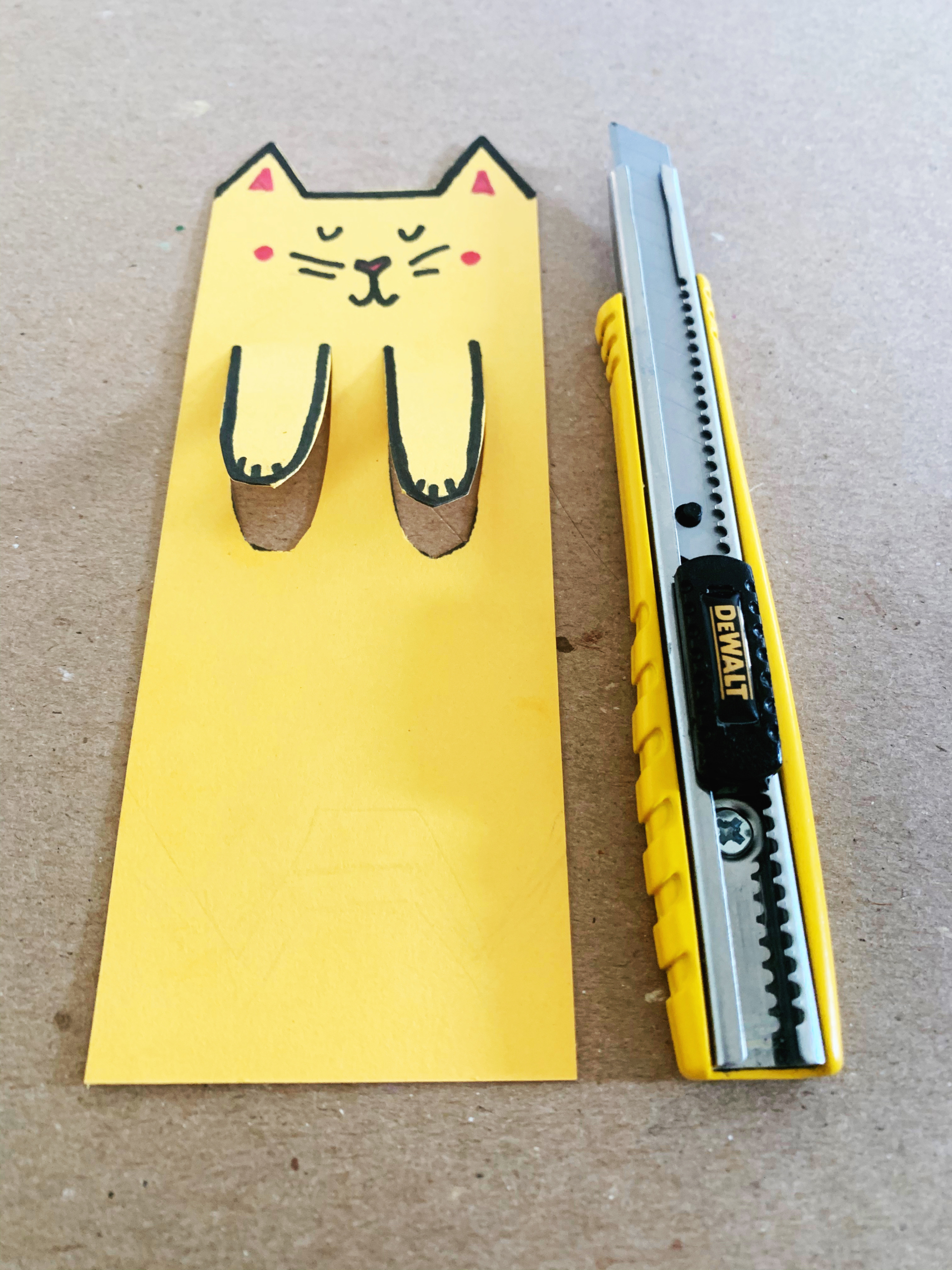
Ta-da! That was simple, right? Your new bookmark is all set to use, unless you want to add some personal flair and dress up your kitty! After doing this craft, you could use this same method to make all sorts of animal bookmarks. I can already see dog, horse, lion, and monkey bookmarks dancing around in my head!
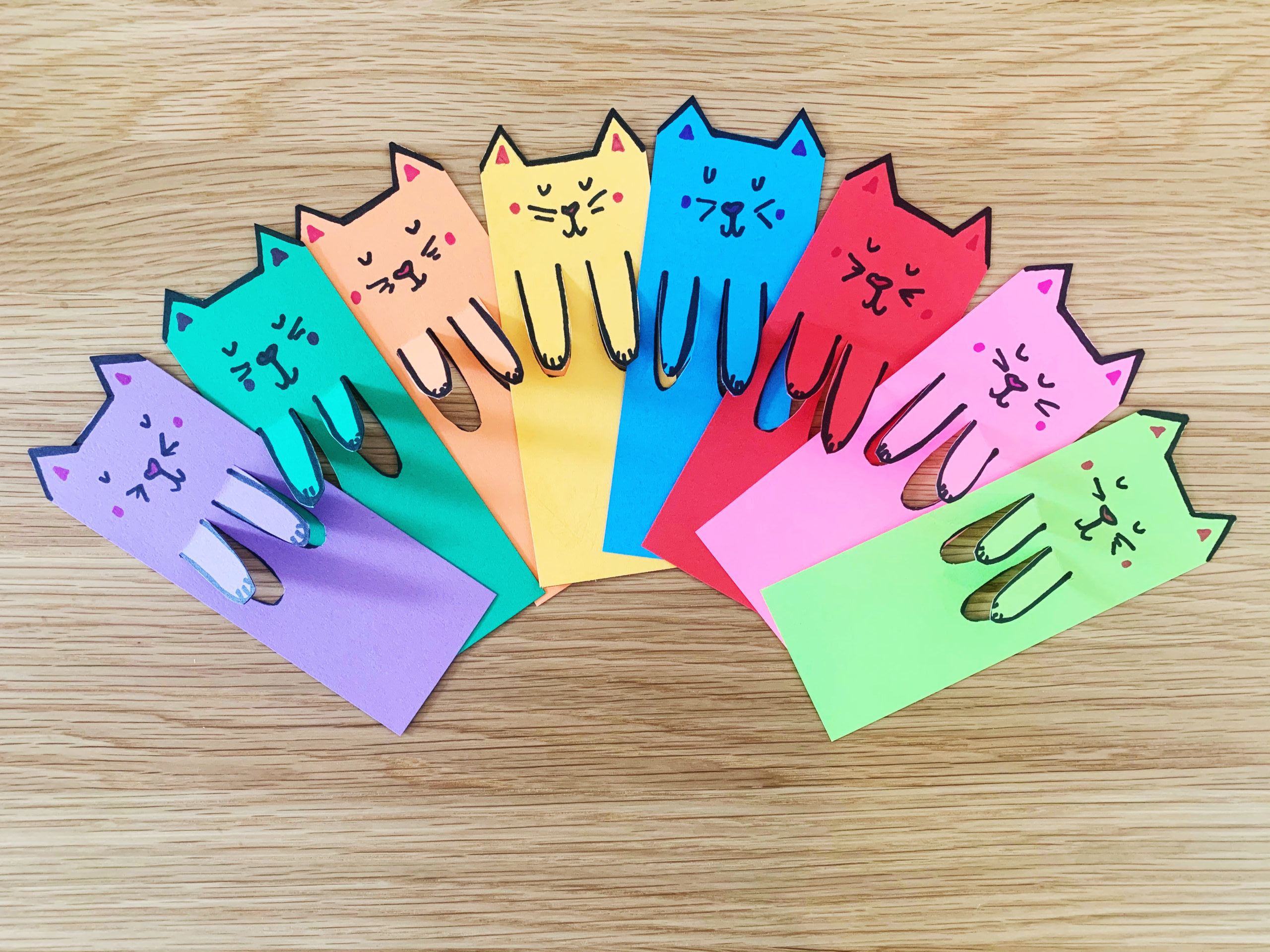
Also, be sure to check out our other bookmark tutorials, because they are each fun and unique in their own way. We have the Paper Punch Bookmark, the Chunky Tassel Bookmark, the Fruit Slice Corner Bookmarks. You can never have too many bookmarks, so let us know which one is your favorite so far.
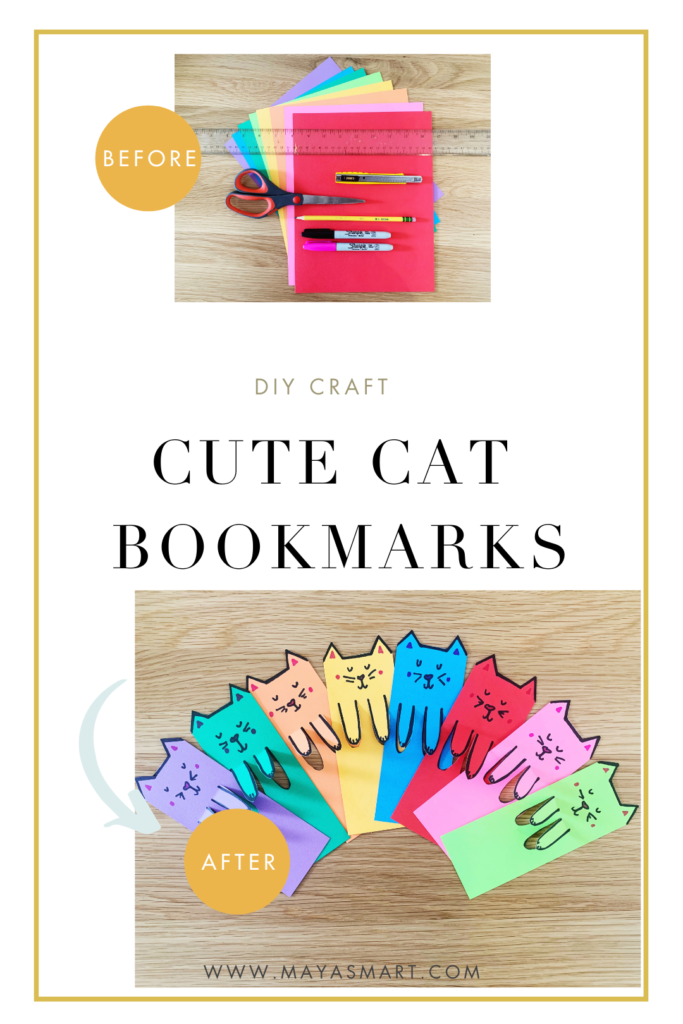
By Chrysta Naron
Word families, sets of rhyming words that share the same ending spelling and pronunciation, are great tools for helping kids recognize patterns and build awareness of the sound structure of words. For example, the “at” word family includes words like “cat,” “hat,” “sat,” and so on.
Word families are wonderful because they teach two skills at once. First, children learn to connect certain letter combinations with particular ending sound chunks or rimes. This can help them learn new words by analogy. Second, word families prompt great rhyming practice—and who doesn’t love that?
In this home-literacy activity, you and your child will create word-family flowers. This craft is a cute way to physically show how changing the first letter in a word family creates new words. Kids can manipulate the petals themselves to spell words, so they can return to this activity later to review and experiment on their own. I even use this as a tabletop activity for my preschool and kindergarten students!
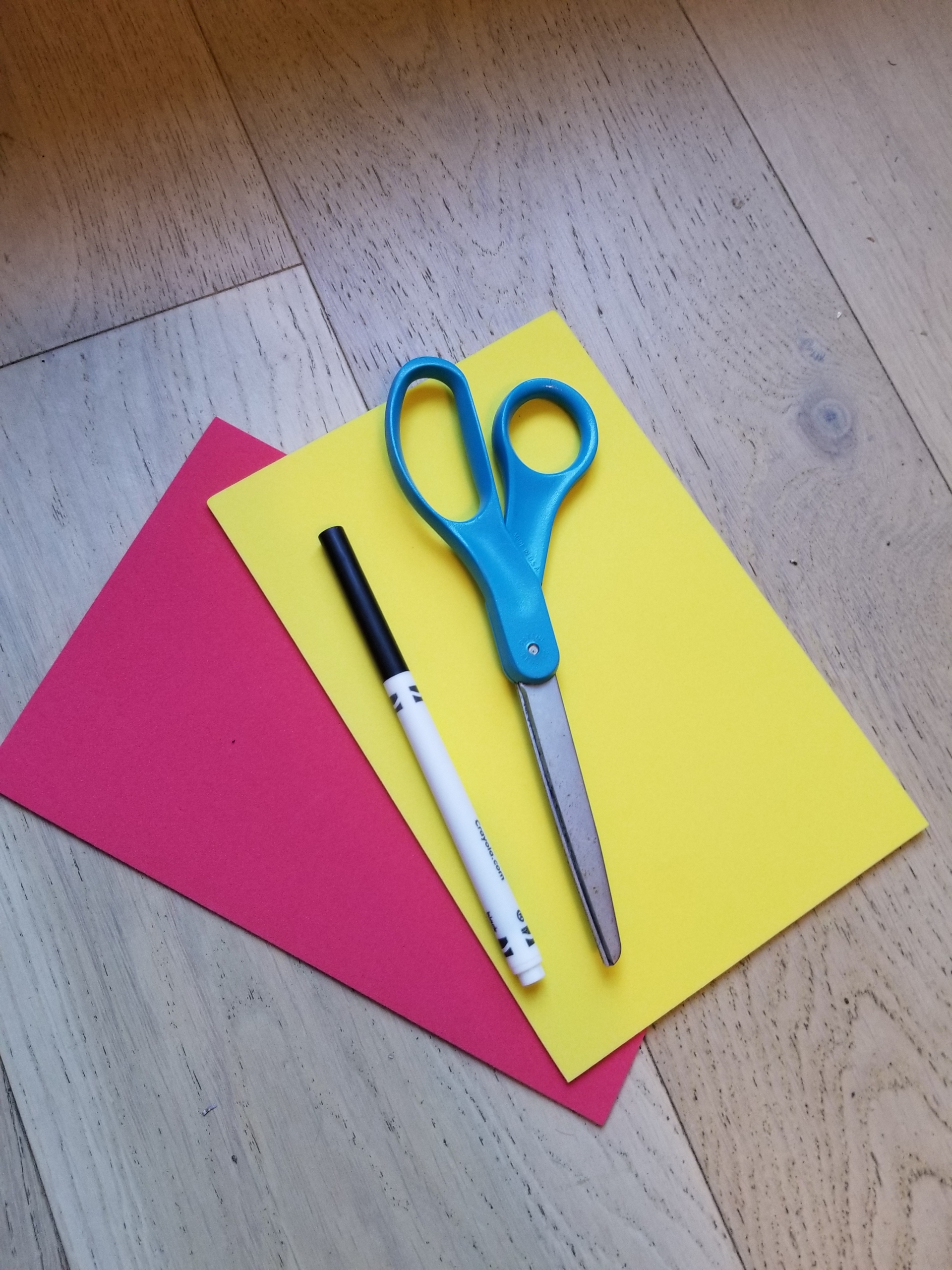
Materials Needed:
- Marker
- Scissors
- Craft foam sheets, cardstock, or construction paper of two different colors
Optional:
- Green cardstock or paper
- Glue
Cost: If you want to use craft foam, you can generally get 80-100 sheets for about $15.
Step 1: Pick one of the colors of craft foam/paper for the center of your flower. Using a marker, draw a medium-sized circle on the sheet. (I trace around the lid of a mason jar to guide me.) Draw as many circles as the number of word families you want to create. (See photos below for suggestions of word families to start with, or come up with your own.)
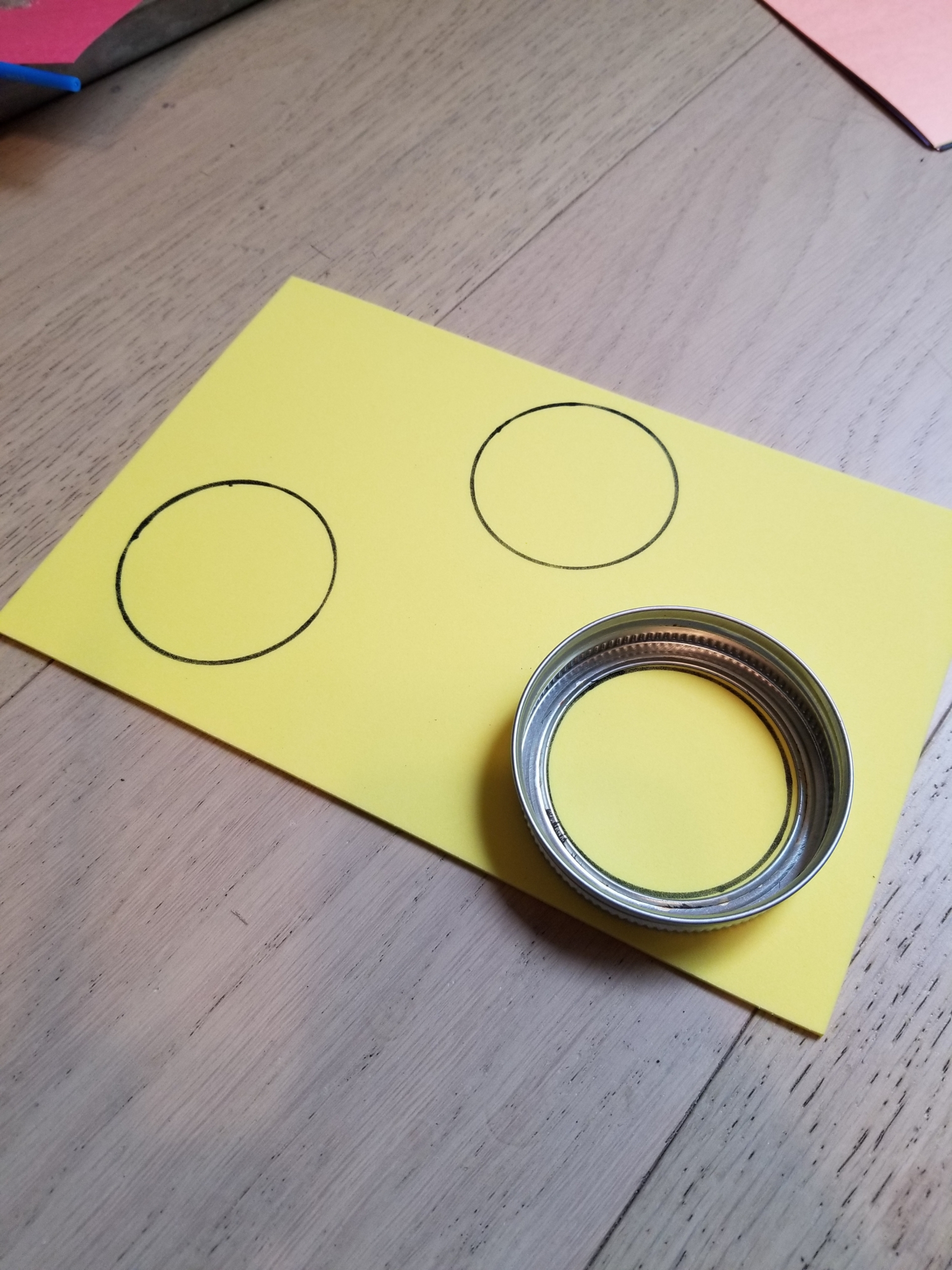
Step 2: Cut out the circles.
Step 3: In the center of each circle, write the middle and last letter of the words in your chosen word families. Quick start: Use the three in the photo below, or come up with your own word families.
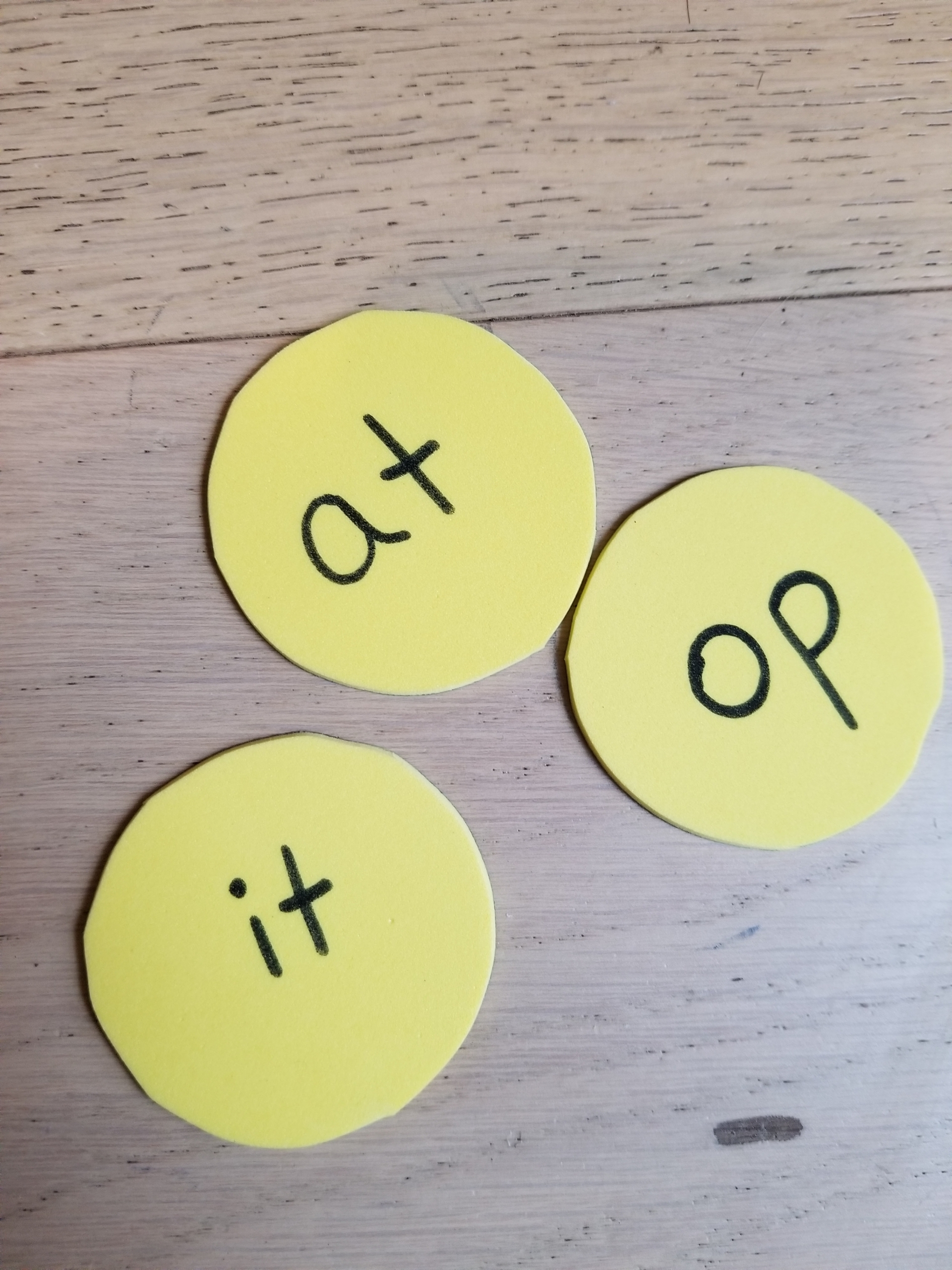
Step 4: For each circle, cut out six or so small rectangles from the second color of craft foam/paper. These will be the petals of your flowers.
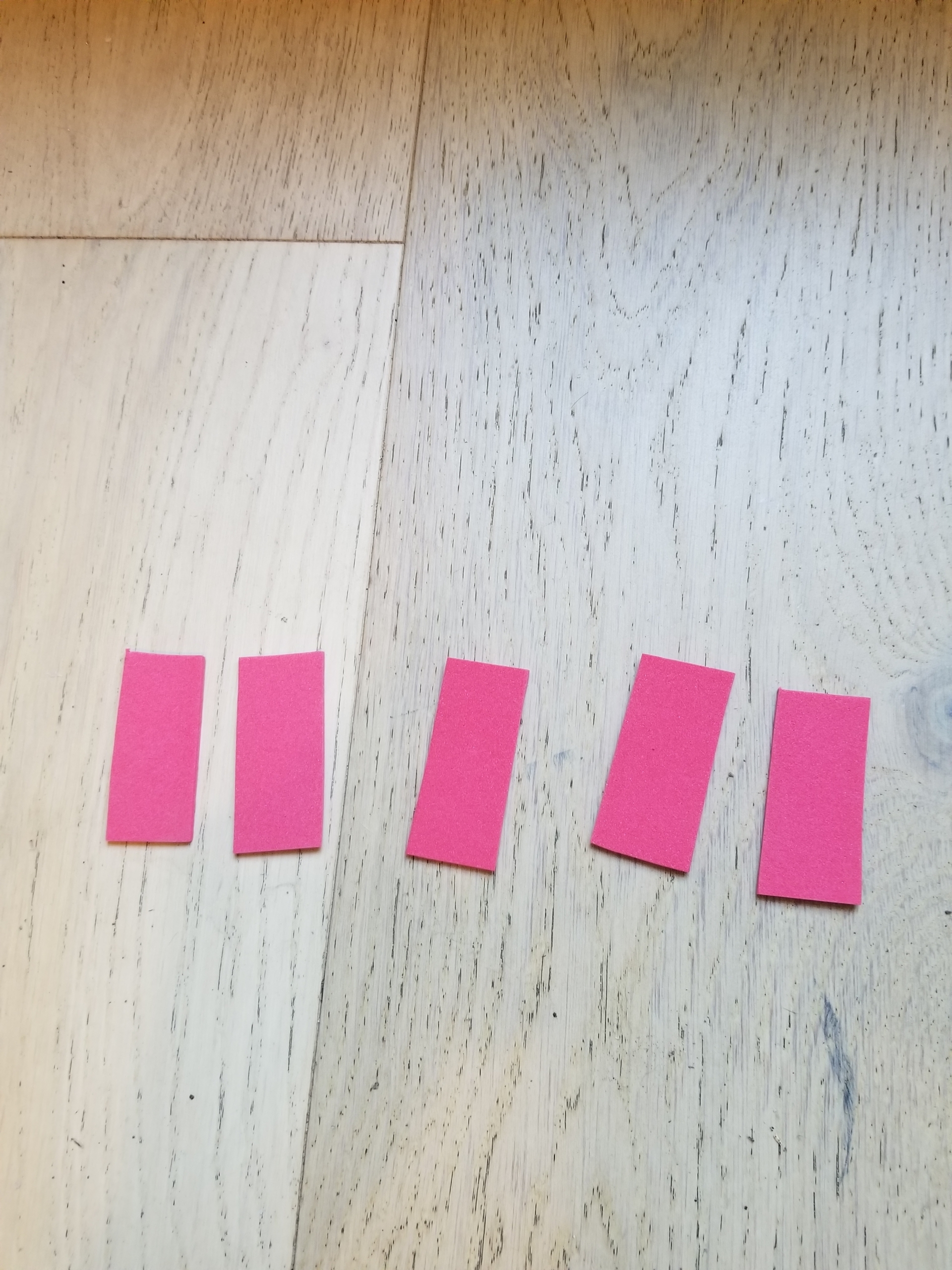
Step 5: On every petal, write a letter. Choose several letters that can create words for your word families, plus some letters that won’t make words for your word family. Quick start: If you’re using the word families above, and you want to make the petals interchangeable, here is a selection of letters that will work: b, c, h, m, p, r, s, f, t, l, d, g, n, w, x, y, z, j.
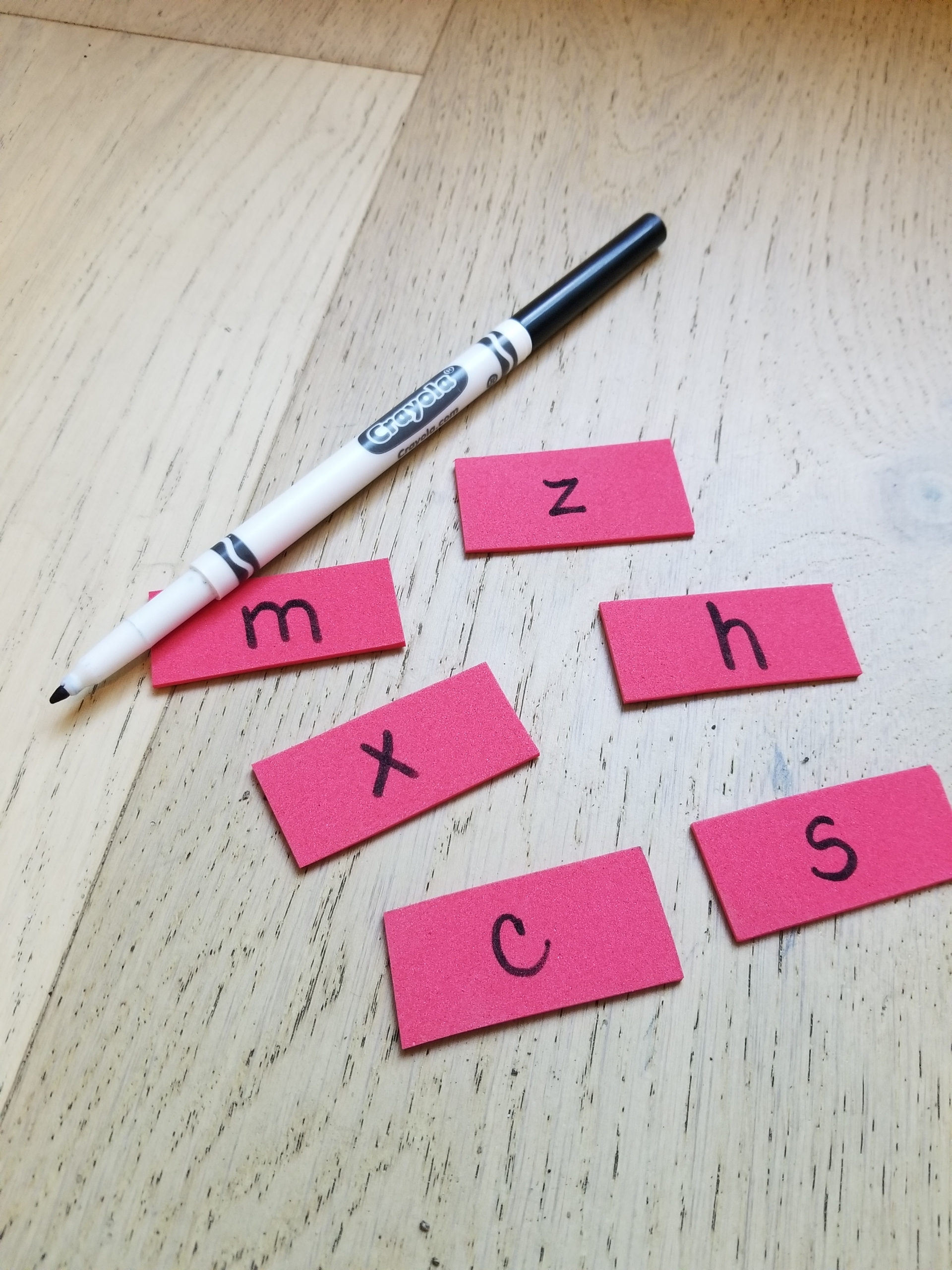
Step 6: Give your child the center of the flower. Help them sound out the letters written inside.
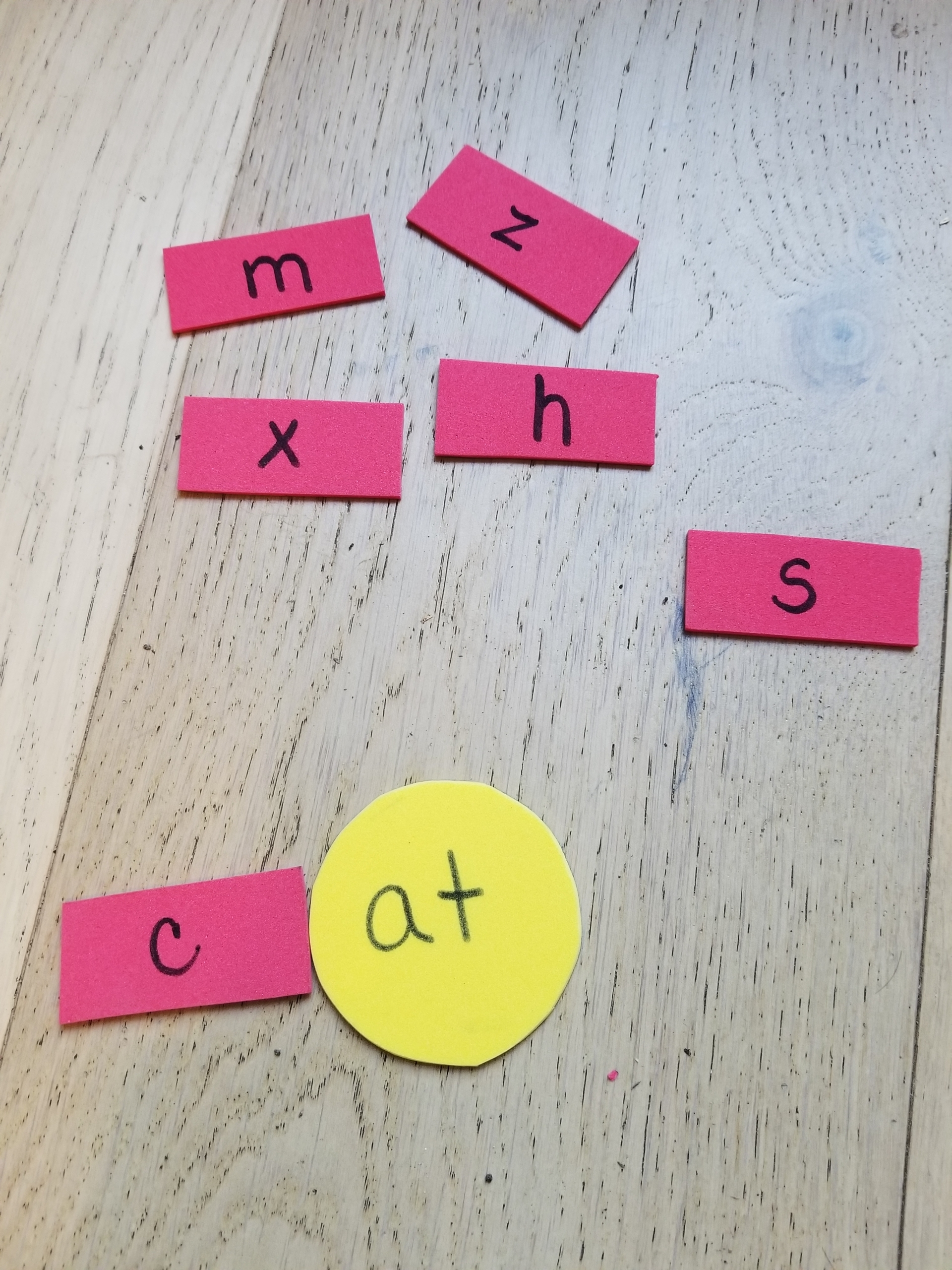
Step 7: Next, show them some of the petals with the letters. Ask, “If you put this petal on the flower, does it make a word?” Guide your child in sounding out the letters. If that letter makes an actual word, the petal stays on. If not, the petal gets “picked.” Tip: To keep it from being overwhelming, only show kids about six letters for each family, including many that make words. If they’re ready, you can push them by showing more letters all at once.
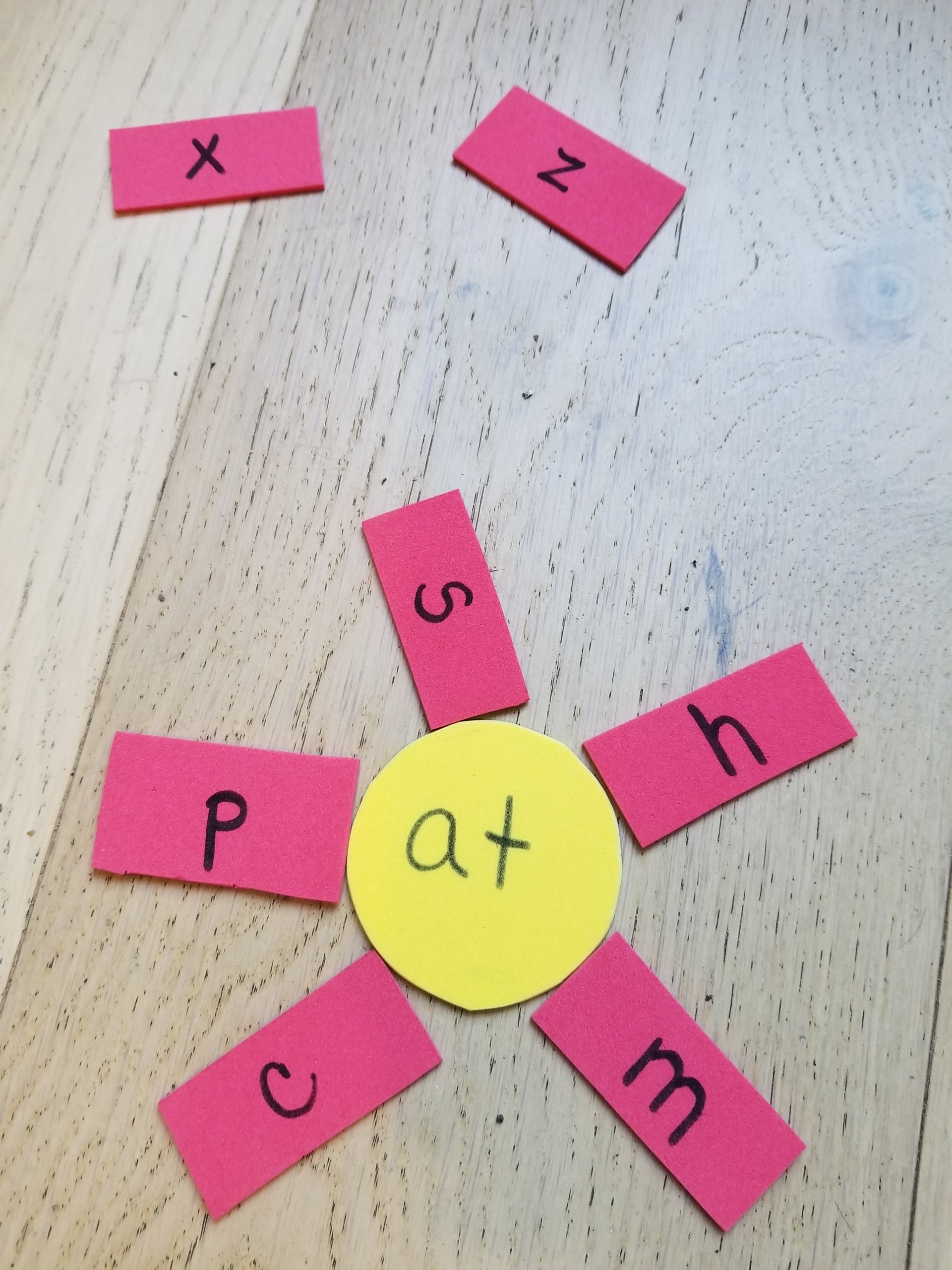
Step 8: After trying every letter, the petals that remain are your flower word family! Keep the pieces loose to make word families any time you like. Optional: Help your child glue your flower family centers to green paper and add a stem, creating a fun display to experiment with adding various petals.
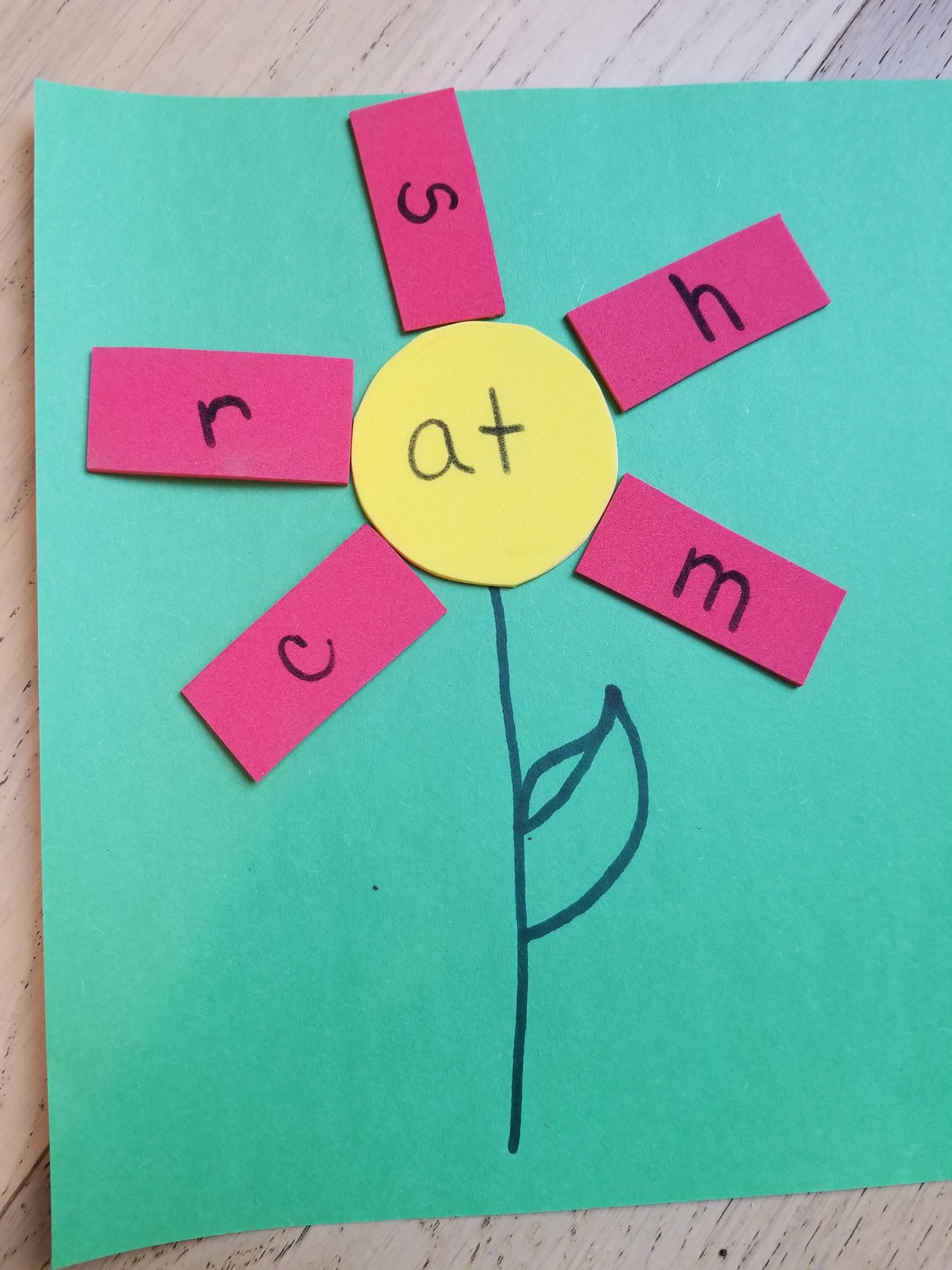
Feel free to keep going and make as many different flowers as there are word families. Here’s a link to a word family list to get you started.
You can create a garden of words to visit again and again. And along the way, your little ones will blossom into readers and writers!
This accordion book craft is a great one to do with kids. Not only is it easy to make a pretty little book, it’s also a fun way to encourage children to write—they’ll be eager to fill these cute pages. Plus they can wrap the covers with an original drawing or painting, a great way to give kid creations a second life.
Younger kids will just need a little help with the assembly, but then they can let their imaginations take over as they illustrate the cover and put the pages to use. For a sweet home-literacy activity, invite children to write their own stories inside their DIY accordion book. Older kids can create a comic strip or illustrated story. For younger kids, consider helping them make an alphabet book with a couple of letters per page, plus drawings of items whose names start with those letters. Once their masterpieces are ready, they can stand them up and put them on display!
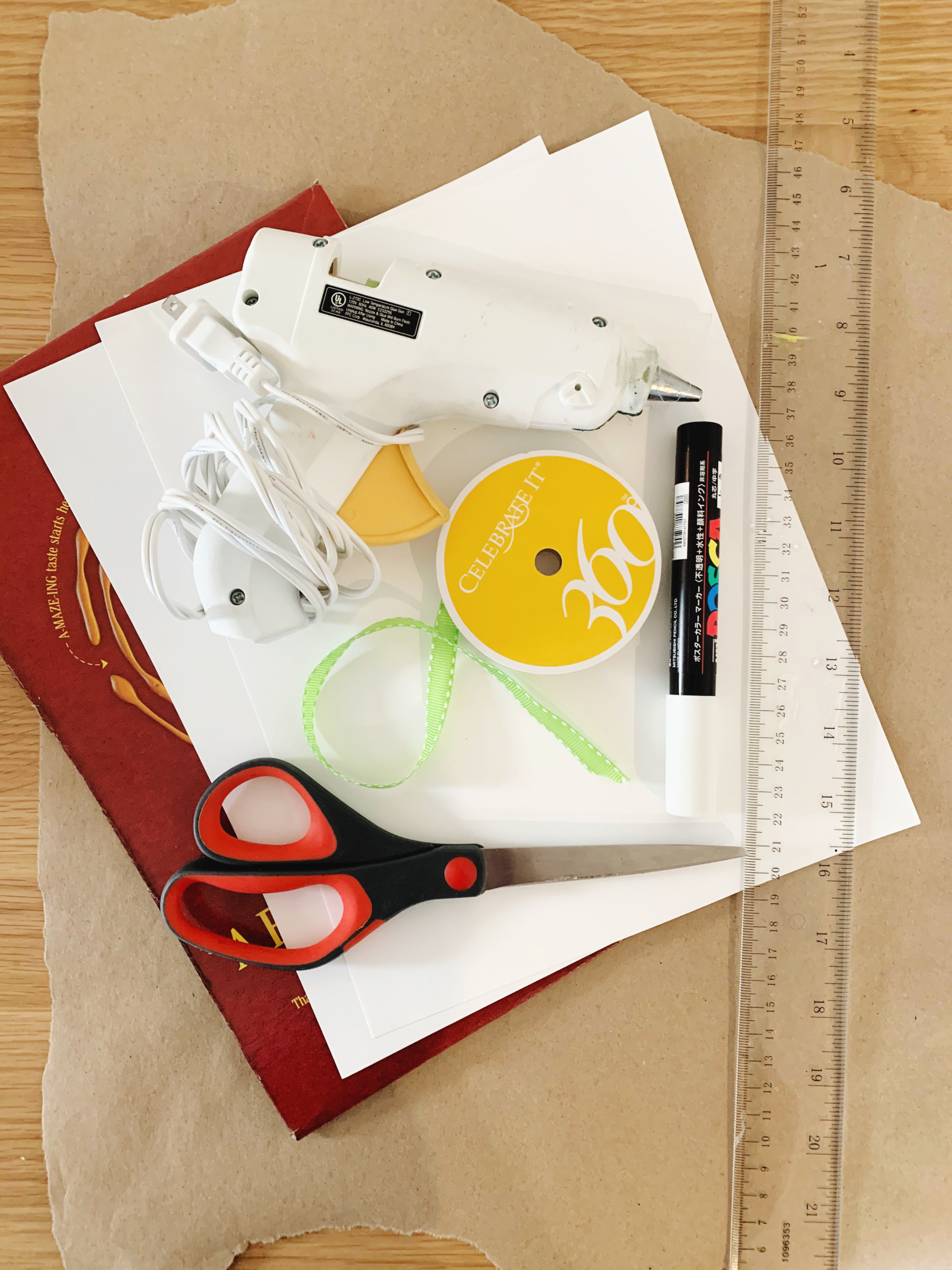
Materials:
- 2 pieces of 8.5” x 11” cardstock (or heavier-weight paper)
- Scissors
- Ruler
- Glue (hot glue gun, white glue, or glue dots could work)
- Cardboard big enough to cut out two squares, 3” x 4.5” each (cereal boxes work great!)
- Scrapbook paper, construction paper, or original artwork to cover the book
Cost: If you have a few craft staples around, this should not cost you anything!
Step 1: To start, take one of your 8.5” x 11” pieces of cardstock and crease it in half lengthwise, then cut down the crease to make two long, skinny rectangles.
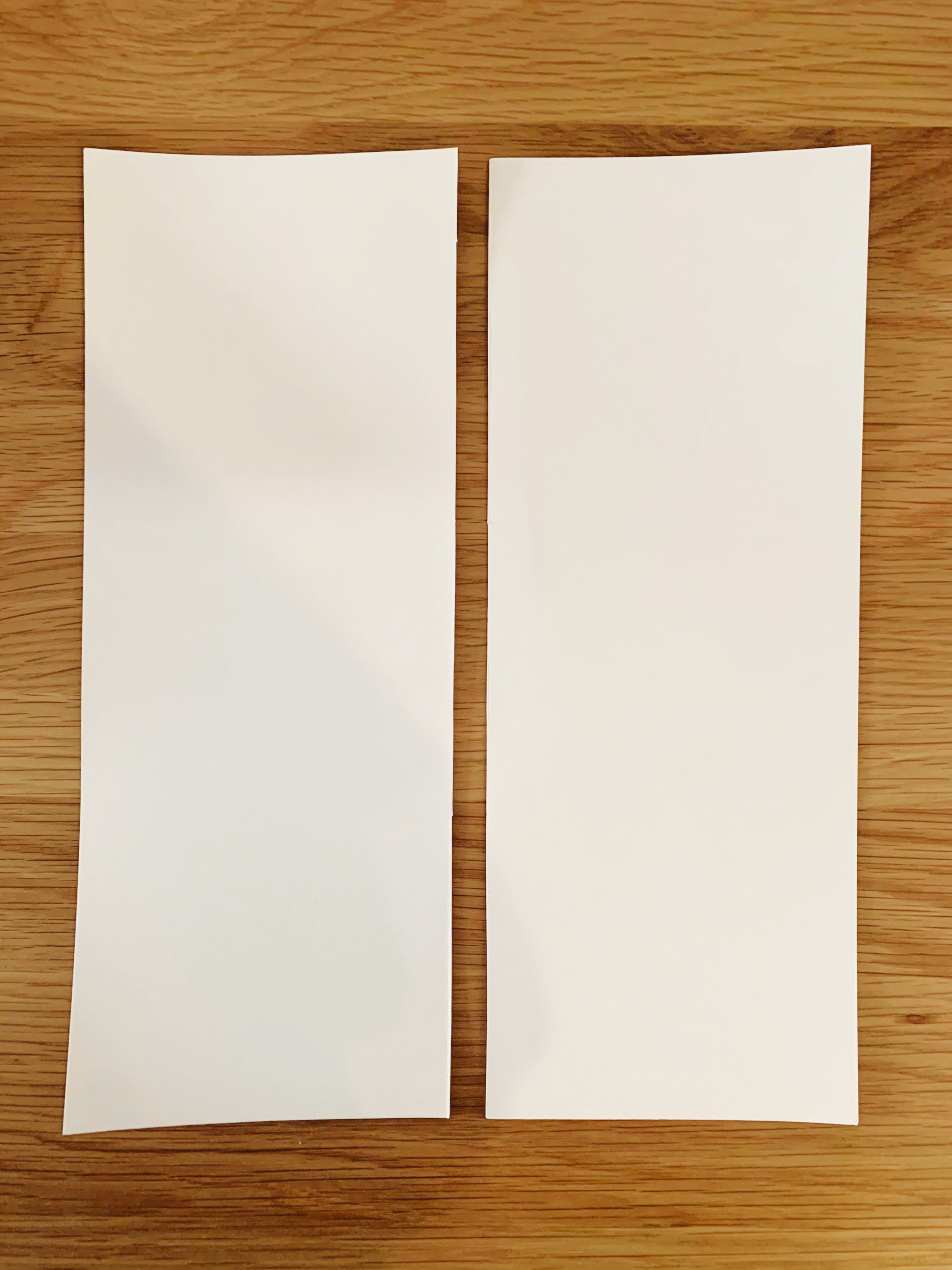
Step 2: Now fold each of your two pieces of cardstock in half widthwise.
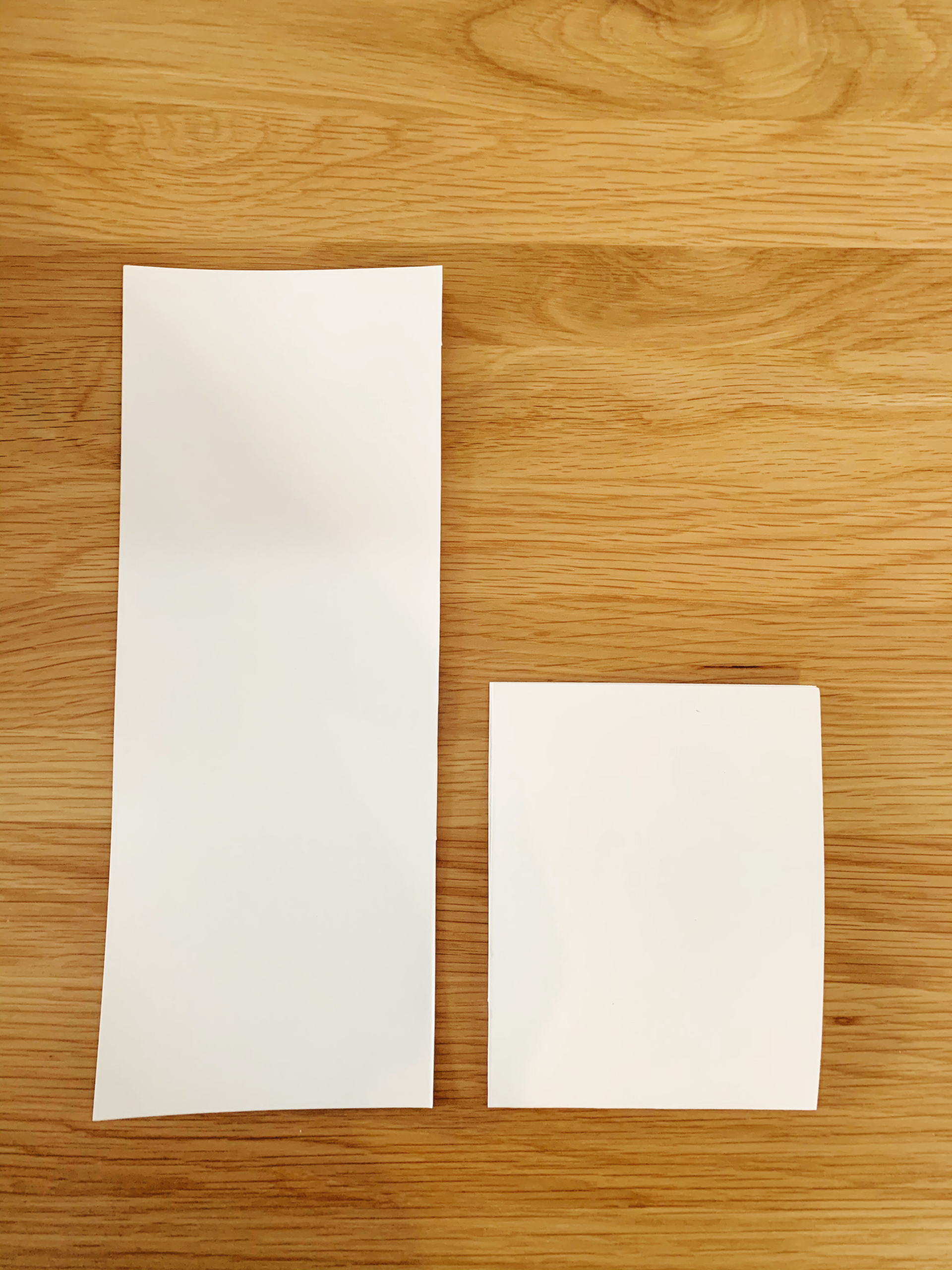
Step 3: Next, fold just the top flap in half again, aligning the bottom edge to the top, and crease it.
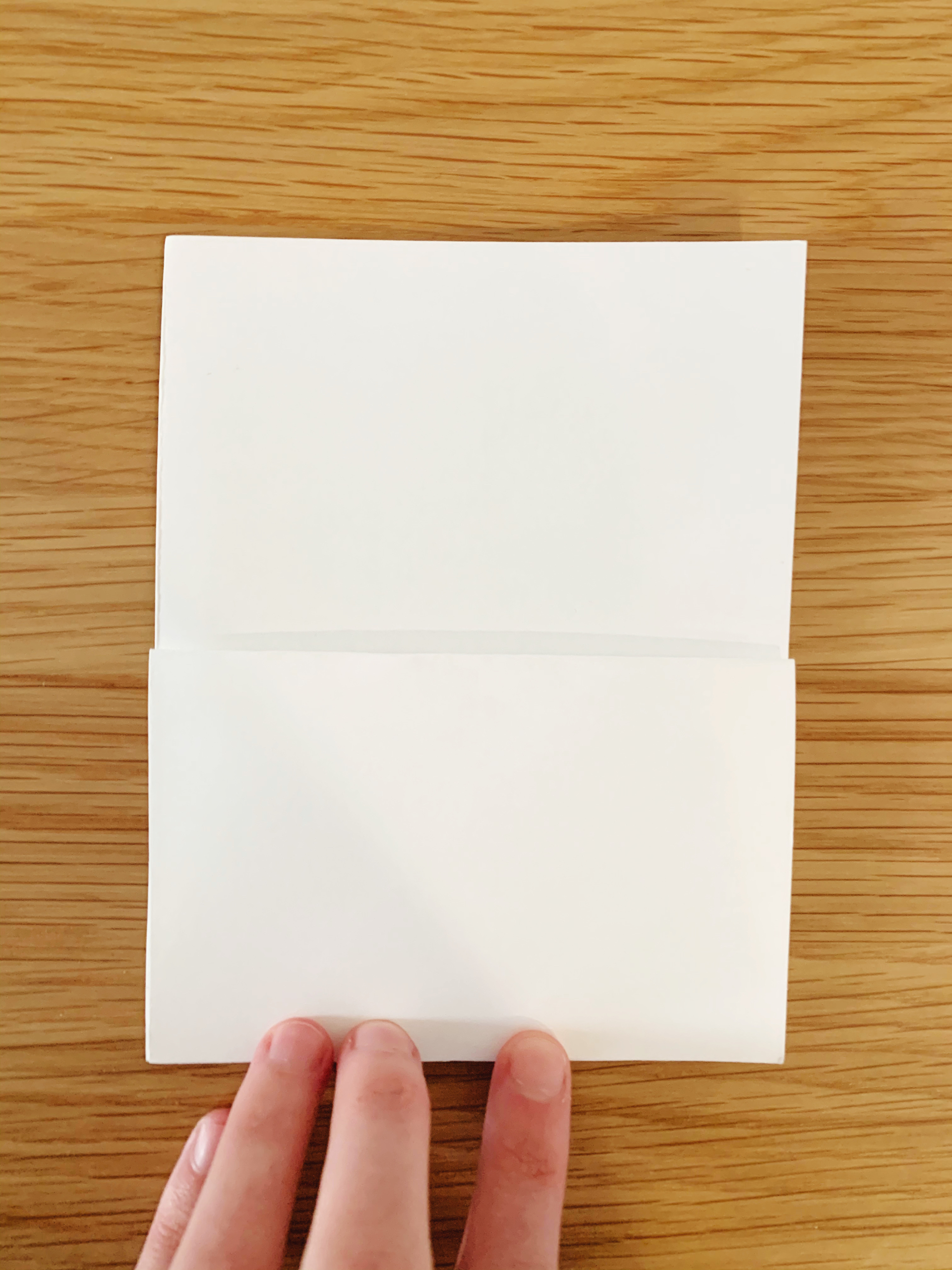
Step 4: Flip the cardstock over and do the exact same fold to the other side. Once you do this, each of the strips of cardstock should resemble a W.
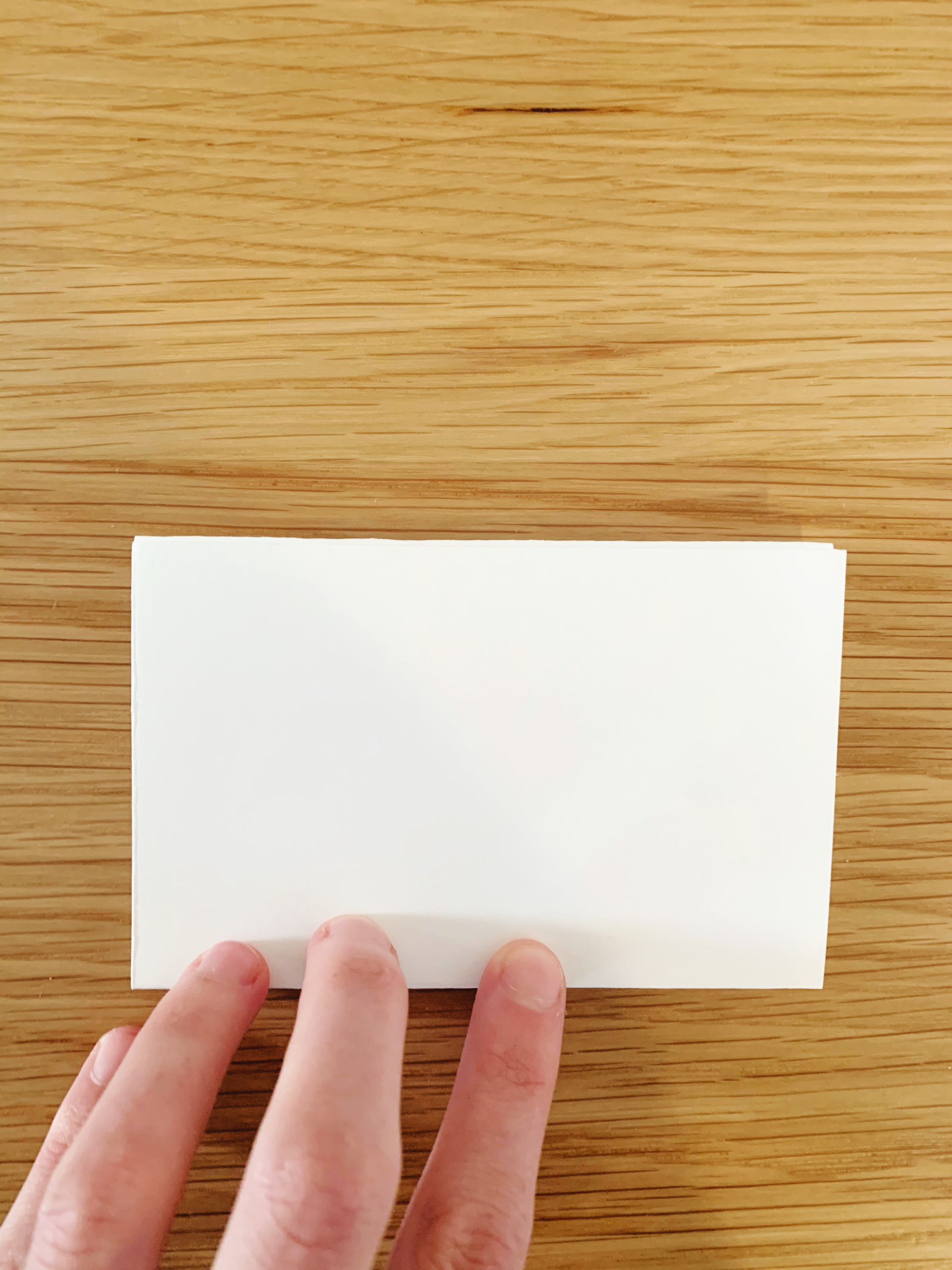
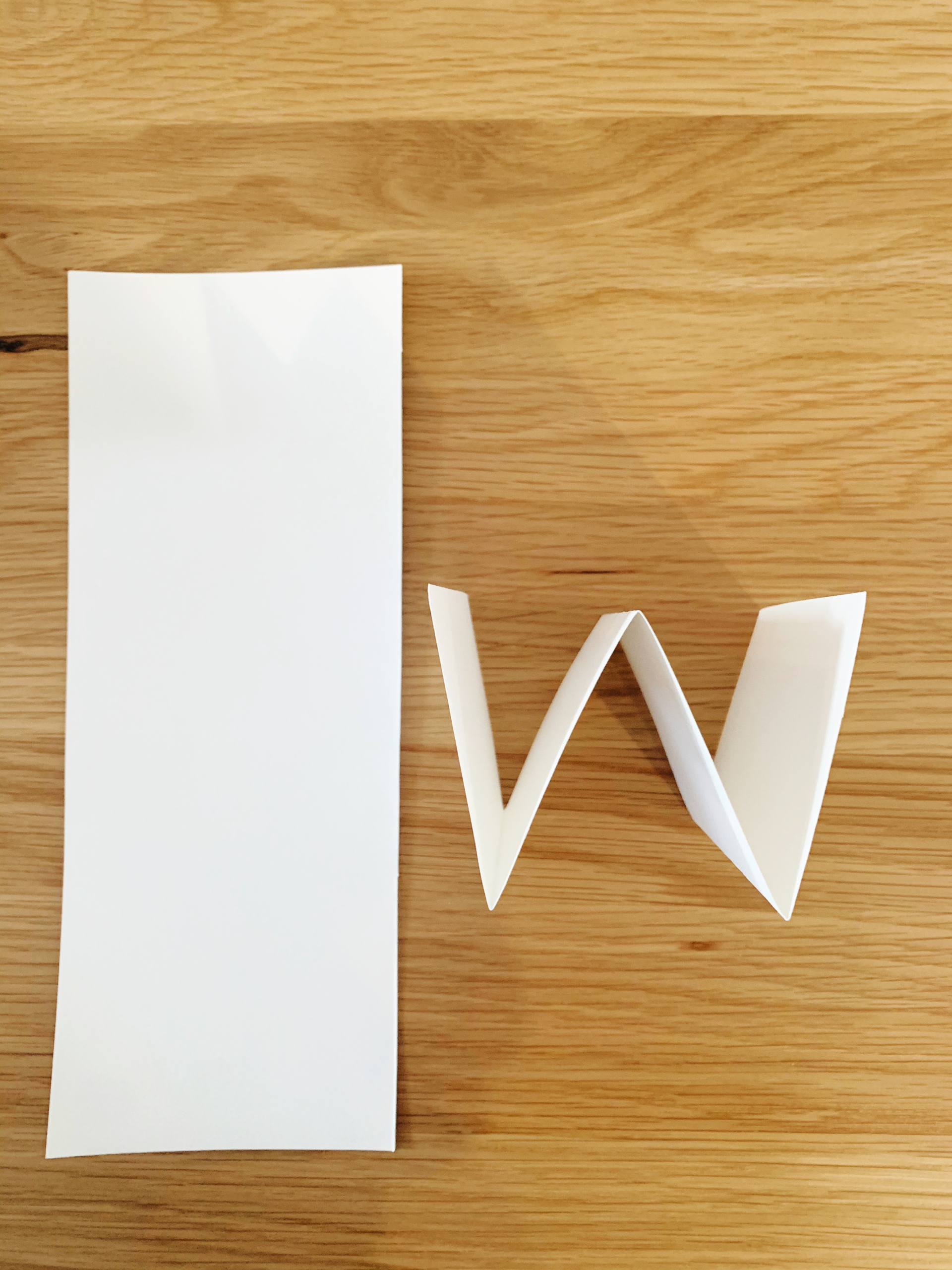
Step 5: Repeat steps 1 through 4 with another sheet of cardstock, so you now have four W’s total.
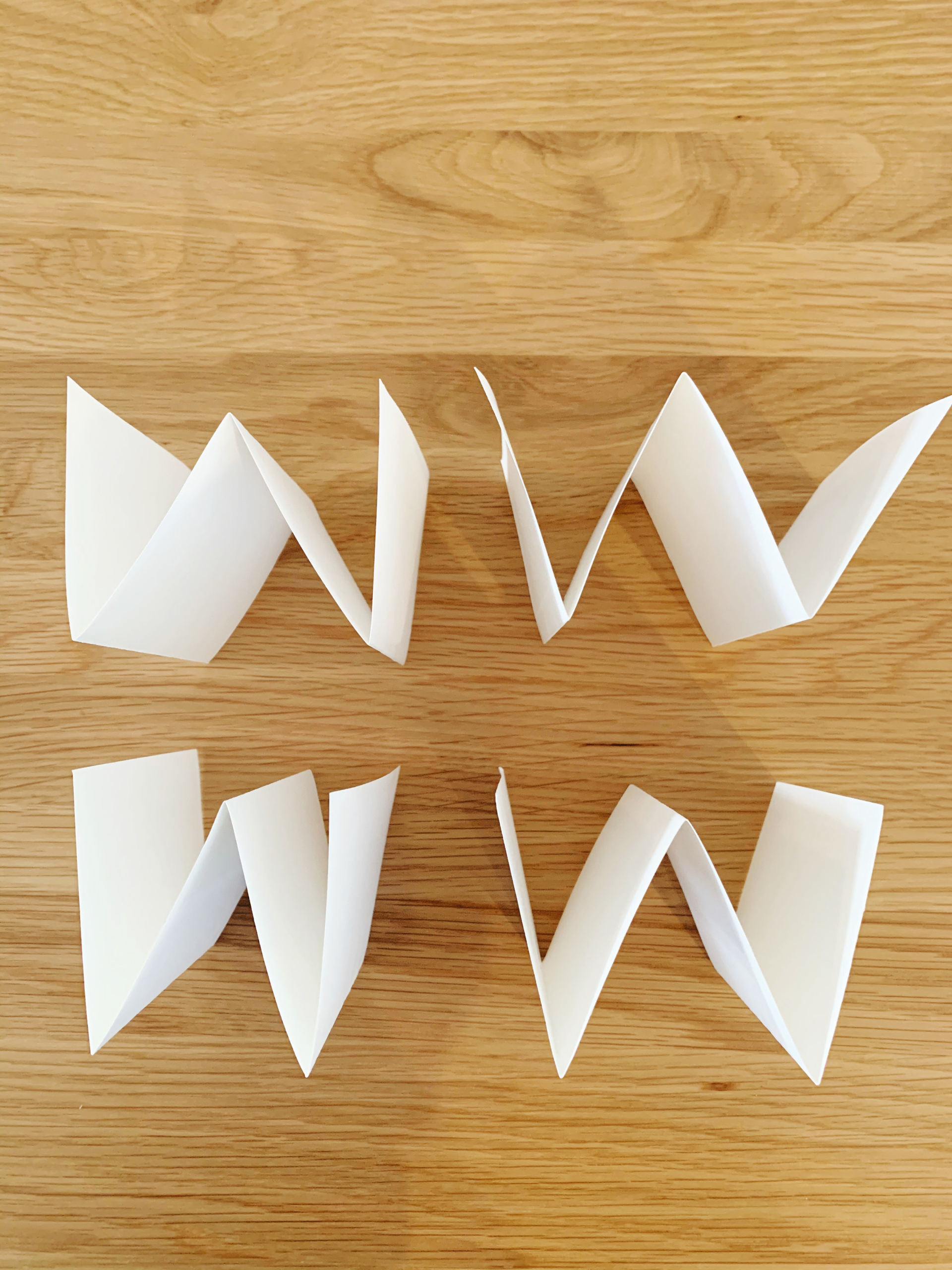
Step 6: Now you are going to glue your W’s together to make an accordion. Put glue on the ends of the W’s to stick all four together in a row. You’ll need to put glue on both ends of two W’s and on one end only of the other two W’s. Tip: If you are using white glue, you will probably want to press the accordion under something heavy (like another book) for a bit so it can dry. I decided to use a hot glue gun so I wouldn’t need to wait for the glue to set. Glue dots would work the same.
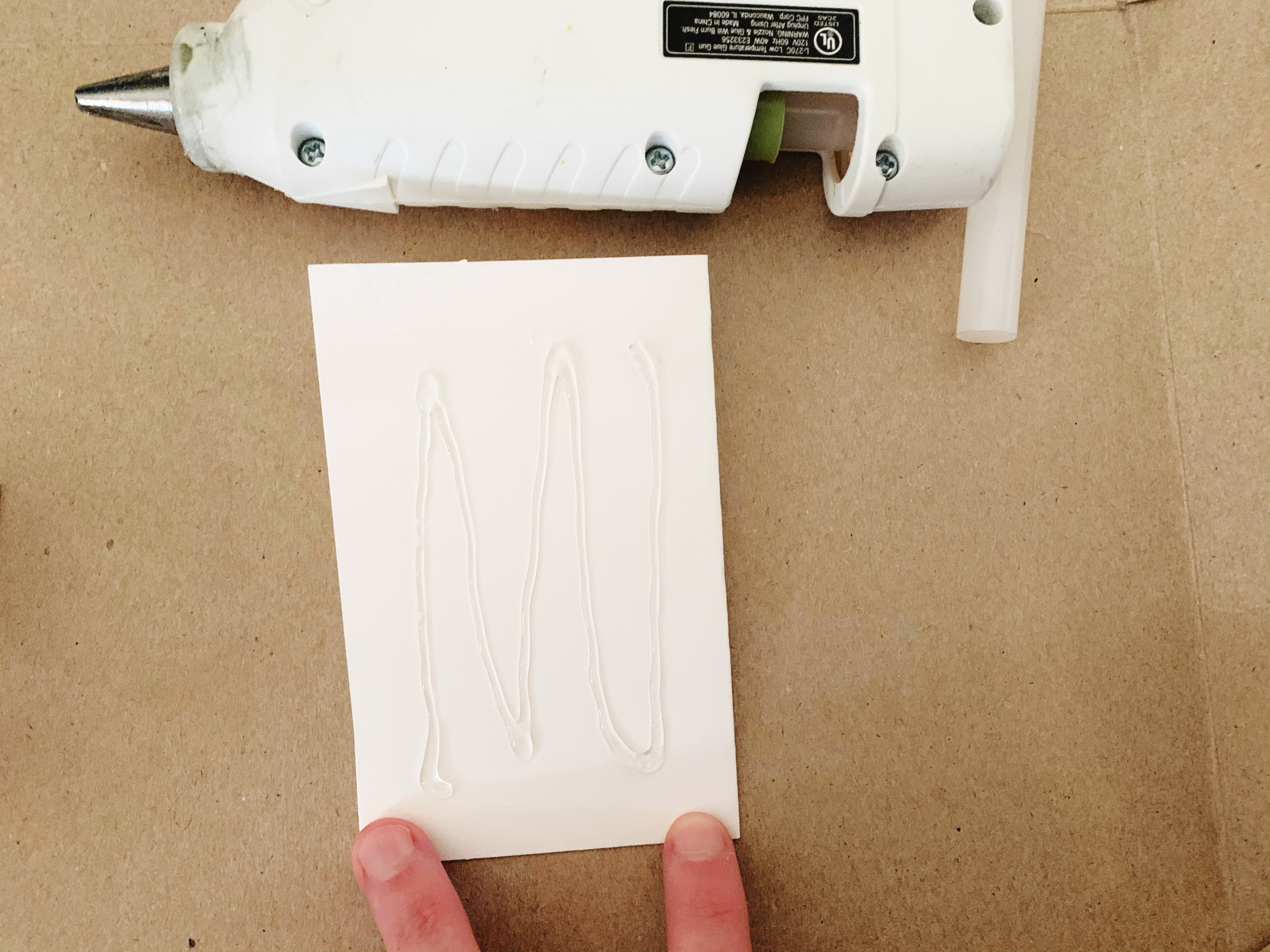
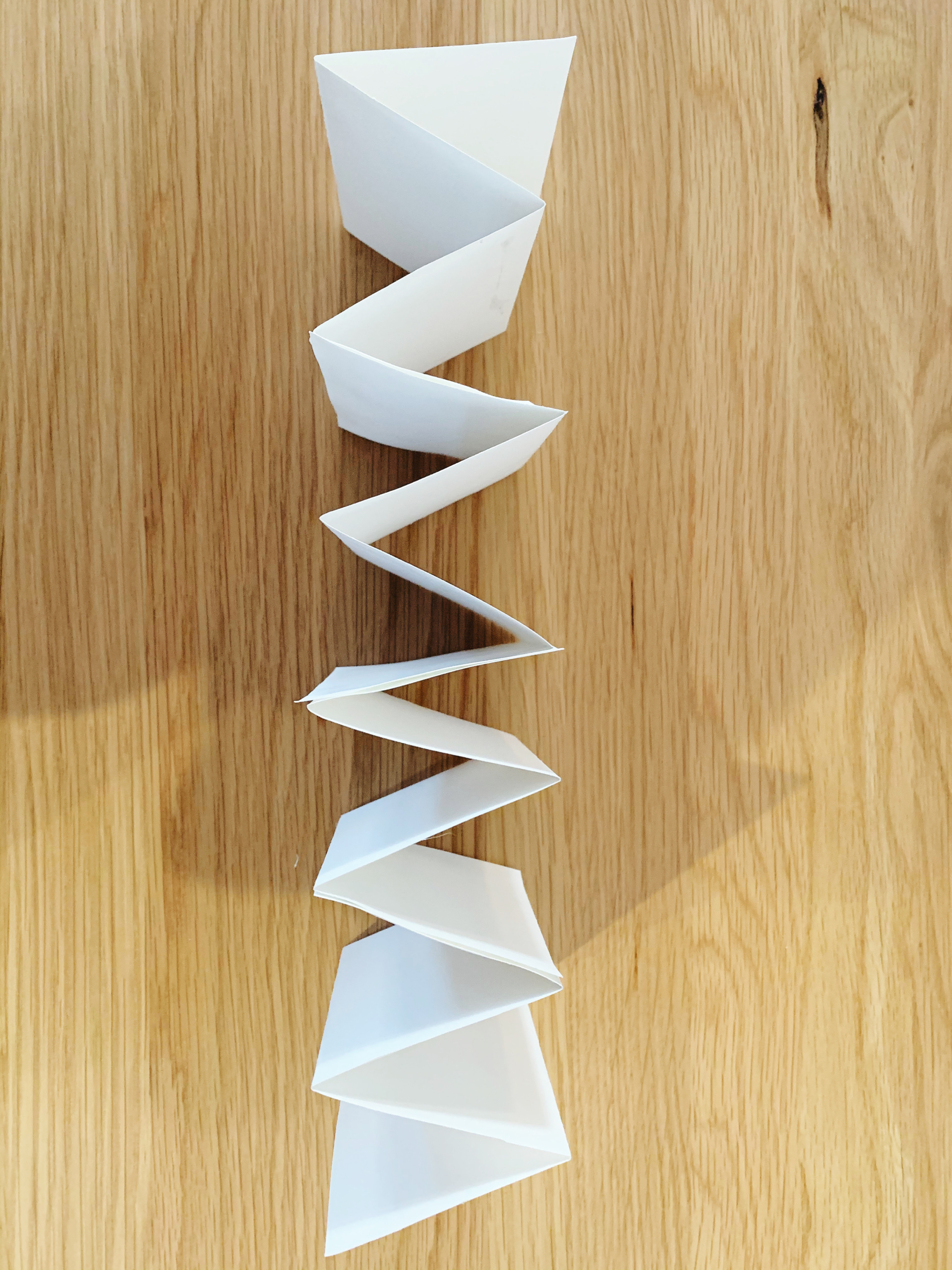
Step 7: Now that your pages are ready, you are going to make the cover of your book. Take your cardboard pieces and cut out two 3” x 4.5” squares.
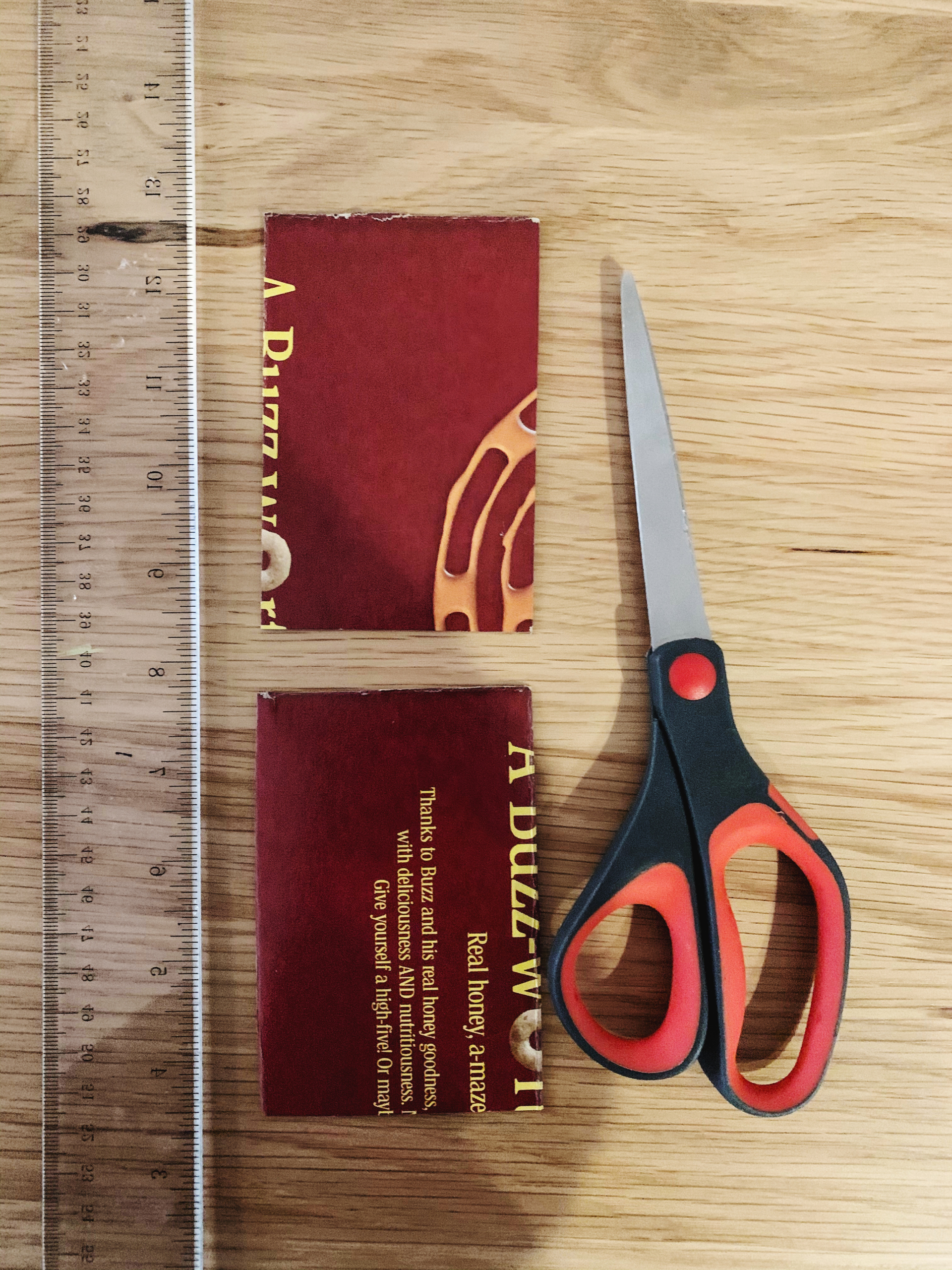
Step 8: Lay the cardboard onto the scrapbook paper, construction paper, or artwork you’re using to cover the book, and cut out two pieces a little larger than the cardboard. I used brown wrapping paper and drew flowers with a white paint pen. There are so many fun ways to decorate your cover! If your kids have old art projects around that you just can’t bring yourself to toss, this is the perfect way to upcycle them!

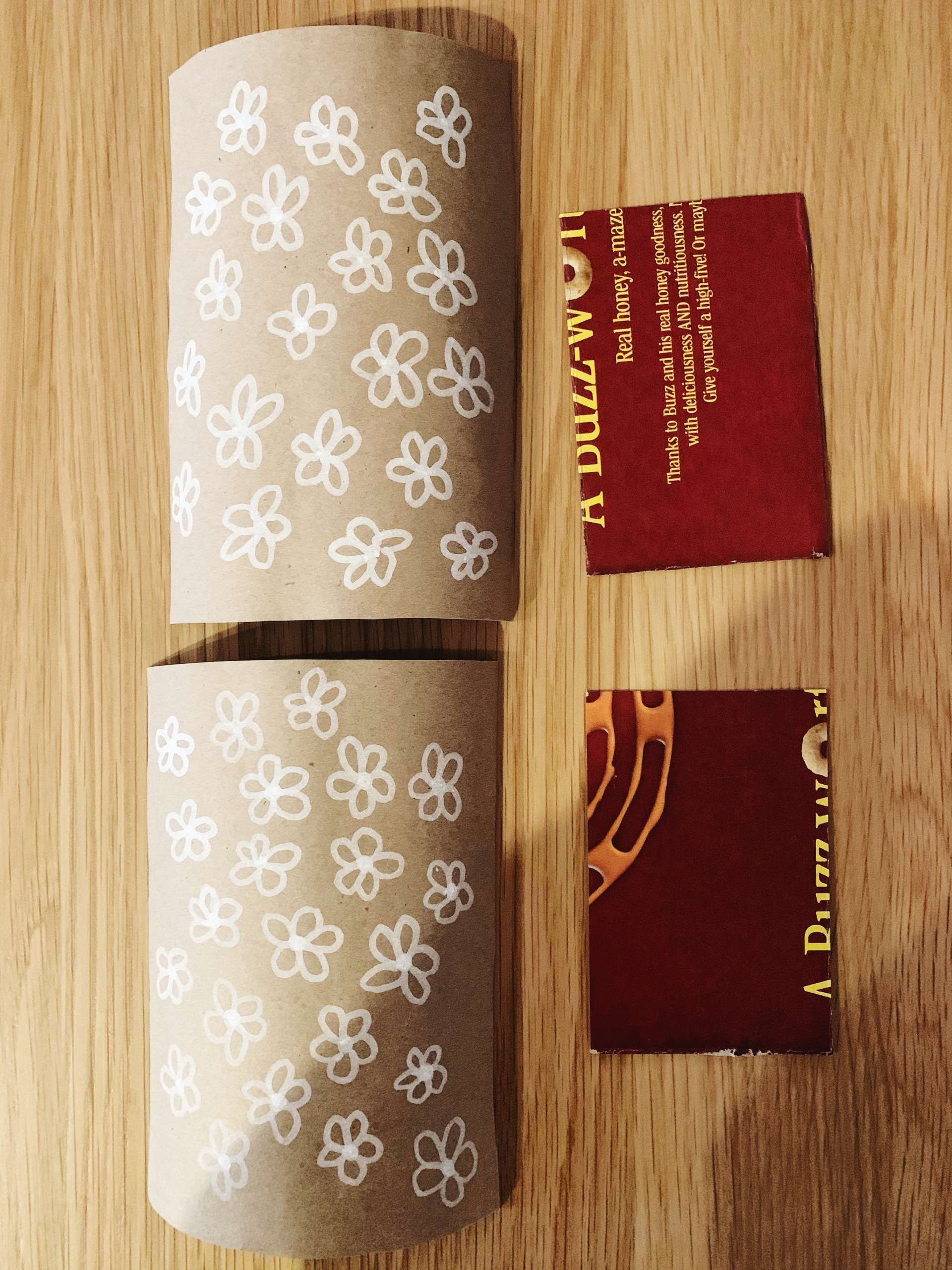
Step 9: Next, glue the cardboard cutouts into the center of the pieces that you just cut out.

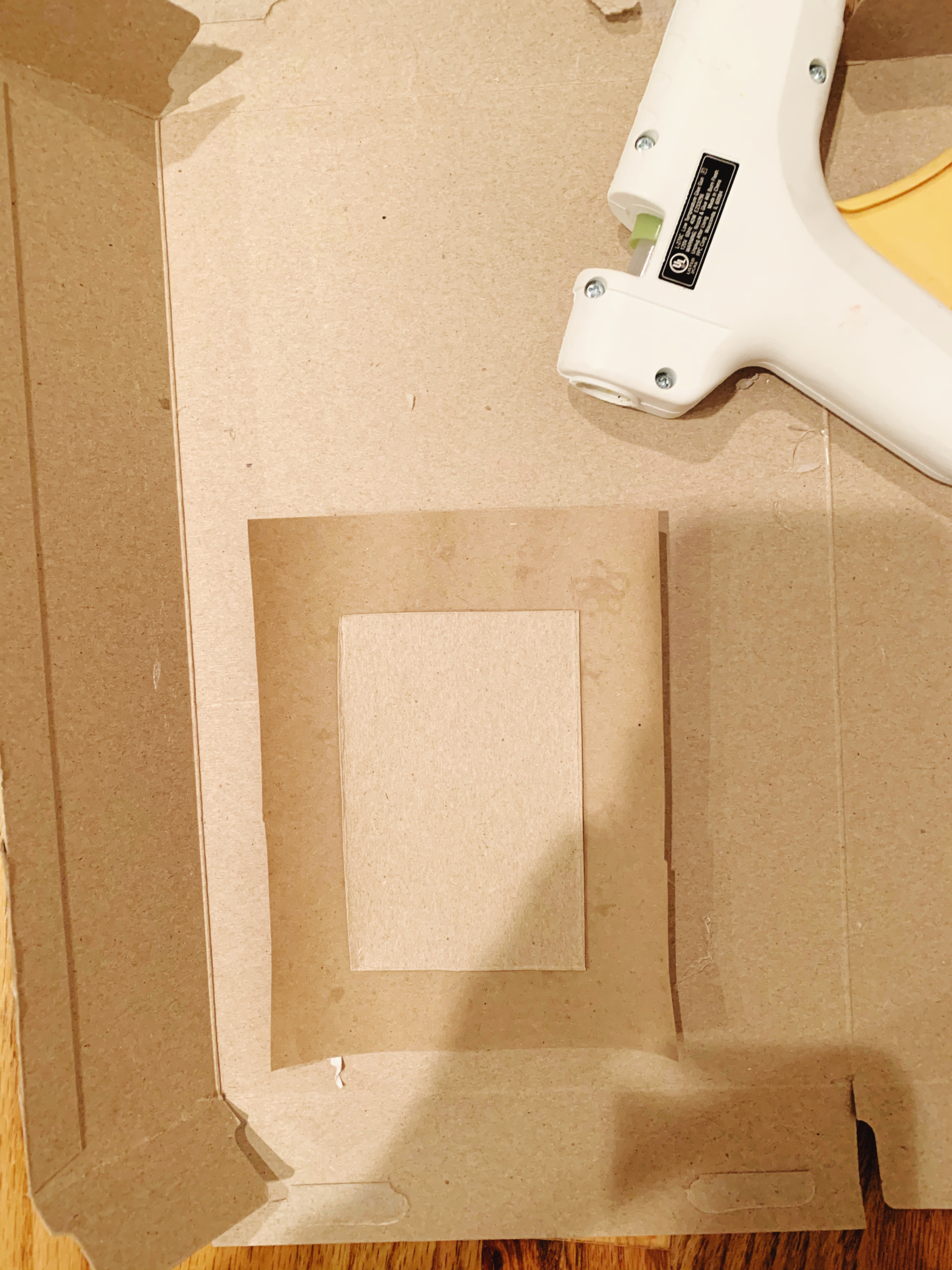
Step 10: Carefully snip off the corners of your scrapbook paper. Cut all the way to the corner of cardboard (this makes it look neat when you fold over the edges!).

Step 11: Once you’ve cut the corners, fold over the flaps of excess paper and glue them into place on the back of the cardboard.

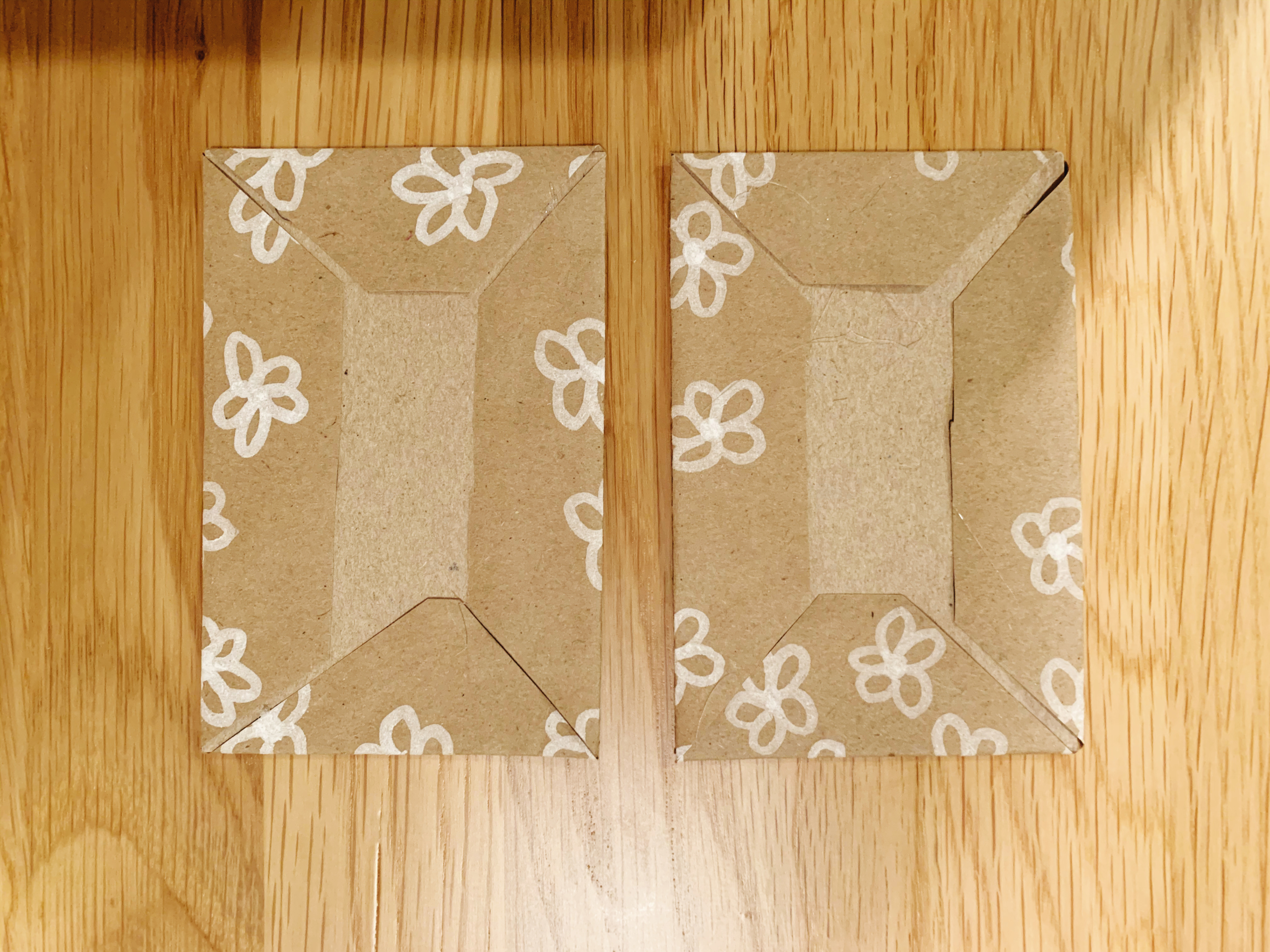
Step 12: You can also add other embellishments that wrap around the cover at this point. I added a ribbon to mine for a pop of color. You can add more decorations at the end, but before gluing your covers down, you will want to add any decorations that will wrap over the edge, so it has a nice clean finish!
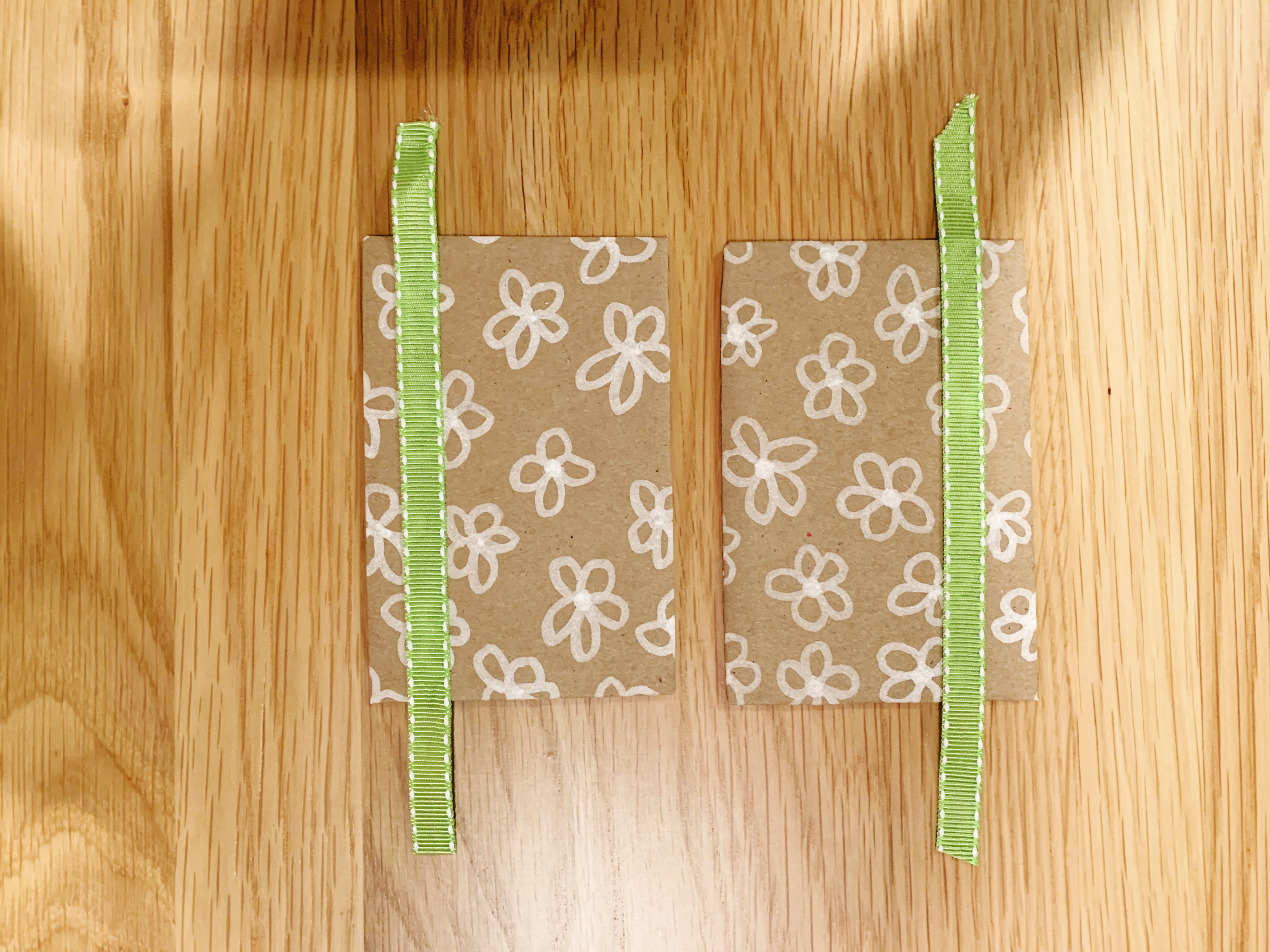
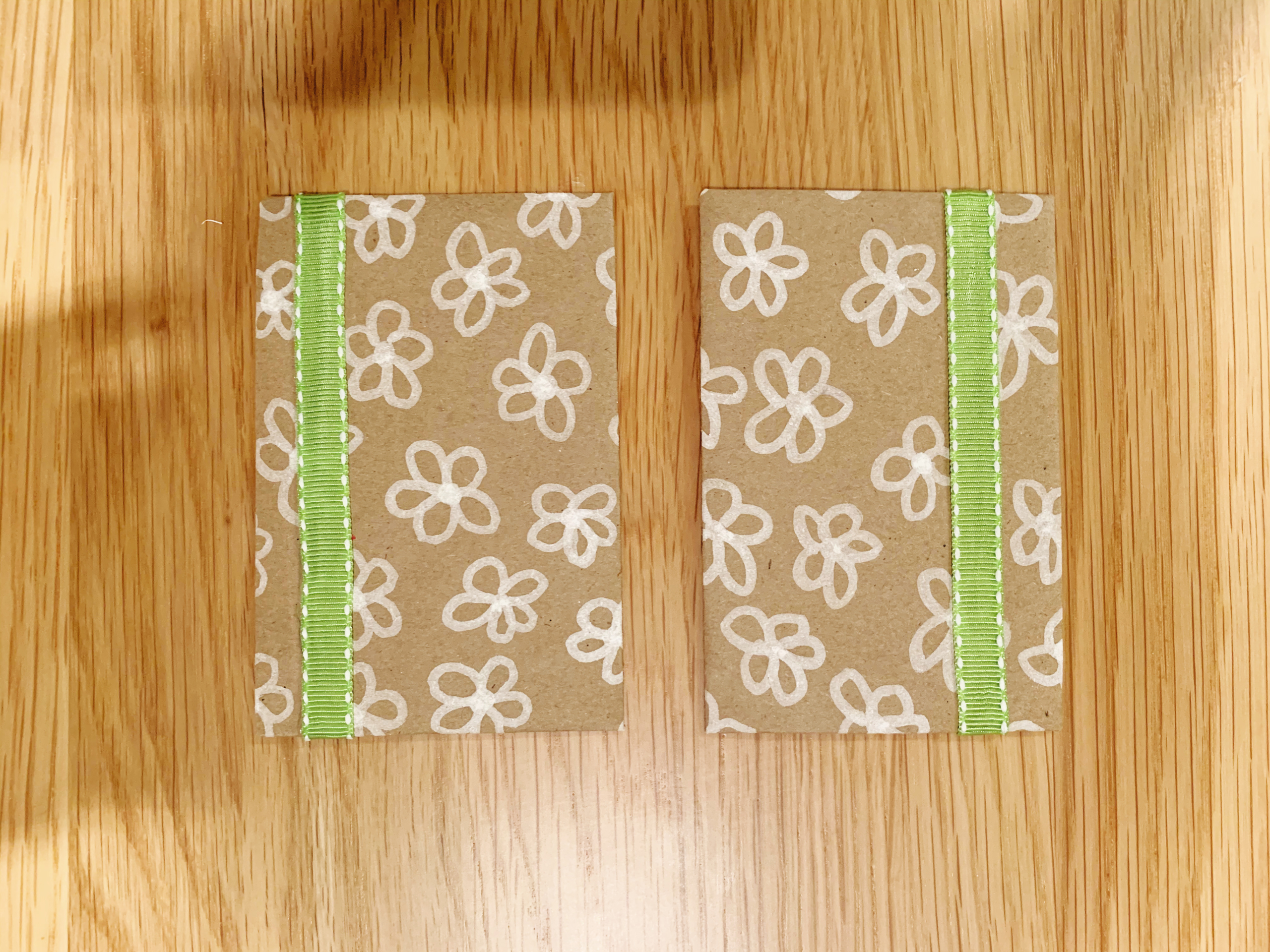
Step 13: The last step is to fully assemble your book. To do so, glue the covers to each end of the paper accordion. Again, if using white glue, I recommend placing your book under a heavy book while the glue sets and dries.
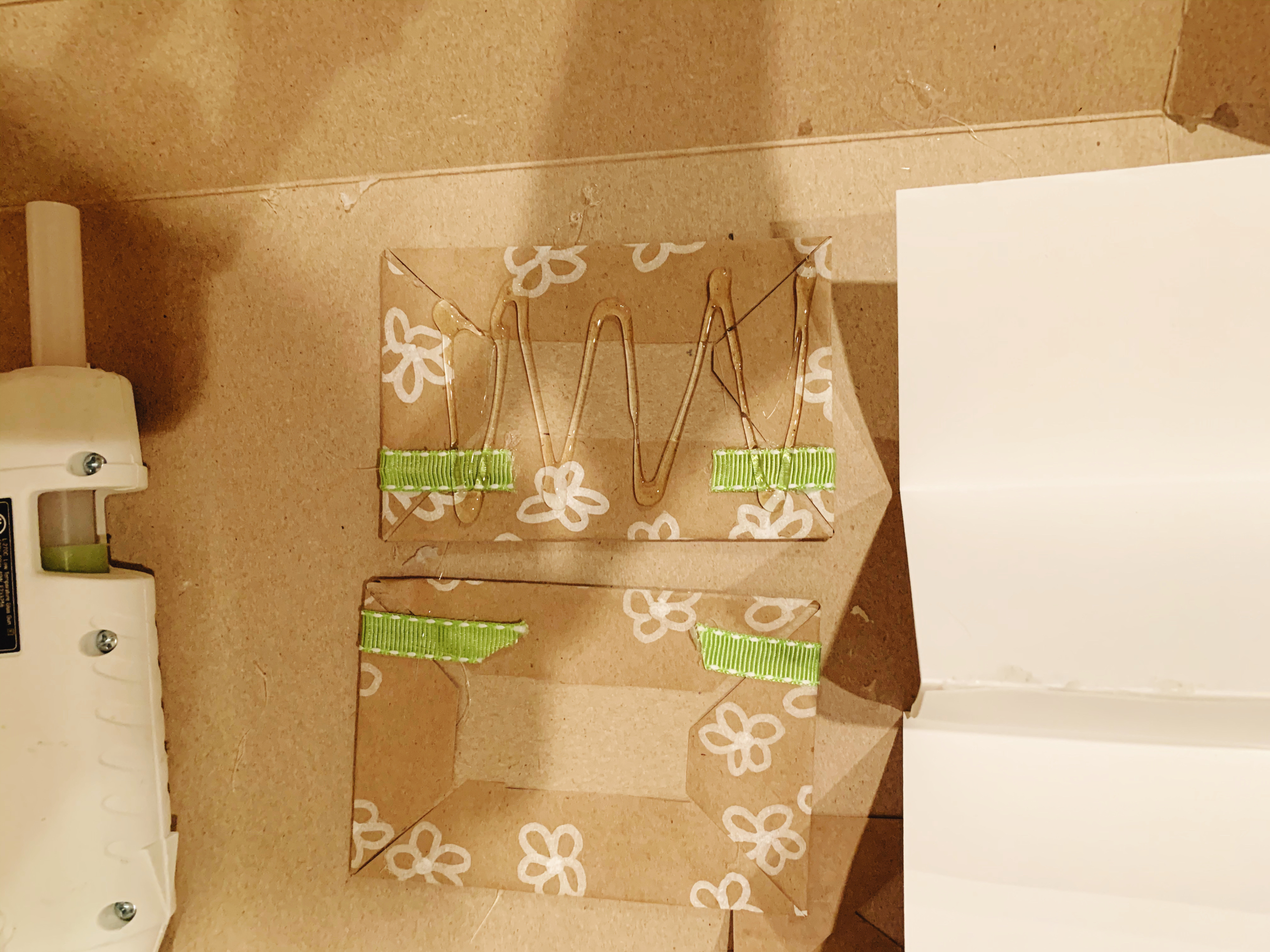
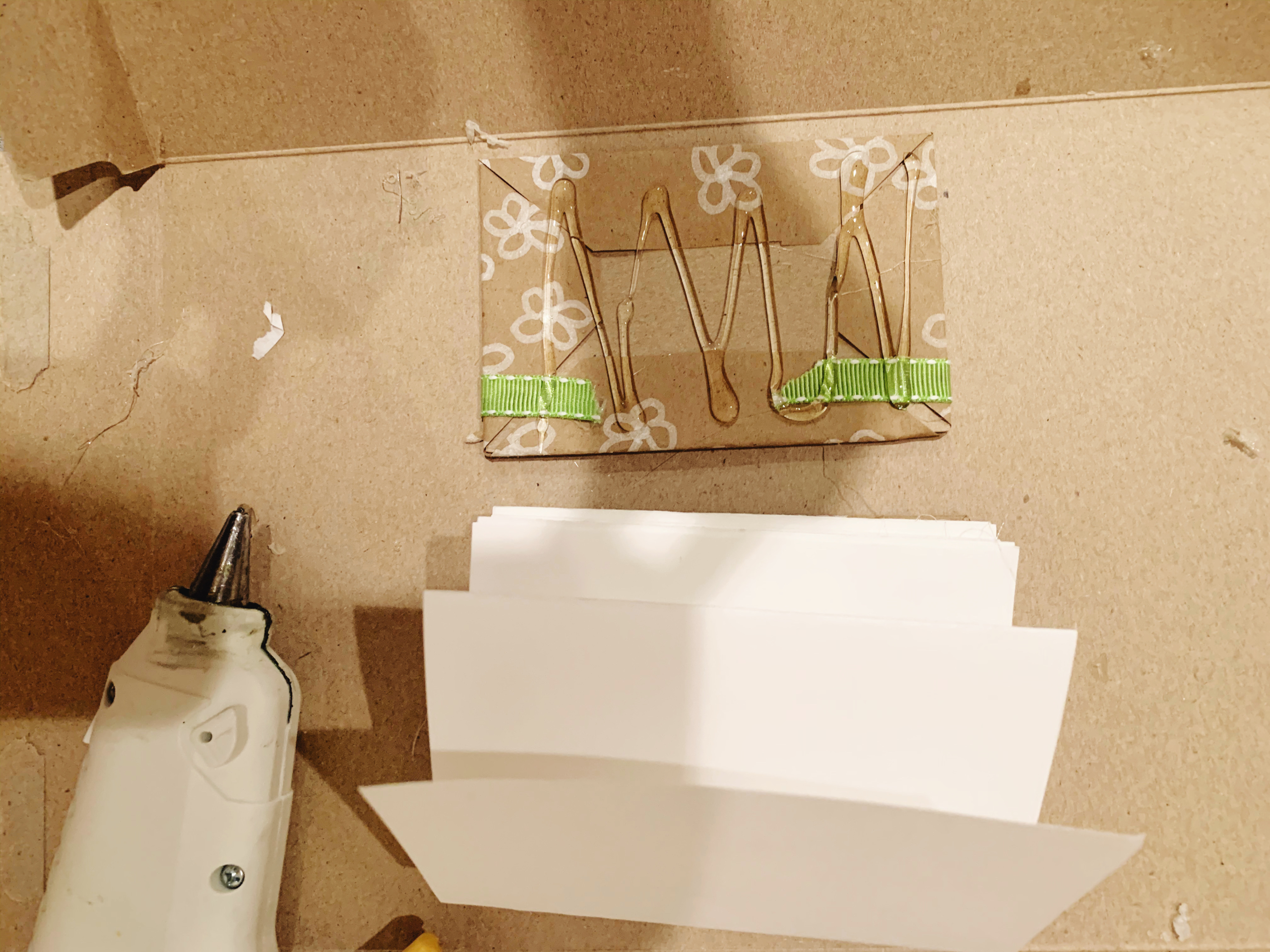
Voila! Now you have a beautiful book that you can decorate with anything or everything from your craft drawer—rhinestones, glitter, markers, ribbon, or anything else you can think of. It’s your book, so have fun adding your own personal flair! You can use these adorable books as notebooks, help kids create their own storybooks inside them as described above, or give them as gifts or party favors.
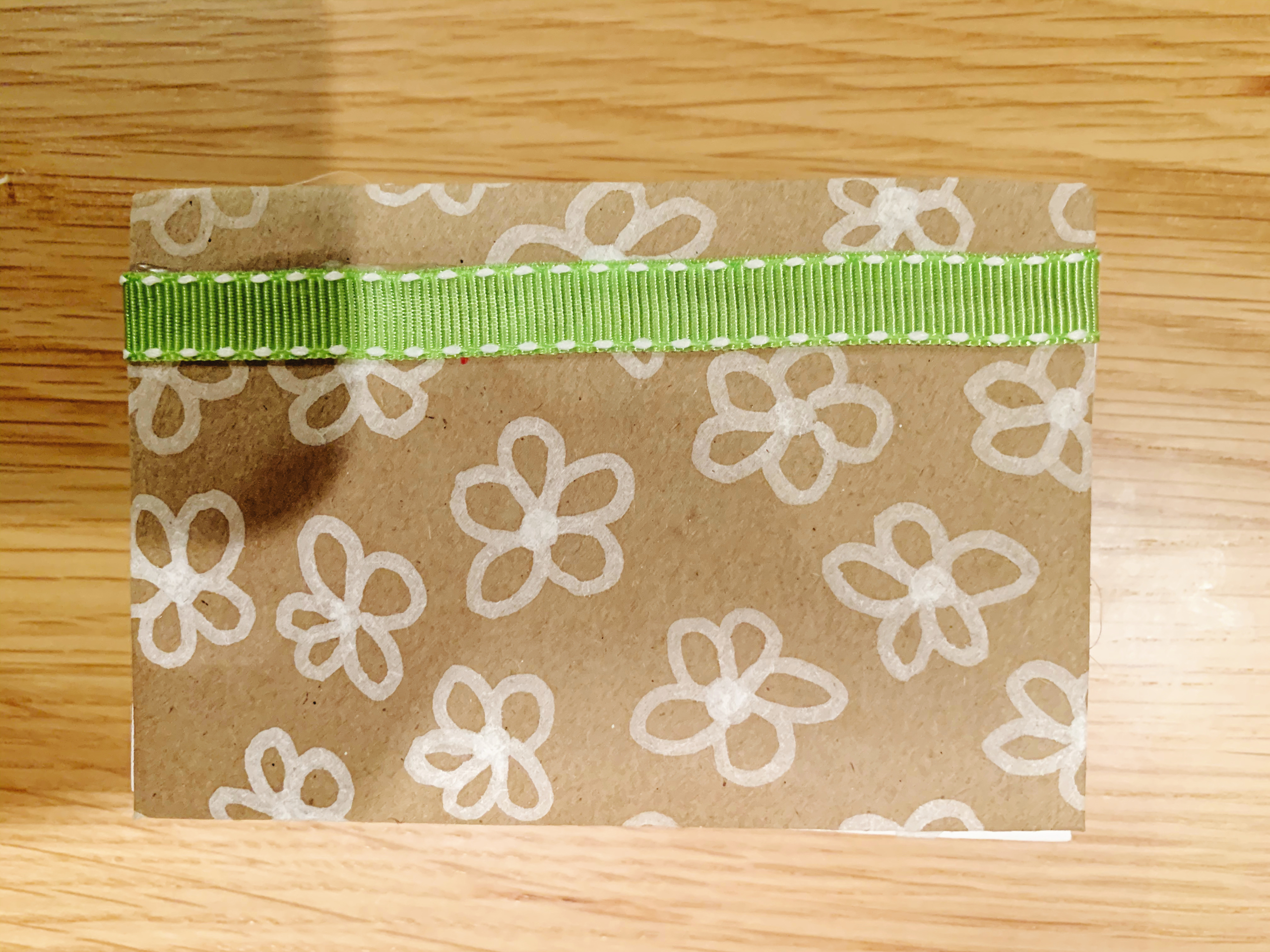

There’s nothing quite like a new notebook for inviting possibility, its crisp pages tantalizing us with speculation about what’s to come. And personalizing a notebook is the perfect way to channel that sense of possibility and really make it our own. So why not kick off a new school year, a new project, or a new diary with this DIY book-page decoupage notebook?
This easy collage project is appropriate for all ages, and letting kids customize their notebooks is a fun way to get their buy-in for new learning adventures. This craft also makes unique gifts or party favors—we love it as a make-your-own-favor activity for kids’ parties. (Hint: It also works to give old notebooks new life and keep all those mostly empty pages out of the trash. Just tear out the used pages, jazz up the covers with decoupage, and voila! Younger siblings will never know the difference, but the planet will thank you.)

Materials:
- Patterned paper (or old book pages, magazines, wrapping paper, etc.)
- Notebook
- Mod Podge
- Ruler
- Scissors
- Sponge brush
- Pencil
Cost:
You can find a basic notebook or composition book for a few dollars at just about any grocery or corner store, or maybe you already have one around the house you’re looking to upgrade. Mod Podge can be purchased at any craft store for around $5-$10. You can pick up a foam brush at the same time for under a dollar.
Step 1: Start by taking your choice of paper and tracing an outline of your notebook cover, front and back (make sure you are tracing on the back of your paper). If your paper already has a straight edge, use that for the edge that will go up against the spine of the notebook. You could also give your notebook a fun collage look by cutting up your paper into several pieces and applying it that way!

Step 2: Next you will cut this out but you will want to leave about ½ inch extra around top, bottom and one edge of the piece that you will wrap around the inside of the notebook so don’t worry about keeping it perfect straight. The other edge will go against the spine of your notebook so keep that nice and straight, or use the straight edge of your paper like I did and you won’t need to touch it! Do this for both your front and back pieces.
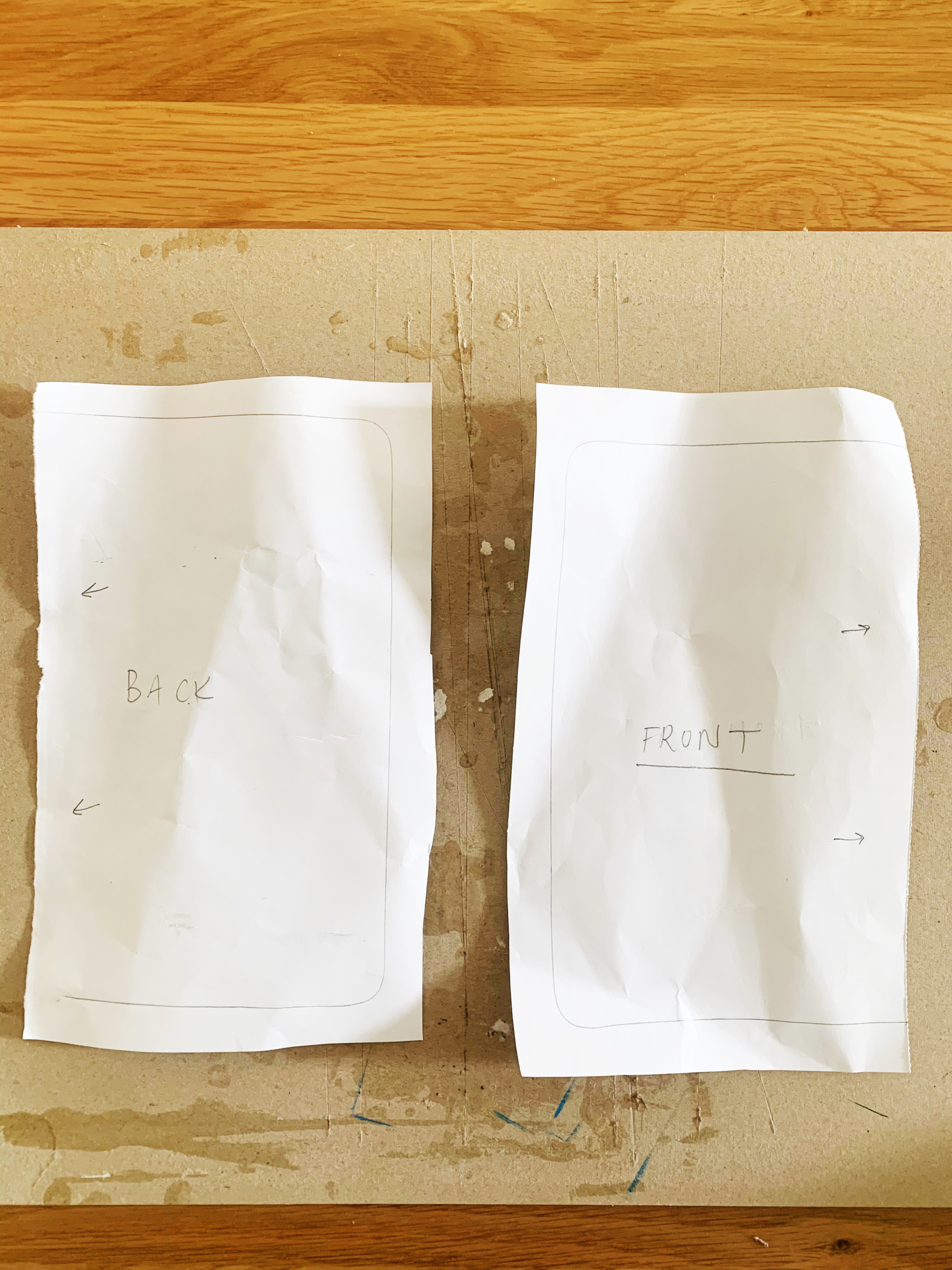
Step 3: Once you have your pieces cut out, you are ready to start pasting them onto your notebook. Make sure you are working on a surface that is ok to get some Mod Podge on—it can get a little sticky and messy! With your foam brush, put Mod Podge both on the back of your paper and on your notebook. Then stick the piece directly onto the notebook.
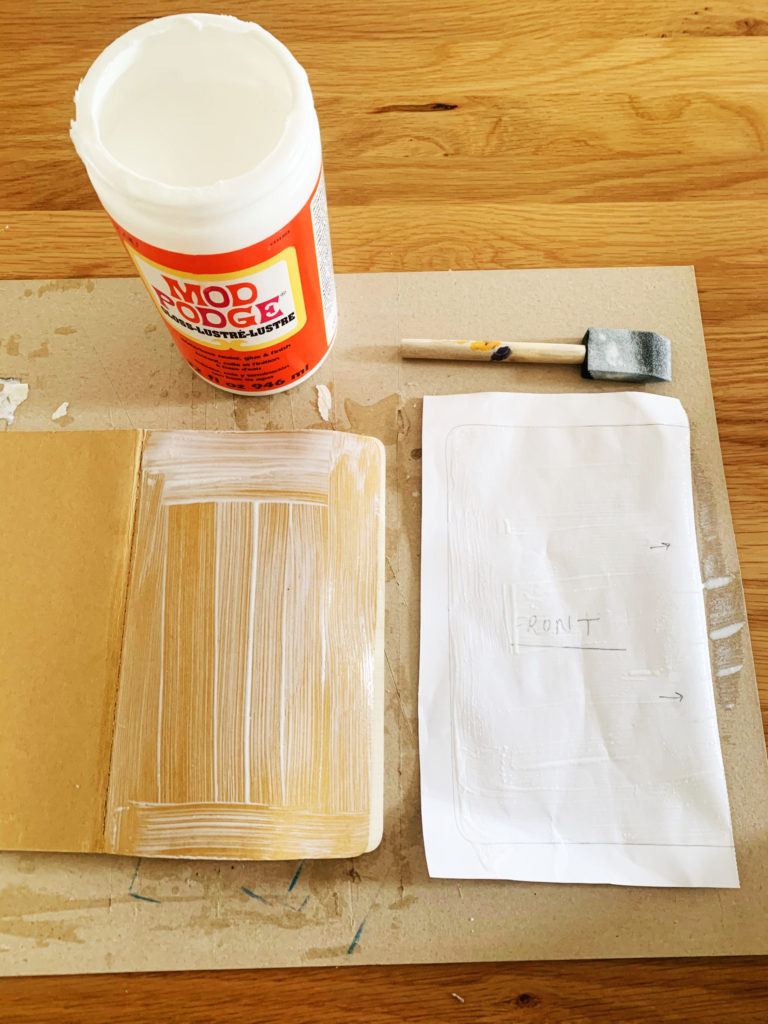
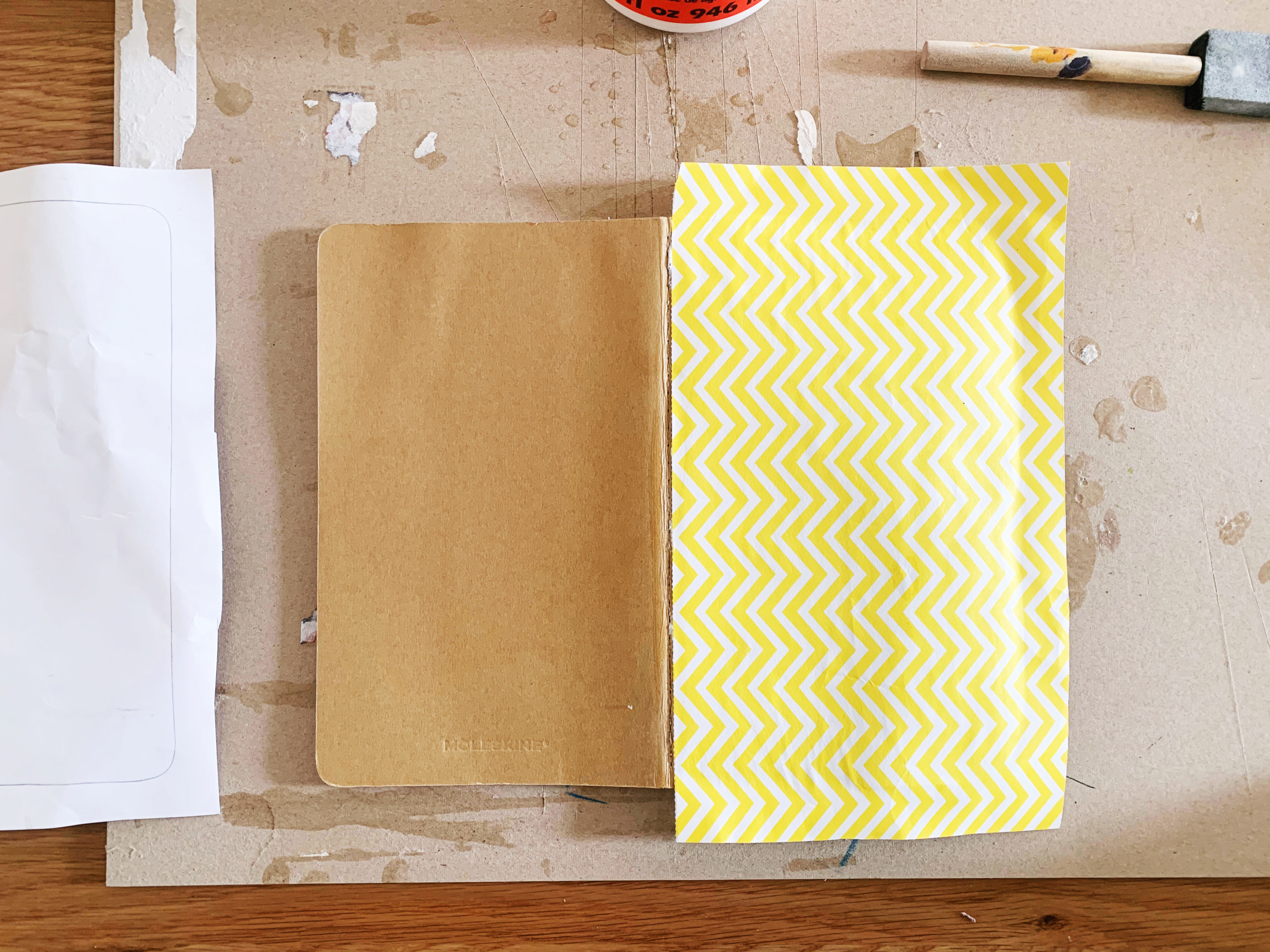
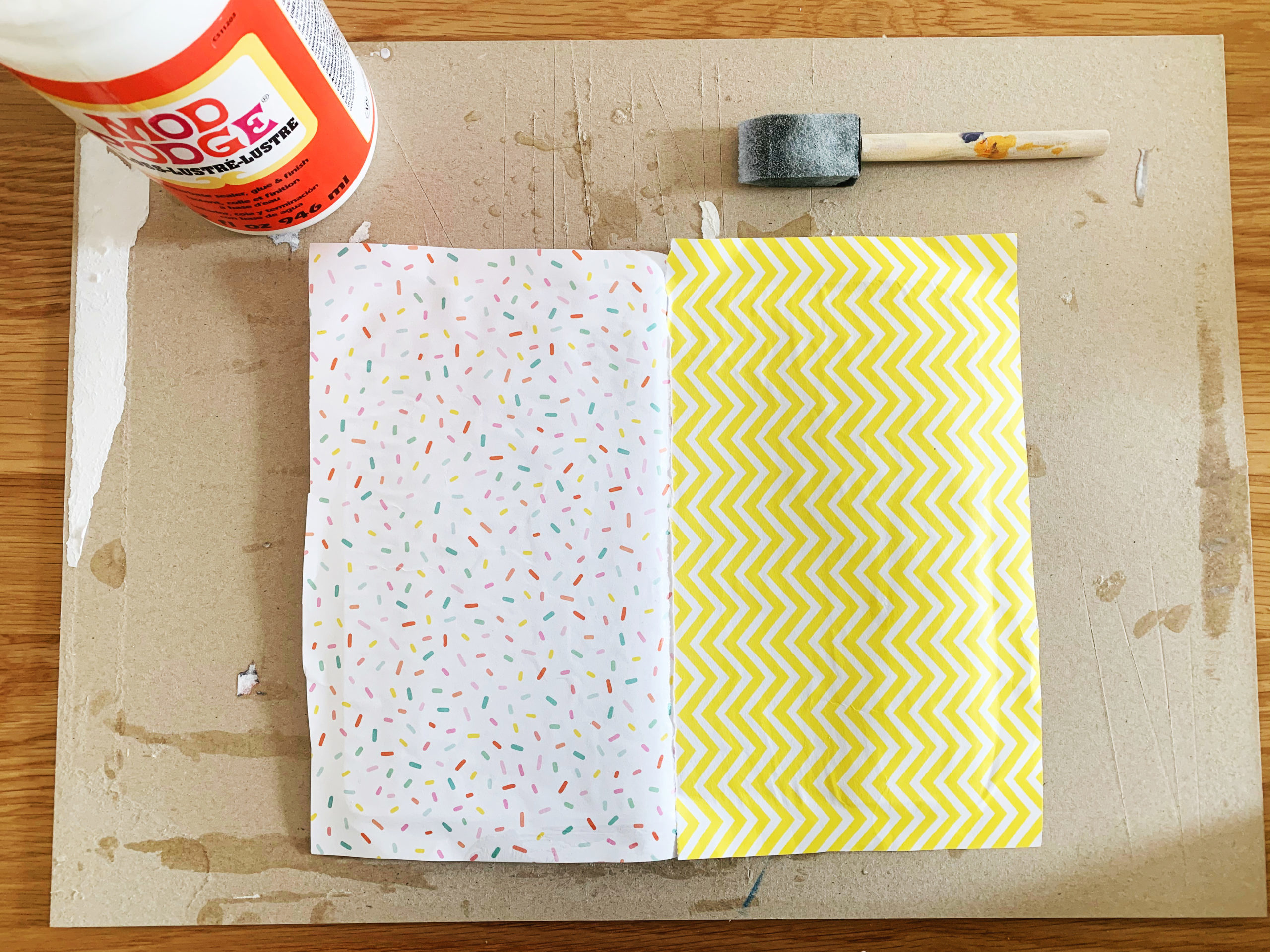
Step 4: For the corners, take your scissor and snip the very corner, this will let you fold the paper over the edges. Add a little more Mod Podge to the back of the paper, and fold the three edges over and secure them to the inside flap of your notebook.
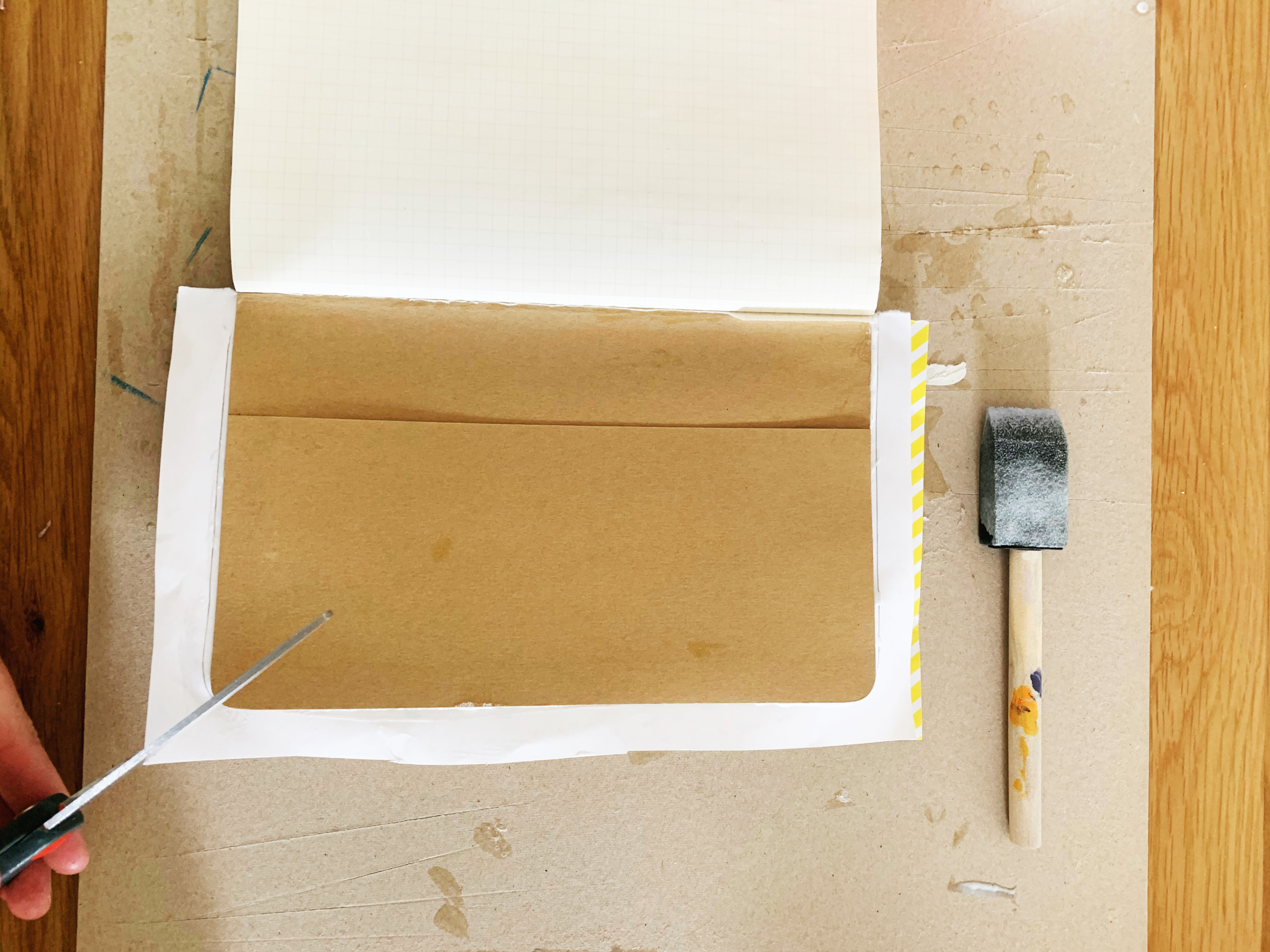
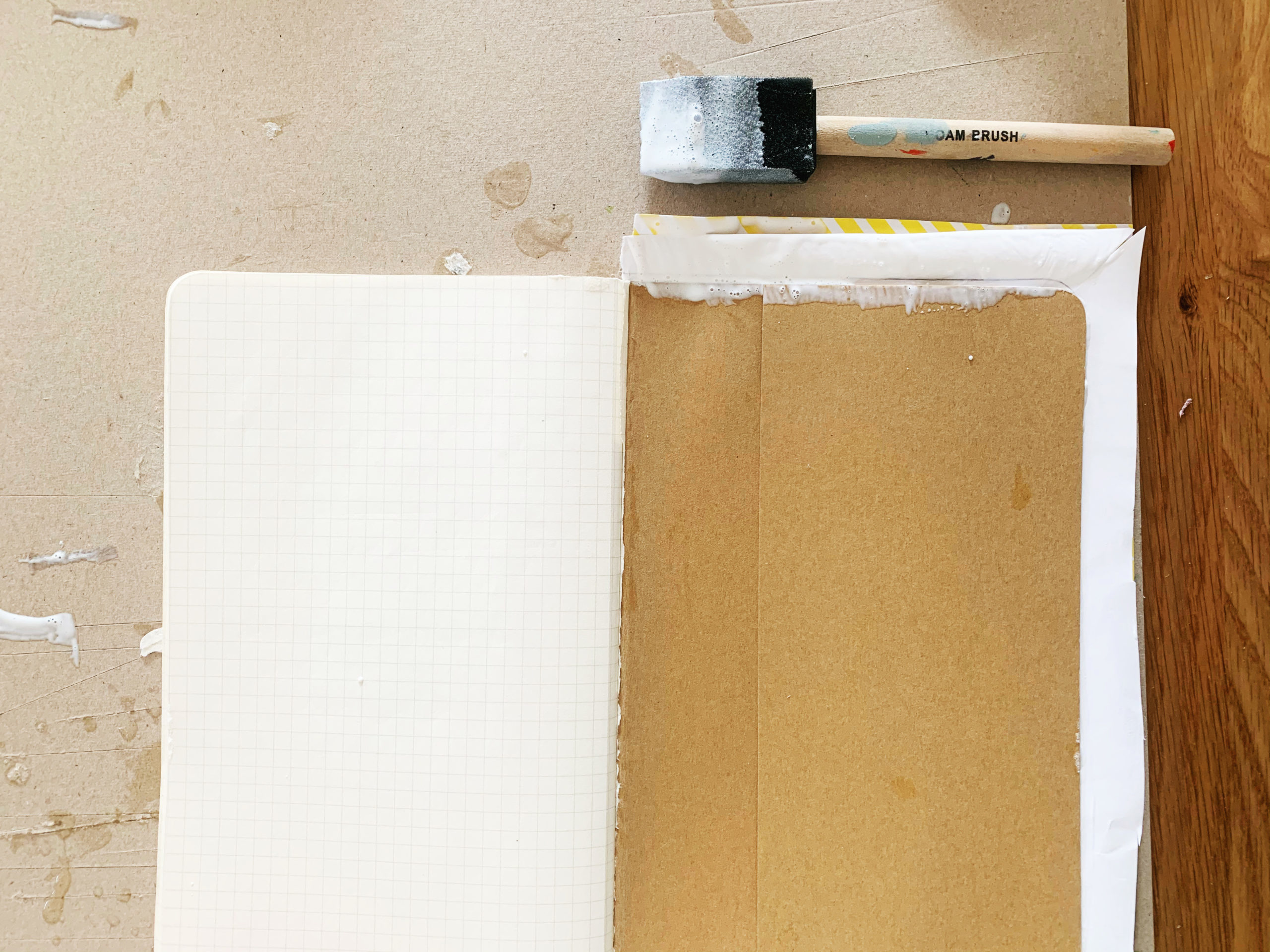
Step 5: Once you fold the three edges over, take your scissors and carefully snip any extra paper around the very corner. This will make the edges look nice and finished.
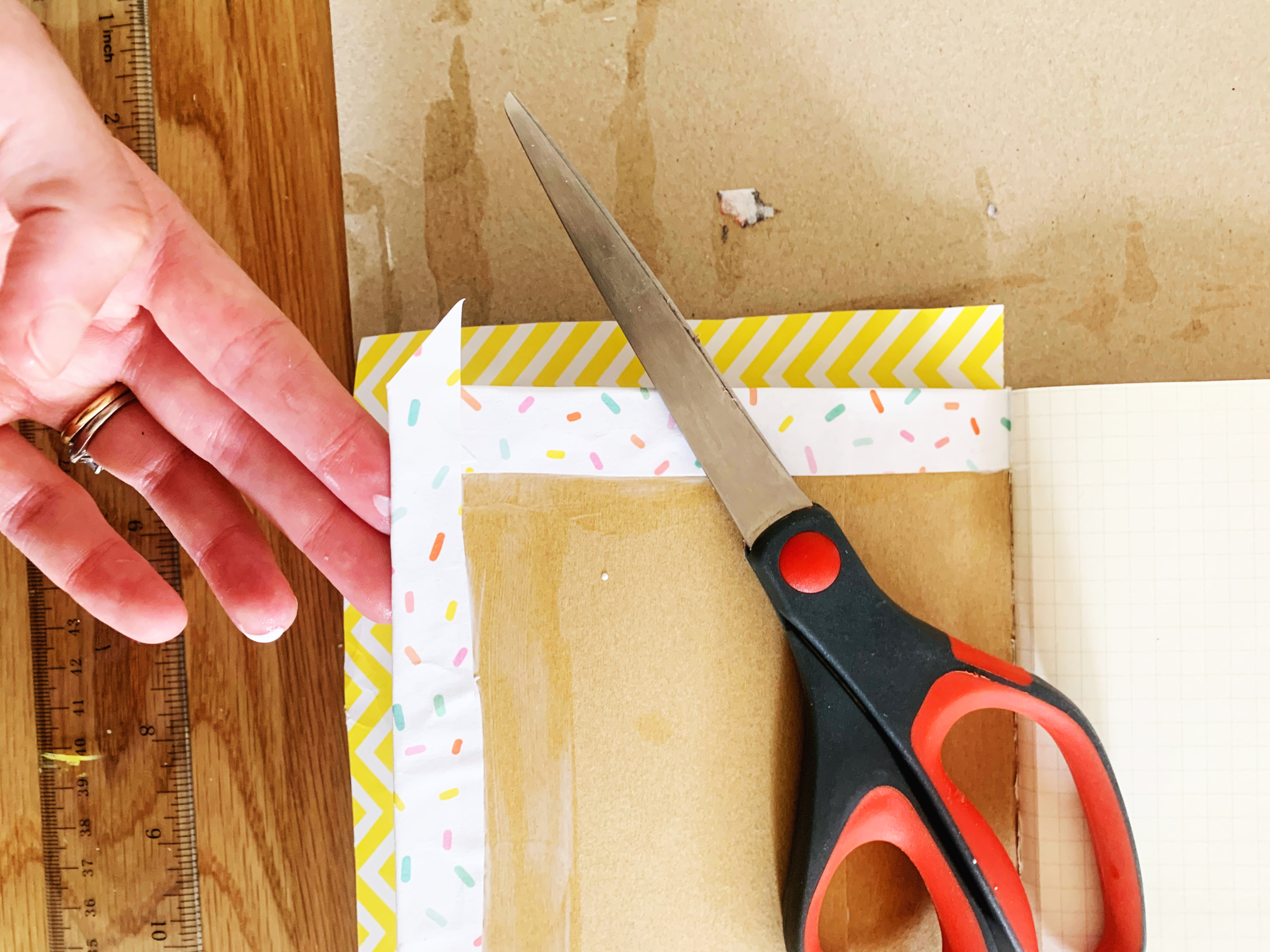
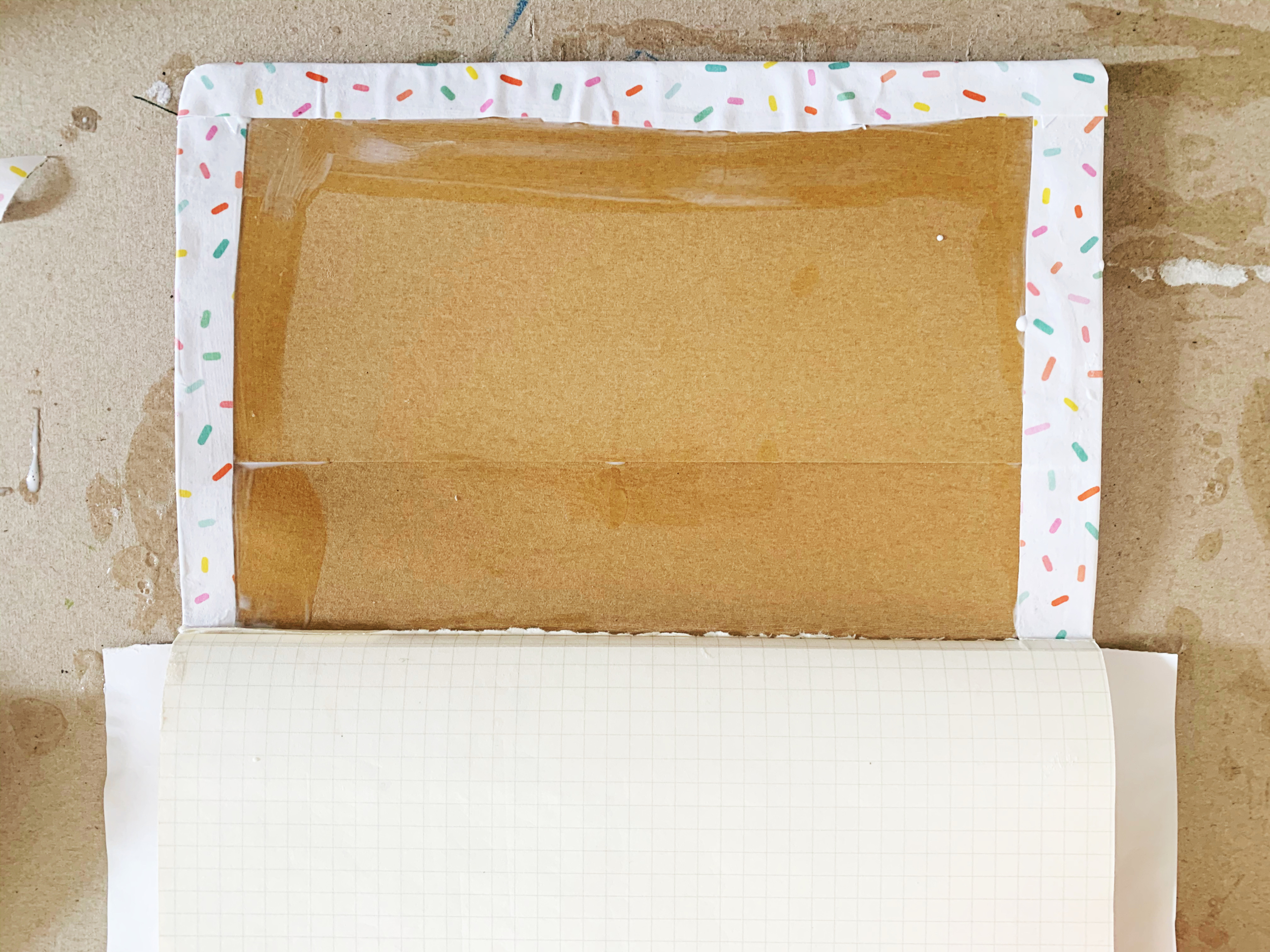
Step 6: Now is the time to add a little accent if you want. I decided to add a “K” to the front of my notebook and a decorative stripe down the middle to the back. Have fun with this step! You could add cut-out shapes, polka dots, letters, etc. Tip: This is a great way to reuse old wrapping paper scraps!
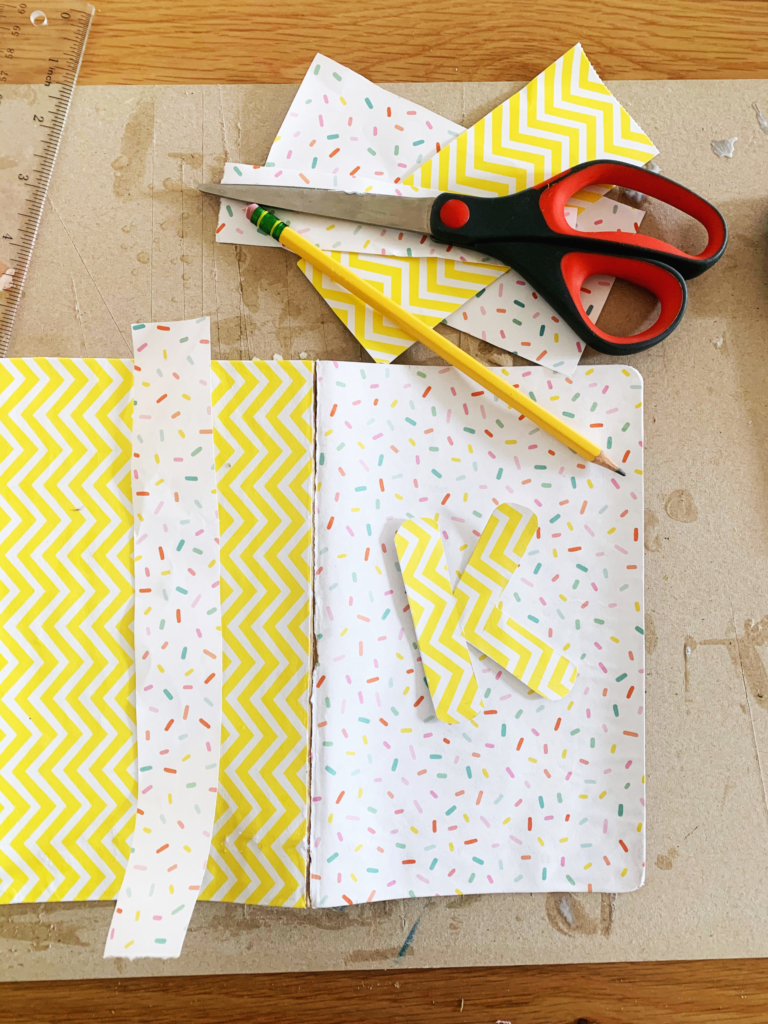
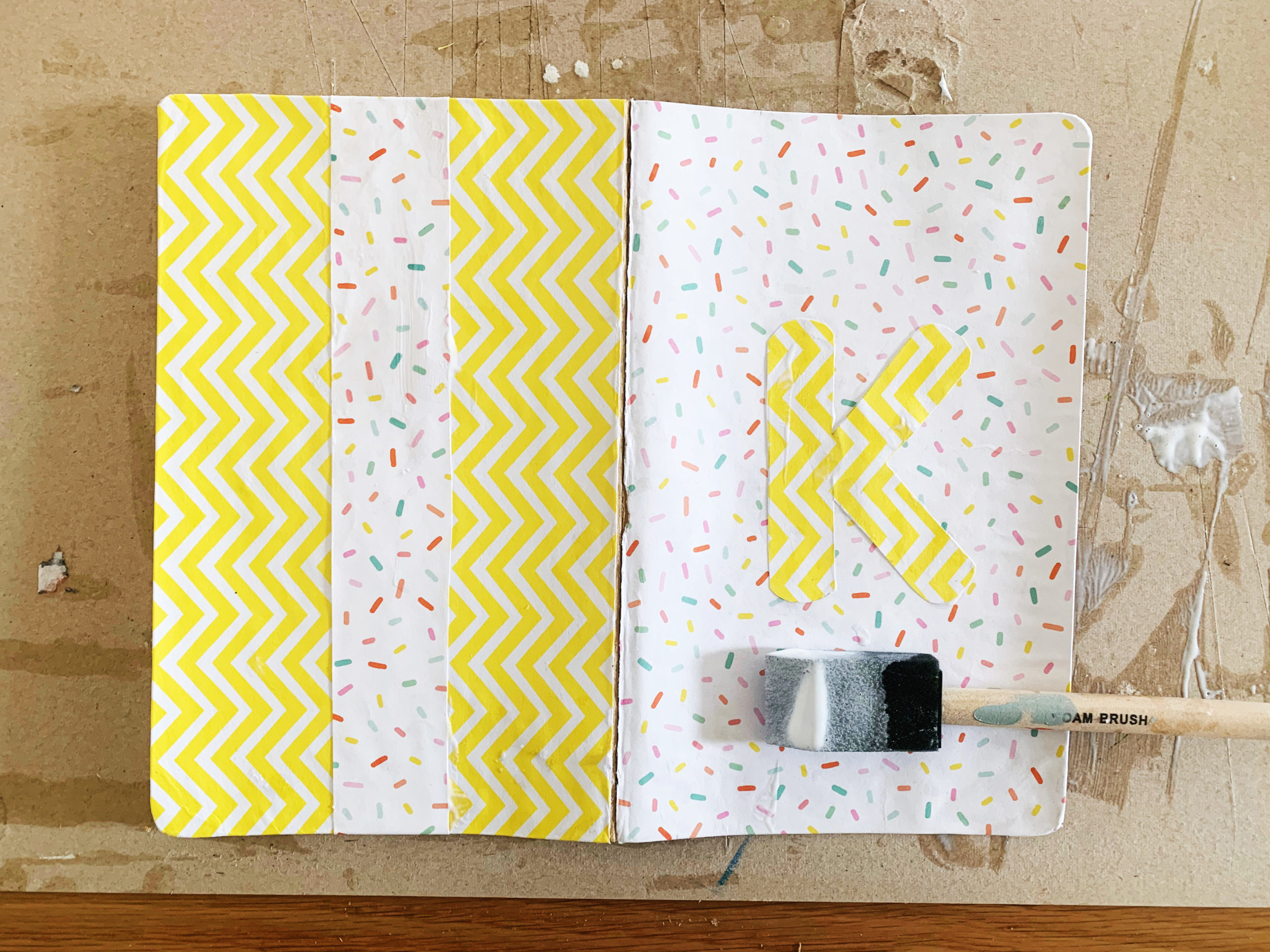
Step 7: Once you are done with your embellishments, seal the notebook with one final coat of Mod Podge over the front and back of your notebook. Pro tip: Use enough Mod Podge to cover everything, but don’t clump it on. Just paint a nice smooth layer. This will help with drying time, too!
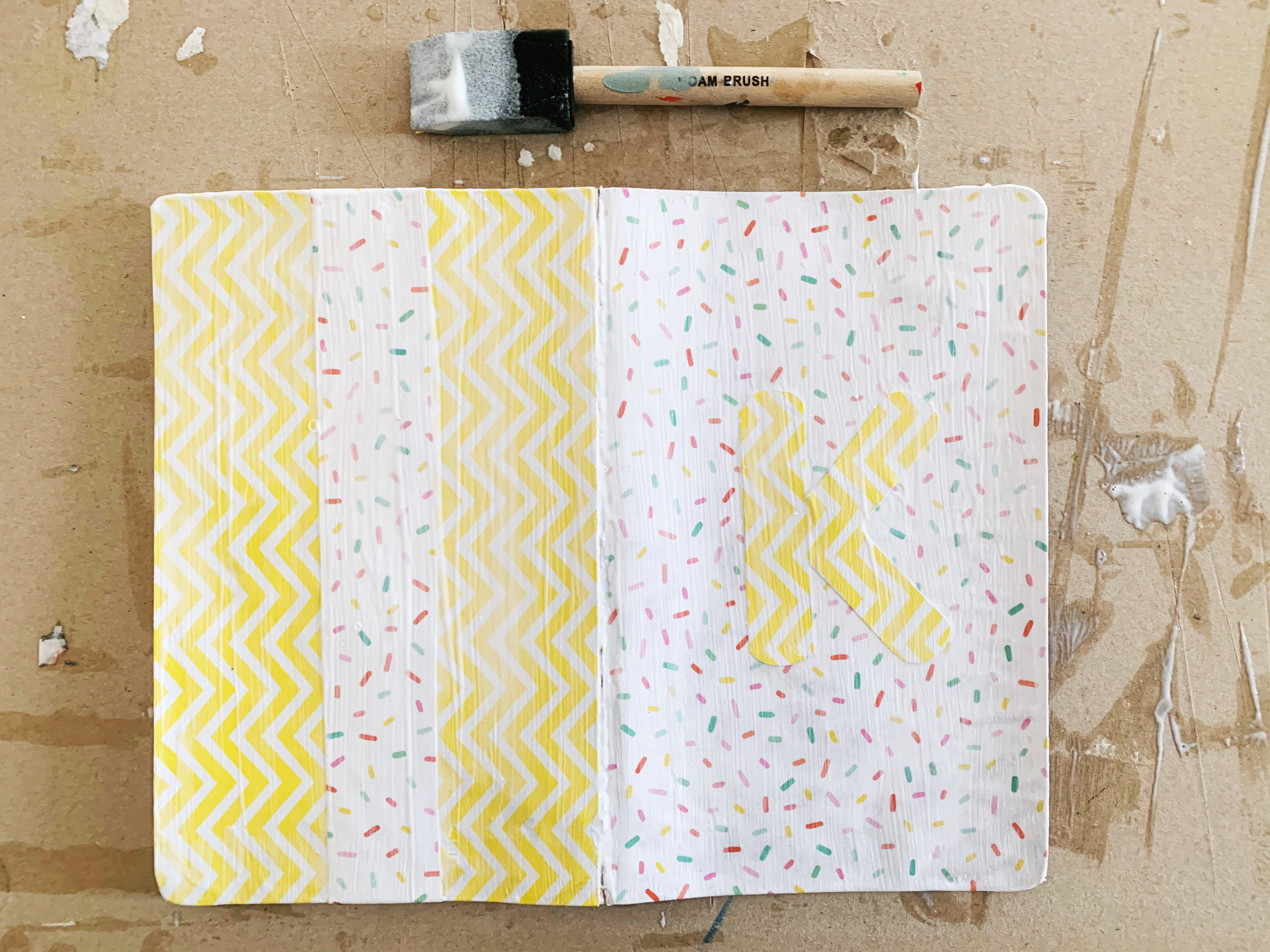
Once the Mod Podge is fully dry (usually takes about 15-20 minutes), your new notebook is ready to go! Not only is this craft simple and inexpensive, it can make really cute customized gifts. There are so many unique ways to decorate your notebook. Let us know what you’ll be using your new personalized notebook for!
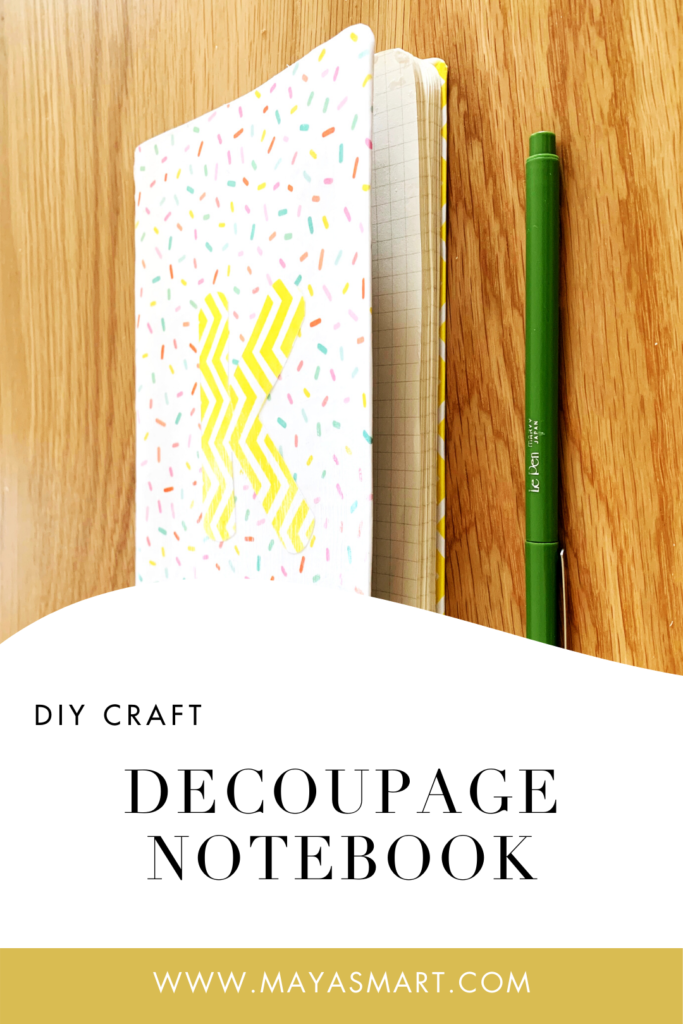
We love upcycling the pages of unsalvageable books and magazines into homemade decor. It’s such a crafty and fun way to beautify our spaces, create a text-rich environment for the kids, and save a few trees while we’re at it. And some of the prettiest upcycled book-page decor we’ve encountered are these bookish blooms, a literary twist on classic paper flowers.
These DIY book-page blossoms are a fun craft to freshen your table or decorate for a special event. Display them in a natural wood bowl or scatter them along a table for a sophisticated, minimalist effect. String them together along a streamer and hang them for a festive look. Or attach them to a small wooden dowel in a vase—they can stand alone or add a cute touch to a bouquet of cut flowers. Tip: Combine all three flowers for a distinctive arrangement.
Book-page flowers also make unique decorations for a child’s birthday, spotlighting literacy and nature in one pretty package. You could even use them to top drink stirrers or a book-themed cake. (Complete the theme with our DIY bookmarks or honey-bear bookends as favors.) Ready to get crafting? Just click the links below for step-by-step tutorials with photos of each step.
I have to say, I was staying away from roses because of how intricate and delicate they look. I thought making a DIY paper rose was going to be so much harder than it turned out to be. So don’t shy away from this beautiful flower! If anything, it’s actually simpler than some of the other paper flowers. Modify this craft for kids by using glue dots instead of a glue gun and letting them color or decorate the flowers. Let their creativity soar—not all roses are red!
However you use them, these DIY book-page flowers are a lovely way to upcycle damaged or obsolete old books. There are many different patterns for book-page blooms out there, and this one makes a particularly elegant flower. Once you get the hang of making the petals, this craft goes super fast. Kids can easily help out with this project. I recommend making it a fun assembly line to make the petals and then just helping them with the hot glue gun for the finishing touch!
LITERARY-THEMED PAPER HYDRANGEAS
These DIY book-page hydrangeas make a full, pretty blossom that will bring a touch of spring into your home and highlight the written word at the same time. This book craft may be challenging for some younger children, so it’s a good project for one-on-one time with an older kid or for a little me-time. With just three steps, it’s pretty simple for bigger hands once you get the hang of it!
By Chrysta Naron
If your little ones are anything like those I teach as an early child educator, they probably get very bored very quickly sitting still, especially when workbooks are involved. Alphabet Hopscotch provides important alphabet knowledge and letter sound practice—all while reinforcing gross motor skills and getting kids some much-needed exercise and fresh air.
But most of all, this easy alphabet game is a fun way to bolster literacy while on the move with wriggly kids. This game can come to life in just a few minutes with just a single piece of chalk for supplies. Talk about easy. (Or, if you can’t get outside, you can easily modify the activity for indoor play.) So let’s get hopping!
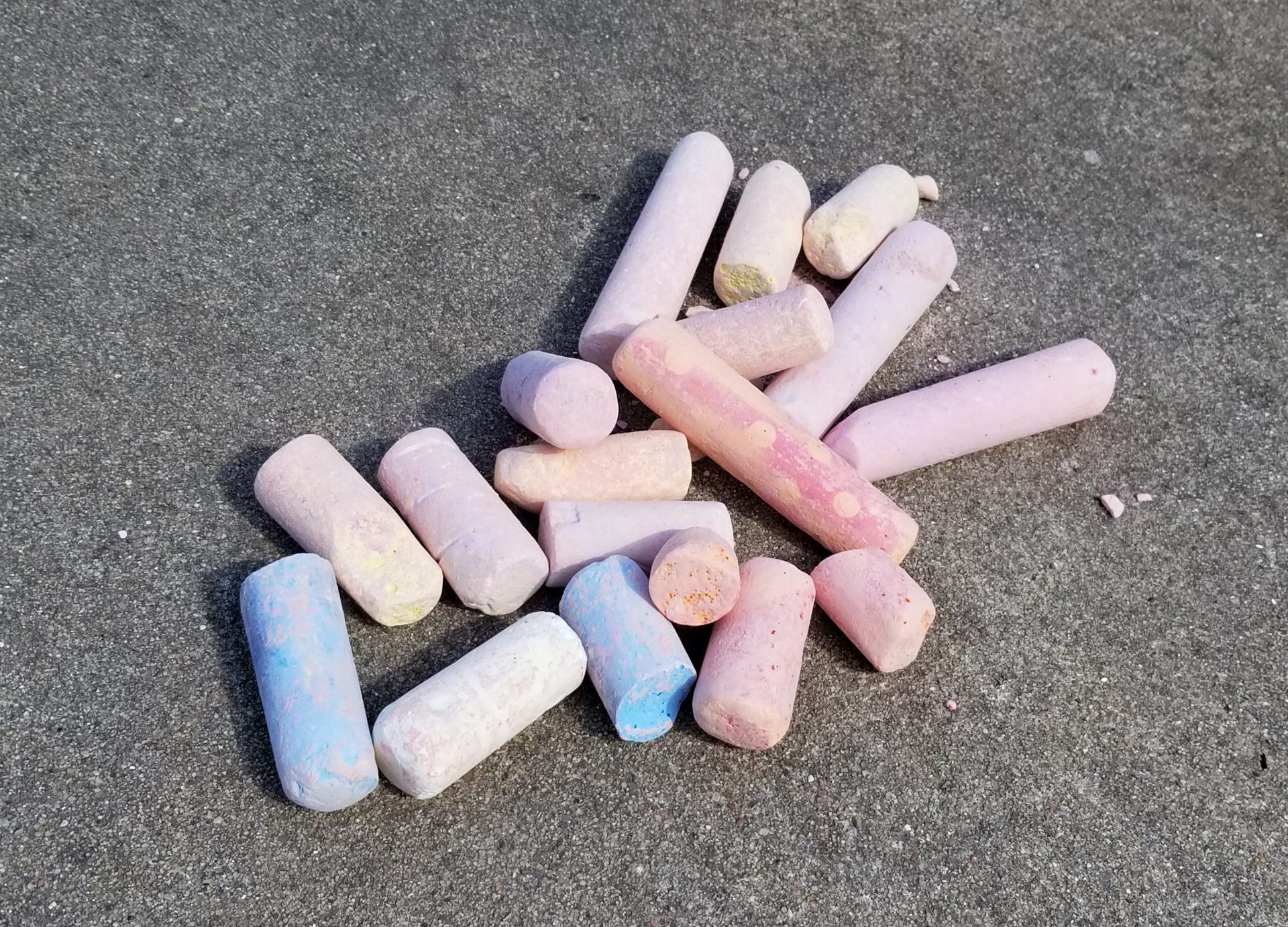
Materials Needed:
- Chalk (or masking tape for indoors)
Optional Materials (for indoors game variations):
- Paper
- Marker
- Tape
Cost: If you have a piece of chalk on hand, this activity will cost you nothing!
Step 1: Using the chalk, draw a hopscotch court on your driveway or sidewalk. (If you don’t have access to pavement, no worries! You can replicate this activity with masking tape on the floor.)
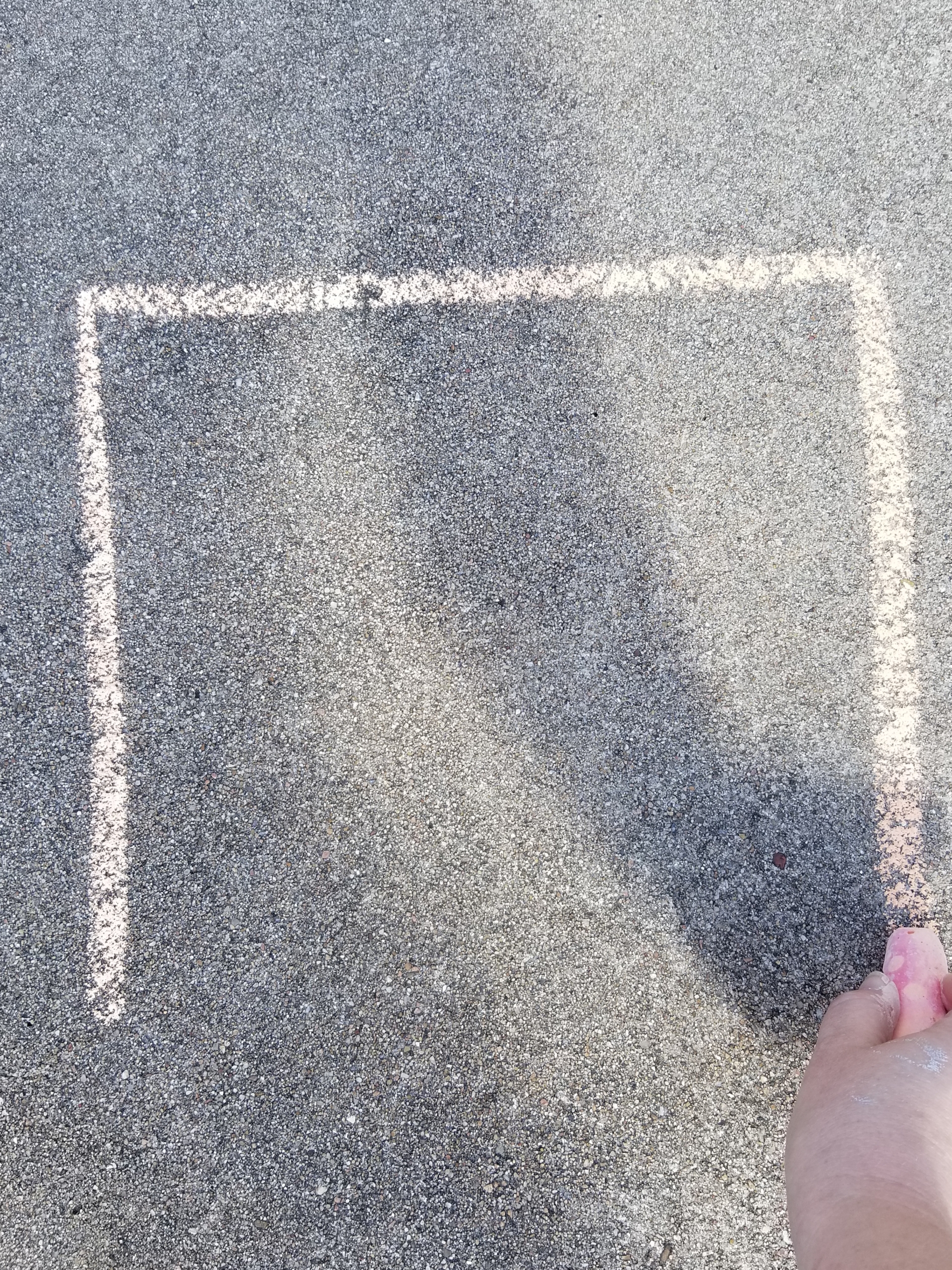
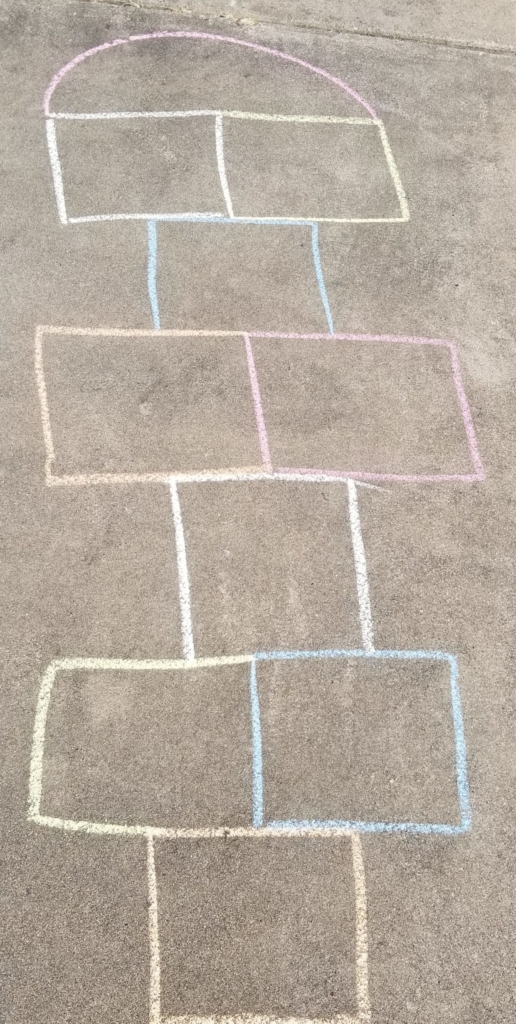
Step 2: In each square, write a different letter. I recommend using lowercase letters, because that’s what kids encounter most when they start reading—even though activities for youngsters typically feature uppercase letters, leading most kids to master those first. But you can use uppercase, lowercase, or a mix of the two; the main thing is to adapt to your child.
Similarly, choose letters that will reinforce and expand your child’s knowledge. For new alphabet-learners, start with their own first initial plus easier to learn letters such as O, A, B, C, and X. Research suggests that kids tend to pick up these letters first because of the frequency of exposure to them (ABC), and because of the distinctiveness of their shapes (O and X).
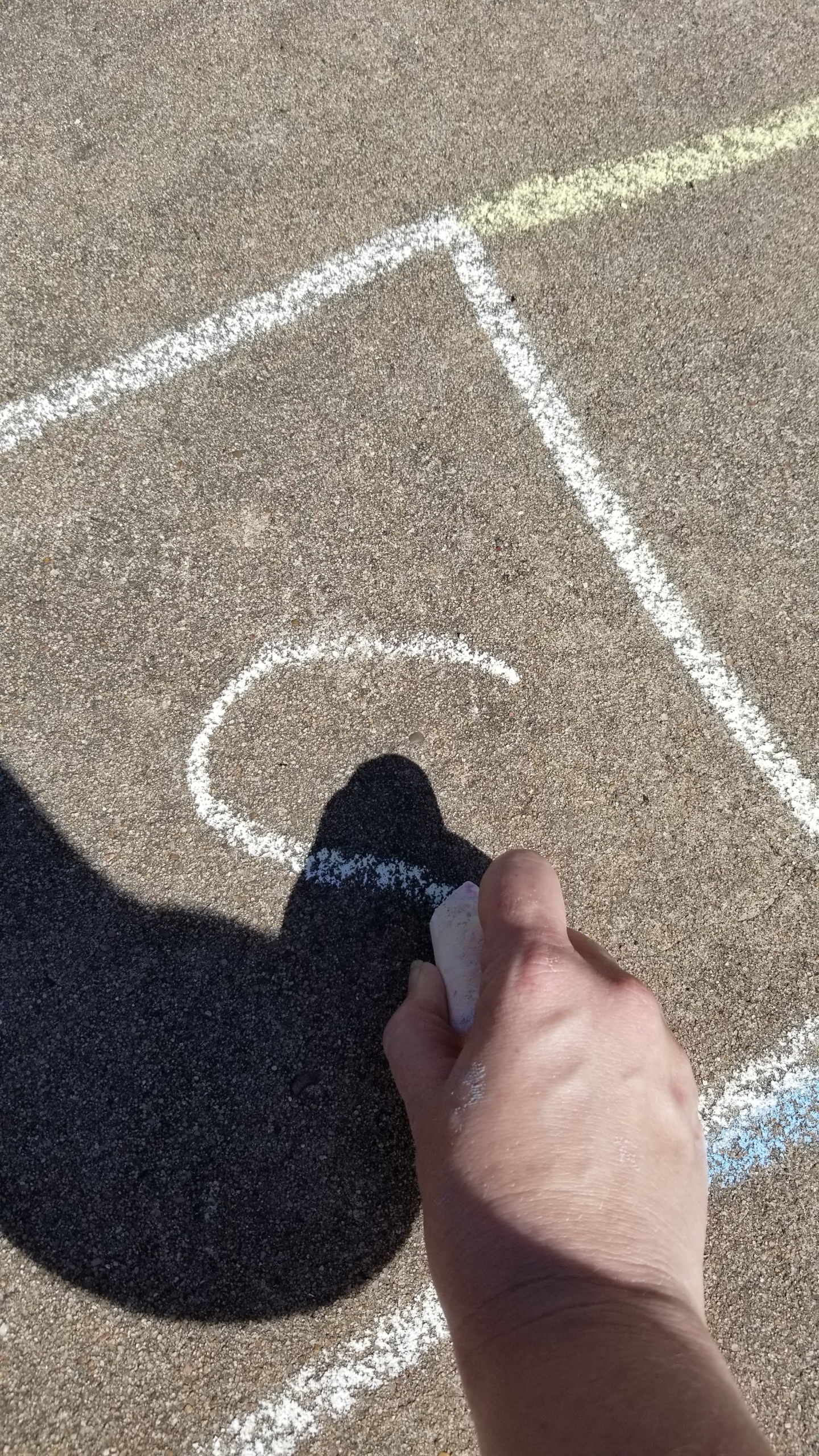
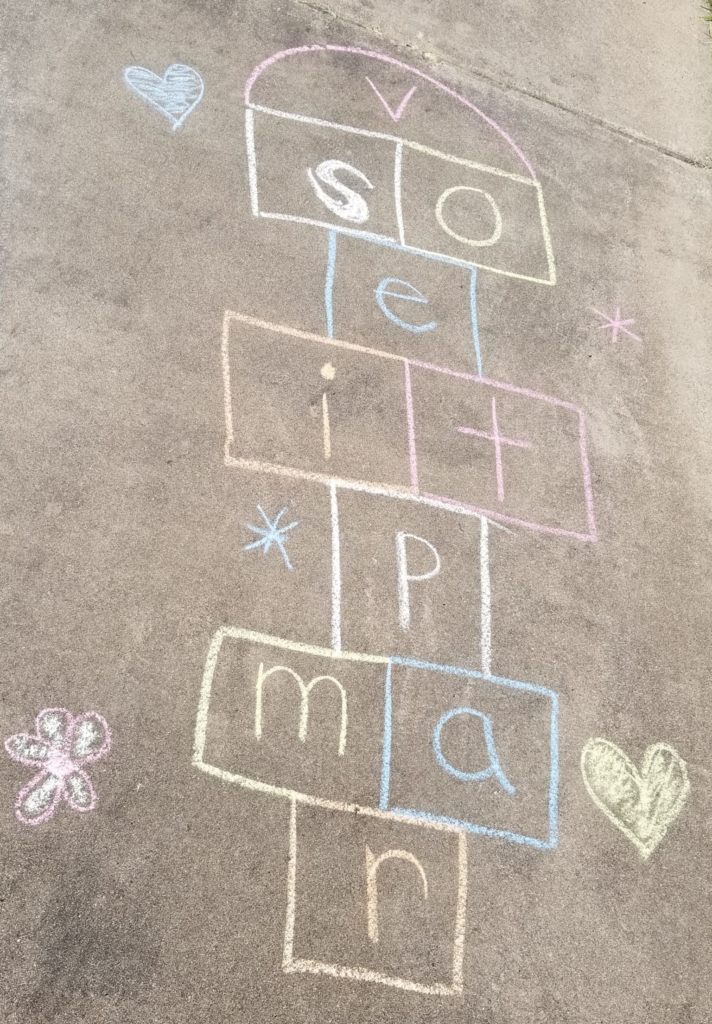
Step 3: Invite your child to stand at the bottom of the court. Call out one of the letters on the hopscotch and ask them to jump to that letter. They can jump on one leg or two (again, adapt the challenge to the child).
Step 4: Repeat until all the letters have been called out. Feel free to go again if everyone is having fun!
Step 5: Now it’s time for round 2! This time, call out the sound of the letter. Use short vowel sounds (e.g., the way “a” sounds in “cat”) and, for consonants that can be pronounced more than one way, use their “hard” sounds (the way “g” sounds in “get” and “c” sounds in “car”). This time, have your child jump to the letter that matches the sound.
You can easily modify this game for children with limited mobility. For example, ask them to direct you to where to jump, or invite them to drop a ball or toy onto the correct letter. You could also draw a miniature hopscotch on a piece of paper and have them move a pawn or figurine to the letter, or color the box with the letter in it. It’s all about finding ways to make literacy learning interactive.
What’s more, you can adapt Alphabet Hopscotch to whatever skills you want to work on. As your child’s reading skills evolve, the game can evolve too. Add letter blends, soft consonant sounds, sight words—even numbers or beginning math facts. The key is to keep kids moving and mastering those new skills, as you help them build a healthy body and mind!
As lovers of literature, tossing books into the recycling bin can feel almost sacrilegious (even that dog-eared paperback that’s lost half its pages). And the nature-lovers in us rebel at the idea of crafting and decorating with brand-new paper when stacks of books and magazines are tossed every day. That’s why we celebrate the idea of giving unsalvageable and obsolete books a second life by upcycling them into book-page crafts.
Creating decorative and useful objects out of old book pages is a beautiful way to share our love of the written word and create a literacy-rich environment for kids—all while saving some trees. It’s also a fun, affordable, and eco-friendly way to deck the halls for special events. So we decided to share seven of our favorite DIY book-page crafts. These are fun activities for all ages that you can do for or with children. Just click the links for tutorials with easy, step-by-step instructions, illustrated with photos of each step.
Tip: Cutting up a book can feel wrong, we know. Choose outdated law, science, or medical texts and irreparably damaged books of all kinds for guilt-free upcycling. Used or outdated workbooks are also great candidates for book-page crafts (for example, check out the last project in this post).
Making your own streamers and decorations out of recycled paper is a beautiful way to keep birthday parties and other happenings eco-friendly. This DIY pinwheel banner upcycles book pages to create some lit-themed decor for your next event or photo shoot. Create an elegant black-and-white look with plain-text pages and white ribbon, or add some festive color with bright ribbon or illustrated pages (obsolete encyclopedias and nature guides can be great sources).
Cooling down on a hot day has never been cuter! Kids will love this craft to create their own personal fans. These sweet book-page fans are easy to make and fun to use. You can keep them simple or get as detailed as you want in coloring and decorating them. Get creative with stickers, glitter, or whatever else you have on hand. You could even glue feathers along the top of your fan! Store finished fans in a vase as a crafty centerpiece, ready for hot weather, or take them along to keep kids (or yourself!) comfortable on outings. A literary way to keep your cool!
You can string these pretty origami butterflies along a garland, sprinkle them over a table or shelf-top, or perch them in a houseplant or festive tree. What a fun way to celebrate nature and reading! This DIY book-page craft is easy once you get the hang of the folding, and a fun project to do with kids. Our post breaks down the folding into easy-to-follow steps, with pictures of each step. So go ahead and get crafting!
When kids aren’t together, sending hand-written notes is a great way to stay connected, not to mention lots of fun for both sender and receiver. Writing good, old-fashioned letters is also the perfect literacy activity for children—the kind they don’t even notice is educational. And this DIY book craft to make miniature origami envelopes will motivate little and not-so-little penpals alike. They also make adorable holders for invitations, thank you cards, or cards to mark a special occasion.
Looking for a creative way to decorate? From book club to birthday celebrations, you can customize this book-page banner for any holiday or theme. It’s easy to make and kids can dive right into this craft. Have them spell out their name on the banner and hang it in their room, or make one to celebrate a relative, friend, or favorite teacher. Great for a special event or to give your daily spaces a fun facelift.
This cute twist on the classic apple-for-the-teacher theme creates a decorative apple from upcycled book pages. Help kids make them as teacher appreciation gifts, or to decorate their desk at home. You could even scale down the size and turn them into ornaments that can hang along a garland or off a tree. This DIY book craft is inexpensive and fun!
Got a pile of filled-in workbooks headed for the bin? With this kid-friendly DIY book craft, you can upcycle them into a beautiful woven basket instead. Use it for decoration, or as a new place to gather office clutter. What better way to organize a student’s home workstation? Kids will be proud to see their hard work put to use to create an eco-friendly study space—ready for their next learning endeavors!

